GBCSA turns

 Official publication of Green Building Council South Africa
Official publication of Green Building Council South Africa
IMPACT 20
15 LIVING BUILDINGS
DO GREAT THINGS EVERY DAY

Old Mutual Life Assurance Company (SA) Limited is a licensed FSP and Life Insurer.

We recognise the interconnectivity between the economic, social and environmental systems we operate in and the urgency to transform our collective growth path.
OMBDS 08.2022 C6334 We are committed to driving a more socially inclusive, low carbon and resource efficient Africa. Visit oldmutual.com for more information.
Brown gordon@greeneconomy.media
Solomons danielle@greeneconomy.media
Knipe
Taylor
Mokopane
Resourcing (Pty)


t/a GreenEconomy.Media Reg no. 2005/003854/07

ALL THOUGHT LEADERS

2 POSITIVE IMPACT ISSUE 20 Consulting Engineers South Africa Professional Membership Partners All Rights Reserved. No part of this publication may be reproduced or transmitted in any way or in any form without the prior written permission of the Publisher. The opinions expressed herein are not necessarily those of the GBCSA or the Publisher. All editorial and advertising contributions are accepted on the understanding that the contributor either owns or has obtained all necessary copyrights and permissions. GBCSA and the Publisher do not endorse any claims made in the publication by or on behalf of any organisations or products. Please address any concerns in this regard to the Publisher. Chief Executive Officer Lisa Reynolds Finance & Operations Manager Levinia Palmer Editor Alexis Knipe alexis@greeneconomy.media Director Danielle Solomons dani@positive-impact.africa Editorial Contributors Alan Cameron Kim Maxwell Kim Hopfl Nicole Cameron Anne Schaeffer GBCSA Editorial Advisory Georgina Smit Jenni Lombard Jo Anderson Design and Layout Carla Lawrence, CDC Design Media Sales Tanya Duthie Gerard Jeffcote Glenda Kulp Vania Reyneke Nadia Maritz Cover photograph Waterfall Corporate Campus The official publication of GBCSA IMPACT ADVERTISE WITH US For advertising and sponsored content contact Danielle Solomons 081 7800 233 Advertising rates are discounted for GBCSA members and further discounts are available for booking multiple editions in 2023. TALK TO US Subcribe to newsletter | www.greeneconomy.media CALLING
+Impact Magazine, the official publication of the GBCSA, presents thought leadership from local and international green building commentators and practitioners, and showcases the excellent work of GBCSA members. Are you a thought leader in your relevant field? GBCSA members are invited to submit stories about projects, design concepts, materials, research and anything else that promotes a healthy sustainable built environment. Submit a 100-word description of your content idea to: alexis@greeneconomy.media Joint Publishers Gordon
Danielle
Co-Publisher: GEM Alexis
Production Administrator Melanie
Web Digital and Social Media Steven
MPeople
Ltd
RUNNER-UP PROPERTY NEWS WEBSITE OF THE YEAR 2022 RUNNER-UP PROPERTY PUBLICATION OF THE YEAR 2022
FOCUS ON RUNNING YOUR BUSINESS
The pay-per-print Canon eService is a one-of-a-kind service plan that enhances a company’s large format printer management. No need to worry about printer maintenance and focus more on your business.
Full service and maintenance pack
Real-time remote monitoring Shorter response and downtime
On-time consumable renewal Automatic provider notification
Cost and time efficiency
QUIETLY PRODUCTIVE imagePROGRAF TM SERIES
The imagePROGRAF TM Series is a quieter printer series that will unobtrusively fit into any work environment.

ADVANCED TECHNOLOGY FOR ACCELERATED PRODUCTIVITY imagePROGRAF TX SERIES
The imagePROGRAF TX Series are highly productive, multifunctional large format inkjet printers with improved usability and flexibility.

HIGH-SPEED, HIGH-VOLUME PRINTING imagePROGRAF TZ SERIES
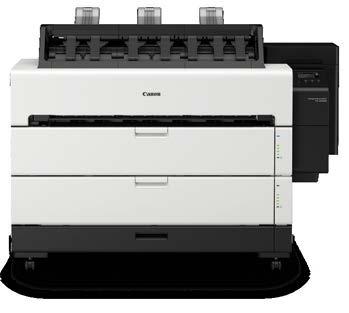
The imagePROGRAF TZ Series printers are designed to fast-track CAD and Poster production through advanced technologies.
For more information, scan the QR code or contact us at CZA-Marketing@canon.co.za

EDITOR’S NOTE
OUR EDITORIAL ADVISORY BOARD
MAKE AN IMPACT
JOIN THE REGENERATION MOVEMENT +Impact speaks to the plenary speakers of the 2022 GBCSA Convention
THE GBCSA MOVEMENT Happy Birthday GBCSA
THE PRECINT WITH A POSITIVE IMPACT The Precinct Unity building is the first development in Mauritius to achieve a 5-Star Green Star office design rating from GBCSA
A FINE-TUNED EXPERIENCE Waterfall Corporate Conference has been developed to be the “ideal place to play, work and stay in the heart of Gauteng”.
WHEN ZERO IS AN ATTRACTIVE NUMBER What solutions are available to building management that ultimately divert 100% of solid waste away from landfill?

IT’S INDUSTRIAL PROPERTIES’ TIME TO SHINE The GBCSA’s Existing Building Performance rating tool has been customised for industrial buildings
#WE ARE WATER But will this way of thinking last?
FRAMING THE NEIGHBOURHOOD

Unpacking the innovative ecodistricts concept that is developing collective, sustainable planning on a neighbourhood scale.
A BETTER PLANET Nedbank tells us that ESG criteria should become part of a company’s business ethos rather than be used as just a marketing tool
GREEN GLOBE
7
9
12
16
32
40
52
62
72
80
84
92
96
4 POSITIVE IMPACT ISSUE 20

H e l l o , s uns h in e . O u r j o u r ne y t o c a rb o n - n e u t r a l st a r ts h e re . Growthpoint Properties is committed to reducing our carbon footprint. A critical component of our environmental strategy, we have leveraged crucial data from 2020 to set clear targets to reach our goal of being carbon-neutral by 2050. E n e r g y e ffici e n c y a nd re n ewa b l e e n e r g y g e n e r a ti o n h a ve b e e n i d e n tified a s two a re a s w h e re w e c a n m a ke a s i g nifi c a n t impac t w h e n i t com e s t o c re a ti n g s p a c e s fo r p e op l e a n d t h e e n v i ro n men t t o thr i ve




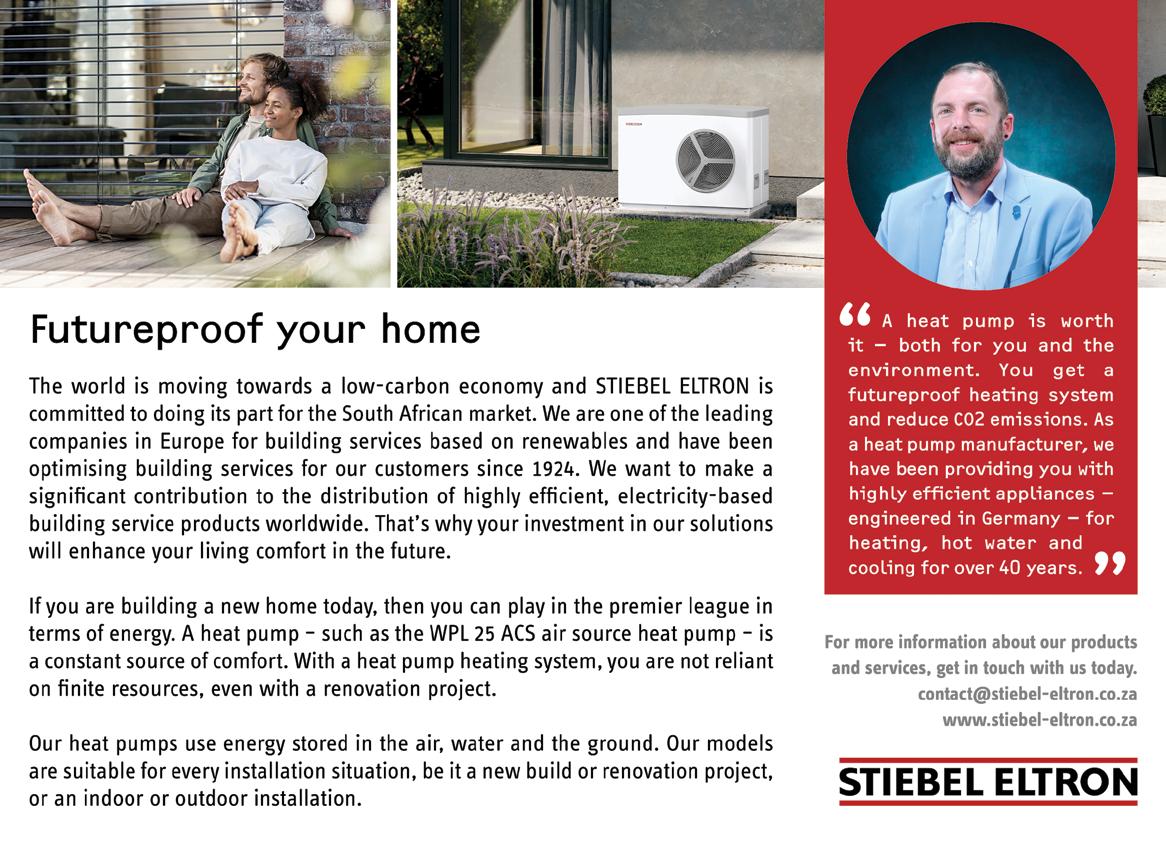
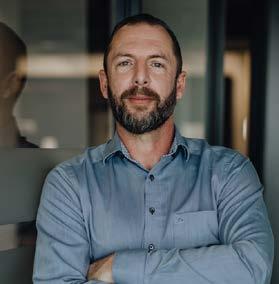
GreenBuilding Council South Africa celebrates its 15th anniversary. Its pioneering transformation of the South African property sector has yielded significant results that have driven measurable impact not only in terms of certifications but also in training, accreditation, job creation and climate change mitigation (page 32). +Impact Magazine extends a heartfelt Happy Birthday to GBCSA. We wish you many, many more successes such as the ones accomplished in your first 15 years.
There is a growing consensus in the built environment that there is a “regeneration gap” in building and that we urgently need to expand our thinking on sustainability to thinking regeneratively when we look to the future of green building. The regeneration movement is about building a re-generation of people that moves beyond sustainability towards transforming the built environment for people and planet to thrive. On page 16, +Impact speaks to the plenary speakers of the 2022 GBCSA Convention.

In this issue of +Impact, we look at The Precinct Unity building, which is the first development in Mauritius to achieve a 5-Star Green Star office design rating from GBCSA. It’s also the highest-rated green office development in the Indian Ocean Islands region (page 40). And we showcase the Waterfall Corporate Campus on page 52.
We also look at a South African first for the continent and unpack the innovative ecodistricts concept that is developing collective, sustainable planning on a neighbourhood scale (page 84).
The goal of net-zero waste in building operations is to eliminate operational waste and to ensure that all waste is repurposed or recycled. It embodies the concept of circular economies that forms part of our definition of what it is to be sustainable. The question is, what solutions are available to building management that ultimately divert 100% of solid waste away from landfill? (Page 62)
Industrious and thriving local economic activities are bound together by the network of buildings near and far. GBCSA’s Existing Building Performance rating tool has been customised for industrial buildings, potentially decreasing the cost of doing business and increasing the economic benefits (page 72).
 Alexis Knipe Editor
Alexis Knipe Editor
Living Buildings
POSITIVE IMPACT ISSUE 20 EDITOR’S NOTE
Enjoy this issue +Impact Magazine!












































Gyproc is proud to announce an improved RhinoGlide® formulation. RhinoGlide® has been upgraded to deliver a smoother finish. Get a smoother finish with our new RhinoGlide® RhinoGlide® is a quick setting drywall joint filler for patching, bedding and finishing SKU DESCRIPTION SALES UNIT BAGS PER WEIGHT BAG DIMENSIONS EAN CODE OF MEASURE PALLET (KG) LXWXH (MM) CODE 20217 RhinoGlide® 20 kg Pallet 40 800 370 x 345 x 125 6007353003003 20218 RhinoGlide® 10 kg Pallet 80 800 420 x 450 x 125 6007353002990
EDITORIAL ADVISORY BOARD
BOB VAN BEBBER

Bob van Bebber, a senior director at Boogertman + Partners spearheads the conceptualisation and delivery of many of the practices’ large complex projects. From Soccer City, the main stadium for the 2010 FIFA World Cup, to large mixed-use precincts as well as the largest single tenanted corporate head office in the southern hemisphere for Discovery Health. He was recently recognised by the South African Professional Awards as the winner of the Professional of the Year: Architecture Class Award as well as the Overall Professional of the Year for 2019. Van Bebber’s passion extends into urban design, interior design and education.
GRAHAME CRUICKSHANKS
Grahame Cruickshanks has worked as a professional architect, sustainability consultant and management consultant with 20 years of experience in the design, construction and property industry. Focusing much of his career on green buildings and an expert in his field, he has worked on a variety of Green Star and BREEAM certified projects and other building projects in South Africa, Singapore and the UK. Prior to joining Growthpoint Properties as the head of sustainability and utilities, Cruickshank’s previous roles included managing executive for market engagement at the GBCSA and manager at EY’s Climate Change and Sustainability Services.
JUTTA BERNS
Jutta Berns is an industry leader and one of South Africa’s first internationally accredited green building professionals, establishing her company Ecocentric in 2007. She has degrees from the Universities of Bonn (Germany) and Cambridge (UK), and a diverse blue-chip client base. Berns specialises in sustainable and net-zero solutions for large property portfolios. She has several LEED Platinum and 6-Star Green Star projects in her portfolio, is a GBCSA faculty member, a Green Star Assessor and GBCSA TAG member, and winner of the Gauteng Entrepreneur of the Year 2019 Award by the Women’s Property Network and 2019 winner of the Established Green Star Awards by the GBCSA.

MANFRED BRAUNE
Braune currently holds the position of Director: Environmental Sustainability at the University of Cape Town (UCT), where he leads the strategy and implementation of environmental sustainability across all spheres of the university since early 2019. He has also served as a non-executive director of GBCSA in a voluntary role since August 2020. Braune’s background is as a professional engineer, having worked at WSP Group for over 10 years as a consulting engineer, where he then started and led WSP’s green building business for three years and then worked for the GBCSA for 10 years.

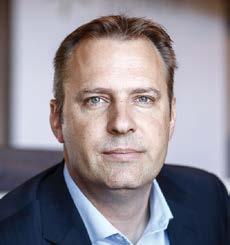
MARLOES REININK
Marloes Reinink is owner of Solid Green Consulting. With an academic background in innovation and architecture, she has been working as a sustainable building consultant for more than 15 years in South Africa and Africa. She founded Solid Green in 2010, which is one of the leading sustainability consultancies in Africa and achieved its 100th green building certification in October 2020. Reinink’s passion is advocating for a greener built environment and she recently started GreenED, an online education platform for sustainability in the sector. Reinink is an ambassador for the International Living Future Institute; a Living Future accredited professional; and a facilitator of the SA Collaborative Network for a Living Future.

IMPACT 9POSITIVE IMPACT ISSUE 20
www.boogertmanandpartners.com www.growthpoint.co.za www.ecocentric.co.za www.solidgreen.co.za https://www.uct.ac.za/main/explore-uct/sustainability
Welcome to one of Africa’s greenest neighbourhoods
THE V&A WATERFRONT, GOING GREEN ISN’T JUST A

IT’S EVERYTHING
The journey of a thousand miles starts with a single step. The V&A Waterfront started on a sustainability journey in 2008 by introducing greening initiatives across our 123 hectares. With our
intentional designs and real fire in the belly, we have significantly increased energy efficiency, water savings and waste recycling. As a business with open arms, we honour and build up our
community by promoting inclusive and sustainable economic growth, full and productive employment and decent work for all, aligning the united nation’s sustainable goals with our own.
WE’VE COME A LONG WAY ON OUR JOURNEY:
AT
THING.
. Green-Rated Buildings 16 Reduction In Water Consumption 61% Invested into energy efficiency 38M In reduction in carbon emissions 8 Yrs+ Of waste diverted from landfills annually 1595T
A FUTURE-FOCUSED COMMUNITY
We are an beloved destination and business hub that welcomes over 24 million visitors a year. Our unique waterfront neighbourhood is also home to many seeking a different,
more connected way of life. We have fostered a vibrant community that drives and supports environmental programmes that improve the overall standard of living while
OUR JOURNEY CONTINUES
Our goal is to achieve Carbon neutrality by 2035. This is how we’ll get there:
A non-negotiable Green Lease Agreement
reducing costs. And we’re not done yet: with tomorrow in mind, we’re constantly seeking new ways to enhance our sustainability strategy and make the impossible, possible.
A commitment to ensuring all new buildings and developments achieve a Net Zero Green Building Council of South Africa Rating

An externally audited Heritage Environmental Management system
To help the V&A Waterfront reduce its carbon footprint, we have many innovative plans and projects in the pipeline. For now, we’re proud to announce that we’re establishing

A Pyrolysis Waste-to-energy Plant, designed to divert waste going to landfills and reduce our water and energy burden. Once this project is up and running, we will be able to produce
almost all the power needed to run a 3.3ML/day desalination plant. A major milestone on our journey towards a greener tomorrow!
MAKING AN IMPACT
BUILDING BETTER
JSE-listed Balwin Properties continues to distinguish itself in the green housing market by stepping up to ambitious carbon reduction targets validated by the
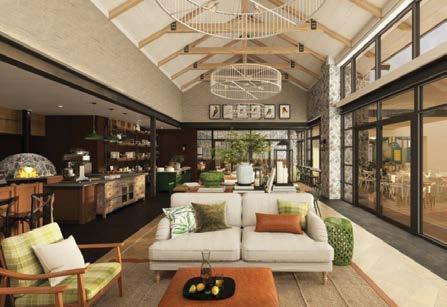
Science Based Targets initiative, a global body of 1 255 forward-thinking companies committed to halve emissions before 2030 and achieve net-zero emissions before 2050. The group has had its greenhouse gas (GHG) emissions reduction targets approved by the Science Based Targets initiative as consistent with reductions required to keep global warming to 1.5°C, the most ambitious goal of the Paris Agreement.
In terms of the near-term target, Balwin Properties commits to reduce scope 1 and 2 GHG emissions by 38% by 2030 from a 2021 base year, and to measure and reduce its scope 3 emissions. By 2050, the group commits to reduce scopes 1, 2 and 3 emissions by 90% from a 2018 base year. Scope 1 and 2 emissions result directly from company operations. As scope 3 emissions comprise the largest part of Balwin’s footprint, the company is encouraging its stakeholders to join in on the positive action.
NEW PRESIDENT FOR SAPOA Malose Kekana.
After a year as president elect for South African Property Owners Association (SAPOA), Malose Kekana, the GCEO of Pareto Limited was officially announced as president of SAPOA at its 2022 annual convention. Being the industry representative for an estimated 90% of the country’s commercial and industrial real estate companies, SAPOA’s mandate is to continuously endeavour to represent, protect and advance its members’ interests.


magazine and website won the runners-up in the categories of “Property Publication of the Year” and “Property News Website of the Year” at the annual SAPOA Journalism Awards for Excellence. The Awards are designed to applaud local media who use their words boldly to tell the truth and challenge the status quo.


GBCSA has implemented a system where Accredited Professionals are arranged in three distinct tiers dependent on qualification, experience and level of activity and engagement in the industry. The tiering system works as follows:
Accredited Professional Candidate (APc). Upon graduating and gaining six months of industry experience, an APc can go on to become an AP.
Accredited Professional (AP). An active status as an AP is maintained by achieving five to 10 points within a 12-month cycle. New APs score five points by passing their final assessment, this allows a 12-month grace period.
Accredited Professional Practitioner (AP+). An AP+ has demonstrated higher levels of activity through engagement with GBCSA by attending knowledge-sharing events in a 12-month period.
The Reid Lifestyle Centre, a Balwin development, achieved a 6-Star Green Star Public & Education Building (PEB) certification.
12 POSITIVE IMPACT ISSUE 20
NEWS
GREEN STAR AP TIERING
CPD ACCREDITED TRAINING FROM GBCSA ACADEMY
As the built environment is continuously evolving, it gets ever more important to emphasise the value of continuing professional development (CPD). CPD enables professionals to enhance their current skills and sets individuals apart in the job market.
GBCSA Academy is excited to share that its Green Star Accredited Professional, Green Star Professional Team Member and Energy Performance Certificate Insights training are validated by the South African Institute of Architectural Technologists. CPD certificates will be issued for Category 1 events to candidates who are registered with South African Council for the Architectural Profession.
SHATTERING THE GLASS CEILING
According to the latest figures released by StatsSA, women make up more than 50% of the South African population; and only 13% of registered persons within the built sector in 2021.
“Like any other professions in the country, the built environment sector is facing serious challenges: Slow pace of transformation, ageing personnel, shortage of critical skills and high unemployment rates, especially amongst our youth. It is important for the sector to take strides and develop strategies on how best to address crucial issues identified in the skills pipeline strategy for the built environment, especially gender representation, participation and retention”, says Msizi Myeza, CEO at the Council for the Built Environment (CBE).
The CBE believes achieving gender equality in the built environment requires a multi-pronged approach, combining hard and soft laws, strategies, including setting targets that are enforced and monitored. Therefore, the alignment between South Africa’s economic, gender and procurement policies becomes instrumental for the attainment of transformation in the built environment. This this can be achieved through the formulation of gender sensitive policy frameworks.

EMBRACING NET-ZERO TARGETS IN PROPERTY

Post-pandemic, the industrial property market is recovering well, seeing annual growth thanks largely to increased demand for logistics and warehousing driven by the growth in online shopping. New industrial development rentals are higher than ever before.
In sharp contrast, the office market continues to struggle with an oversupply of space, especially in premium nodes like Sandton. “Office development is still at a standstill, resulting in developers diversifying into the residential market with large-scale office conversions,” says Roxanne Fordyce, Cushman & Wakefield | BROLL. Poor office demand was exacerbated by the repeated lockdowns as companies started downsizing their office space, with some giving it up altogether. However, several corporates are now moving towards a hybrid model while some are even reverting to office attendance five days a week.
Michelle Jackson from WSP says: “In 2022, loadshedding is still here and will be for some time. Commercial and industrial property developments must continue to incorporate alternate or back-up power contingencies.”
“There are several options open to businesses,” Jackson says. “They can supplement traditional generator back-up power with renewable energy. Solar is the preferred solution because it is readily commercially available, cost-effective and seems simple enough to retrofit compared with other renewable solutions. However, it requires large amounts of space and the lighter steel frames of existing industrial buildings do not always allow for roof-top solar. As such, a hybrid system of solar with battery backups for continual operations is more likely to gain traction. The ability to wheel ‘green power’ through the grid allows businesses to buy clean energy and pay wheeling costs to Eskom.”
Businesses have the option to generate up to 100MW of renewable power without a licencing agreement. To reduce reliance on generator power, companies are prioritising their energy loads. For example, industrial businesses are
reviewing their processes to take advantage of off-peak power and are upgrading older equipment. Eliminating non-essential power loads makes a significant difference.
Jackson says, “Ultimately, the private sector must work with government and power supply authorities to find solutions to resolve the power issues.”
Fordyce agrees: “Globally, industrial tenants are looking for smart solutions found in new developments to meet demand for a reduced carbon footprint. New industrial developments present an opportunity for structural and technological advances in facilities with an emphasis on decreasing energy and water consumption and efficiencies in building design. Locally, GBCSA changes to the Existing Building Performance rating tool to allow for the inclusion of industrial facilities is indicative of the increased demand for greener factories and warehouses.”
“The increased cost of fuel is creating a tipping point that is pushing the industry to implement greater resilience but at lower operating costs. In turn, this allows net zero to gain momentum from an energy reduction perspective. It has become a global trend gaining local traction as developers and tenants look for greater resilience and less reliance on Eskom,” Jackson concludes.
13POSITIVE IMPACT ISSUE 20
NEWS

GREEN BONDS 14 POSITIVE IMPACT ISSUE 20
NEDBANK’S GREEN RESIDENTIAL BOND PAVES THE WAY FOR IMPACTFUL INVESTMENT IN A GREENER BUILT ENVIRONMENT
The built environment is one of the largest emitters of greenhouse gases. Depending on the source you consult, up to 40% of the world’s GHG emissions come from buildings, which makes a transition to an energy efficient and sustainable built environment a significant priority in global efforts to combat climate change and achieve net zero emissions targets by 2050.
Inthe South African context, this environmental sustainability prerogative to transform the built environment is overlaid by a further social imperative to deliver large numbers of affordable, quality, housing opportunities to addresses the massive, and still growing, housing backlog across the country.
As a bank with an established track record of green building leadership, Nedbank currently has exposure of approximately R25 billion to green-certified properties or buildings with sustainable features. It also partners with a number of property developers in the affordable housing space, to deliver energy- and water-efficient, EDGE-accredited* homes to first-time buyers who desire a greener living experience.
ADDRESSING THE HOUSING SHORTAGE
According to Genevieve Naidoo, Property Finance Divisional Executive at Nedbank CIB, these and many other investments into green buildings have the dual impact of giving effect to Nedbank’s purpose to use its financial expertise to do good within the built environment sector, while also helping to address the housing shortage. “Nedbank has a long history of funding green and sustainable buildings that improve the quality of life for their occupants, while at the same time reducing carbon emissions and other negative impacts on the environment,” Naidoo explains. “In recent years, we have focused on building our green building leadership position as one of the ways we can make a meaningful contribution to the achievement of the United Nation’s Sustainable Development Goals.”
At the end of 2021, Nedbank cemented this commitment, and its standing as a leading funder of sustainable buildings, when Nedbank Commercial and Investment Banking (CIB) structured and arranged a R1,09bn green residential development bond and listed it on the Sustainability Segment of the JSE, which serves as a platform for raising capital for green, social and sustainable investment projects.
This innovative instrument is a first of its kind from a commercial bank in Africa, and was the result of a collaborative effort with the IFC to develop a blended-
finance solution that would enable the scaling up of green building financing, particularly in the residential sector. A unique feature of the bond was the training element. “We identified that, in order to accelerate our green journey, we need to demonstrate the highest levels of excellence in our field,” Naidoo says. “So we negotiated EDGE-expert training through the IFC for both staff and clients.
SUCCESSFUL DECARBONISATION
Green building finance is critical to the successful decarbonisation of South Africa’s built environment, Naidoo says, and this green residential bond delivers on our responsibility in this regard by providing Nedbank clients who are developers and investors in the affordablehousing segment with a compelling funding solution for green-accredited homes in residential developments aimed mainly at low- to middle-income earners.
Naidoo’s sentiments are echoed by Arvana Singh, Head of Sustainable Finance Solutions at Nedbank CIB, who points out that the green residential bond builds on Nedbank CIB’s established reputation as a sought-after funding partner for sustainability-linked funding in a broad crosssection of economic sectors across Africa, notably mining and resources.
Just some of the sustainability-focused deals that Nedbank CIB has been instrumental in concluding in recent months include: structuring an US$80m multicurrency revolving credit facility for Gem Diamonds and Letšeng Diamonds; arranging a R6bn rand guarantee facility for Implats; acting as global coordinator and sustainability facilitator for R10bn rand in debt financing for Harmony Gold; and arranging a US$165m sustainability linked facility in favour of Trafigura, one of the world’s largest independent oil and metal traders.
“The green residential development bond is a prime example of how the capital markets can, and should, be leveraged as a vehicle for impactful sustainable finance,” Singh says. “Not only to move sustainable development forward in all economic sectors, but also to attract investment inflows to the continent, which can help to fuel its economic growth going forward.”
*Excellence in Design for Greater Efficiencies
GREEN BONDS 15POSITIVE IMPACT ISSUE 20
REGENERATION Join the MOVEMENT
There is a growing consensus in the built environment that there is a “regeneration gap” in building and that we urgently need to expand our thinking on sustainability to thinking regeneratively when we look to the future of green building. The regeneration movement is about building a re-generation of people that move beyond sustainability towards transforming the built environment for people and planet to thrive. +Impact speaks to the trailblazers of this re-generation.

GBCSA 16 POSITIVE IMPACT ISSUE 20
Lisa Reynolds was the driver for the drafting of Energy Efficiency Standards and Regulation for Buildings and has been involved in energy efficiency since 2003. She serves on many committees in the South African Bureau of Standards and within the energy management professionals’ space. Reynolds was president of the South African Energy Efficiency Confederation (SAEEC) and the Energy Services Companies Association (ESCo).
Reynolds has assisted the South African government with its green building framework policies, energy efficiency tax incentives and efficiency strategies. Her passion for the “green space” started with the birth of the Green Building Council in 2007. She served on the board and the technical committee of GBCSA, as well as on several technical working groups for rating tools and criteria.

LISA
LISA REYNOLDS
CEO of Green Building Council South Africa
Please tell us about your personal experience. When and how did your passion for sustainability arise? I have always had a passion for not wasting resources. My “formal” path to the sustainability place started in 2003 when I was asked to drive the writing of standards for energy efficiency for buildings. It was a natural progression from there to become part of the Green Building Council at conception. I first contributed as part of the Technical Working Group for some of the rating tools. I later became a board member. And in June 2020, I was appointed as CEO.
How is the conversation about sustainability changing? In 2007, (and definitely in 2003) all who were involved in this sustainability space were perceived to be pathfinders or pioneers. The forthcoming shortage of electricity was predicted in 2003 already but wasn’t yet the stark reality of loadshedding that we live through currently.
GBCSA had many partners in the pioneering stage who managed to lead and demonstrate the value of having green-rated buildings. In the past few years, design and construction of buildings to a 4-Star Green Star rated level is almost a norm. People accept that climate change is here, and it is not something that should only concern us way into the future – the effects are real, acknowledged, present and need to be mitigated.
Green certified buildings are an asset in any building portfolio and the financial value of that is being recognised. They have value in being resource-efficient, as well as “future-proofed” buildings.

Please tell us about a project that you are fond of. I would be in deep trouble if I had any favourite projects. The only comment I will make is that I love projects that involve the community in some way and those that incorporate some of the socio-economic criteria.
What are the big questions in your industry? There is still a perception that building green is much more expensive. We regularly publish an independent “cost of green” research result which demonstrates that this is a misconception. Another is that the criteria that go into making up a green building are difficult to understand and have their own language. GBCSA is in the process of drafting a New Build rating tool (Version 2). In it, GBCSA has resolved to push the envelope on the levels of green, while making it more user-friendly.
What in your view constitutes the built environment and what should its goals be for ecological performance? GBCSA talks about the built environment and not just buildings. We look at precincts as well. Our New Build rating tool looks at the places around a building. Building green-rated buildings on every block won’t make a green precinct. GBCSA is looking at the built environment as a holistic entity. The C40 cities recognise that this holistic approach makes a city green. This will assist in the rolling out of greener spaces.
GBCSA 17POSITIVE IMPACT ISSUE 20
The industry and all stakeholders need to implement all interventions more quickly.
How should the built industry transform to mitigate the dire consequences of accelerating climate change? The industry and all stakeholders need to implement
Building green-rated buildings on every block won’t make a green precinct.
all interventions more quickly. Whether it be ensuring that buildings comply with the minimum requirements of legislation to rewarding buildings that go beyond the minimum. Sustainability is not an add-on. It must be inculcated into the design of buildings – whether new or being retrofitted/renovated. There is a huge proportion of existing building stock that needs to be made more resource efficient. We must check the infrastructure, repair it and maintain it. Not only will this stop leaks and waste, but it will assist in dealing with the consequence of major climate events that are happening regularly.
What are some of the challenges that practitioners in your field might face when implementing a living systems approach within the complexity of multidisciplinary design projects?

As I said in the question above, sustainability must be a fundamental characteristic of all projects – in approach, in design, in construction and in demolition. It should be a fundamental principle throughout the multi-disciplines. There is still a lot of training and education required to fully get to this level. However, it has improved over time.
Sustainability is not an add-on.
What will the city of tomorrow look like?
The cities will be net-zero carbon, water and waste. There will be minimal to no car traffic. The city will supplement its needs by having gardens within it. There will be wellmaintained green parks and spaces throughout.
How do we put regenerative development into action?
Who are the key players?
The conversations have long started. It now needs the implementation to commence.
What is the key takeaway you would like people to gain from the 2022 GBCSA Convention?
All attendees should feel that they have either learned something new or gained some new insights. They should depart from the Convention inspired and in the knowledge that GBCSA is playing a broad and prominent role in moving the South African built environment into a green future.
BRIAN
Brian Unsted has 23 years’ experience in the South African property industry with a particular focus on extracting optimal value from some of our most prestigious and successful shopping centres/mixed-use properties.

His chief responsibilities within Liberty Two Degrees (L2D) involve managing the assets of Eastgate Shopping Centre, Liberty Midlands Mall, Melrose Arch and several office buildings. Unsted is the champion for sustainability issues for the L2D fund and ensures synergy on sustainability issues between the property investment portfolio and the broader Liberty Group. When Unsted is not working or co-authoring a book, he enjoys running, mountain biking and travelling. His book Sandton Places was published in 2014.
BRIAN UNSTED Chairperson of GBCSA
Please tell us about your personal experience. When and how did your passion for sustainability arise?
I am not what you would call a natural “greenie”. My working career and studies are based in accountancy, and only about six or seven years ago, we placed a focus on sustainability in our company and I was tasked to manage this building block of our business.
There needs to be more standardised legislation across the globe on building practices that includes the incorporation of green elements.
18 POSITIVE IMPACT ISSUE 20 GBCSA
I was nominated onto the GBCSA board in 2017 and have had a rapid learning curve. I enjoy the vibrancy, passion and energy of the GBCSA directors, staff and the sustainability industry at large.
How is the conversation about sustainability changing?
It has evolved from a “nice to have” to a business imperative. There is more urgency and importance placed on sustainability, from consumers, boards of directors and investors. Seeking funds to execute on sustainability projects has become easier in many organisations, as medium-long term business continuity is considered.
Water and energy projects are equally as motivated through business resilience and continuity (loadshedding and water outages through aging infrastructure) as they are on sustainability requirements.
Please tell us about a project that you are fond of. It would have to be the Liberty Two Degrees’ first solar project at the Midlands Mall lifestyle centre, which was commissioned in 2019. From the feasibility stage and concept development to actually “seeing” the system generating power was very rewarding.

detergents and other operations can be aligned to good business practices and should be targeted by all property managers. New buildings, precincts and residential estates have more opportunity to make a greater impact through careful planning, embracing findings of environmental impact assessments, natural watercourses etc.
How should the built industry transform to mitigate the dire consequences of accelerating climate change? The construction industry from so-called cradle to grave, and a buildings lifecycle are huge generators of carbon at a global level. There is a responsibility on the industry to innovate and operate more efficiently. There needs to be more standardised legislation across the globe on building practices that includes the incorporation of green elements, especially energy and water savings, and around the supply of energy and water.
Certain products should be banned from being produced, so that consumers, purchasing managers and quantity surveyors are unable to buy inefficient products. There also needs to be a serious effort to re-educate architects, project managers, construction companies and facilities managers to align with best practices.
Midlands Mall lifestyle centre.
What are the big questions in your industry? I think the biggest one right now is for businesses to set realistic, yet achievable, stretch targets for sustainability goals, such as net zero targets. In many instances, setting targets for 2050 is too easy, and there needs to be a greater commitment, more urgency and the setting aside of capital to achieve goals.
Another issue is around the premium to build “green”. Many people still have the misperception that building sustainably is exorbitantly expensive, which it’s not. Also, on ESG, the weighting of the E, S and G components can’t be equally weighted in all jurisdictions, as specific economic, social and political factors impact areas of focus.

What, in your view, constitutes the built environment and what should its goals be for ecological performance? The built environment is all buildings, broadly split between commercial or business and residential buildings. With existing buildings, there are more limited opportunities to impact the environment, but the use of chemicals,
What will the city of tomorrow look like?

It will be designed around efficiency – transport, energy and water usage as well as waste disposal. Distances for staff to travel to places of work will be reasonable. Rapid and reliable public transport will be a vital component. Quality of life will be key with nature embedded into everyday life such as parks. Natural light and fresh, good quality air. It is likely to be highly tech-enabled. It must be designed for futureproofing for re-use and re-purposing to avoid wastage. What will happen to parking lots if we are all making use of driverless, drone-type Uber facilities in 20 years’ time?
I think the city of tomorrow will also be focused on people and based on walkability and human mobility, as opposed to vehicle and buildings focused. I am hopeful that there will be a greater focus on neuroscience and make these principals more broadly understood and mainstream.
What is the key takeaway you would like people to gain from the 2022 GBCSA Convention?
Be bold. Set ambitious targets. It can be done!
19POSITIVE IMPACT ISSUE 20 GBCSA
In many instances, setting targets for 2050 is too easy.
KHANYI
KHANYI MLAMBO
Founding president of South African Women in Construction
Please tell us about your personal experience. When and how did your passion for sustainability arise?
I was fortunate to start my career within the built environment as a young student in architecture where I learned about the impact of environmental factors on our lives. I was made to be conscientious about the importance of sustainability working at the largest brick manufacturing company where the nature of business and product had a direct impact on the environment.
The awareness of how the use of construction materials can potentially destroy or enhance the environment and people’s lives created an interest and passion for me to play my part in the field. My passion to protect the environment is also borne out of my participation in endurance sports around the world, where the consequences of unconscious consumption leading to waste are evident with every mountain climb and longdistance run on many trails and along the seas.
How is the conversation about sustainability changing?
It is encouraging that over the years, there is more consciousness of how our behaviour and attitude have a direct impact on sustainability. While Covid-19 shook the world to the core, I think it brought more urgency and elevation to the sustainability conversations because the evidence of what could potentially happen if we did not address the agenda was glaring and is still felt today.
The natural disasters that have been experienced in recent times have forced the sustainability topic to be at the top of the agenda across many quarters. The agenda
Khanyi Mlambo’s name has become synonymous with caring about giving back to communities while also being stellar in the corporate space. She has worn many hats over the years including being head of responsible business at Old Mutual, marketing executive and a board member at Corobrick as well as having various director roles at Standard Bank Group.

Mlambo is a founding president of South African Women in Construction and has held roles as an inaugural board member of the Construction Industry Development Board, a non-executive director at Motheo Construction Group and its chair of the social, ethics, and environmental committee as well as board member of the UN Global Compact (SA). She is a committee member of the Institute of Directors SA and a board member of the National Business Initiative and Southern African HIV and Aids Collaboration. Mlambo is also an associate of the Shared Value Africa Initiative and a mentor at Geo Counsellors.
Creating a long-lasting positive impact is core to who Mlambo is.
Congratulations to the GBCSA for reaching the milestone of 15 years in existence. The achievement gained over the years in influencing positive change within the built environment industry is evident in how the landscape is gradually becoming greener and eco-friendly in many aspects. Congratulations on being resolute and continuously delivering on what you set out to achieve since your inception. Your hand in driving sustainability is setting us on a path to leaving this planet better than we found it. Keep up the great work! - Khanyi Mlambo
has therefore gradually moved from being about the socalled “tree huggers”, certain demographics, age, class, or background to be centred at the core of business strategies, young people, communities as well as across the economy and divide.
There is an increased collaborated effort and commitment coordinated by organisations such as the National Business Initiative, Shared Value Africa Initiative and the UN Global Compact, including the GBCSA, which has given rise to the voice of business in driving sustainability for the sustenance of business and society. The game changer in the sustainability discussions is the progressive realisation that sustainability is not the responsibility of the government alone. Big business has a critical role to play especially in these challenging economic times.
INDUSTRY RESPONSIBILITY
There is therefore no better time than now for the built environment to lead with others, whereby professionals design, develop and construct buildings to enhance the concept of shared value, where business growth is sustained, at the same time incrementally advancing the lives of South Africans.
The creative nature of the built environment can play a part in the betterment of people’s lives, particularly in impoverished areas where there are challenges with necessities, especially shelter and water. The industry can contribute to building social cohesion through the

20 POSITIVE IMPACT ISSUE 20
The game changer in the sustainability discussions is the progressive realisation that sustainability is not the responsibility of the government alone.
CLIVE
empowerment of the communities where they operate ensuring that no-one is left behind. The industry can play a positive role in bridging the divide through communication, inclusion and transformational leadership.
What would you like people to gain from your participation at the 2022 GBCSA Convention? I trust that the key takeout from my talk will be an understanding that the restoration and recreation of a better planet for us all, starts with us.
CLIVE WILKINSON (USA)
Architect, designer, writer and strategist
Please tell us about your personal experience. When and how did your passion for sustainability arise? Sustainability is really a mindset. We need to live leaner lives on this earth to achieve an ecological balance. I was always inspired by the nomadic Tuareg proverb, “Whatever you do not require, will kill you”. It warns that if you overload your camel, you will never reach the oasis.
How is the conversation about sustainability changing? I think we are moving away from a simplistic checklist of products and materials, to better acknowledge local sourcing and most importantly challenging what we build. It is crazy when houses for two to four people of 12 000 square feet (1114.83m2) can be outed as LEED Platinum, when no-one needs that much space.
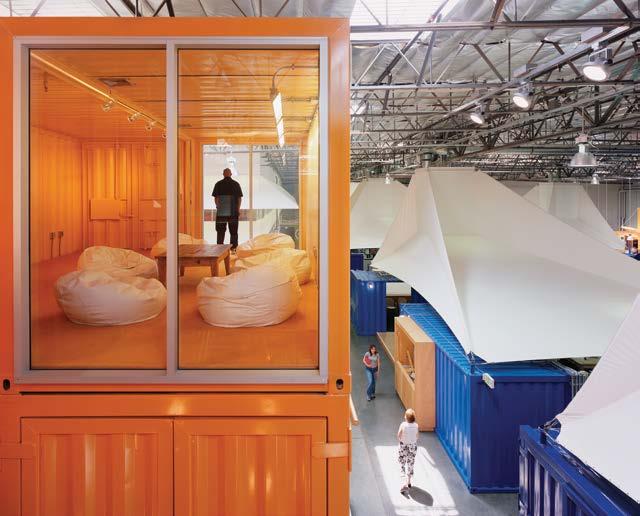
Clive Wilkinson has over 30 years of experience working at the intersection of urban design, architecture and interior design. His practice, Clive Wilkinson Architects, was established in Los Angeles in 1991 and is an acknowledged global leader in workplace design whose large-scale projects for clients such as Disney, Google and Macquarie Group have established new paradigms for building creative and educational communities.

A Fellow of the American Institute of Architects (AIA) and a member of the Royal Institute of British Architects (RIBA), Wilkinson is also a Fellow of the International Interior Design Association (IIDA) and a former board director of the AIA | Los Angeles. In 2005, he was inducted into the Interior Design “Hall of Fame”. Wilkinson was named a “Master of Design” by Fast Company in 2006, a “Pioneer of Design” by the IIIDA in 2011, and a “Legend” by Contract in 2018. In 2010, he was formally inducted into the GSA National Peer Registry as an advisor to the US government on architecture and design.
Please tell us about a project that you are fond of. We were challenged by a charity fundraiser client to design and deliver a large workspace project in a warehouse where the budget was so low there was no money for air conditioning (AC) in a hot climate or funds for any real build-out. We thought we had no project until we said, “Why does one need to air condition the whole space?” So, we targeted 40% AC workspace and left the remainder open, using large, prefabricated tents and shipping containers as anchors for the tents, which doubled as executive offices. We brought in the project at a super-low budget.
Here is a photo:

21POSITIVE IMPACT ISSUE 20 GBCSA
The creative nature of the built environment can play a part in the betterment of people’s lives, particularly in impoverished areas where there are challenges with necessities.
What are the big questions in your industry?
Our industry is the Global Workplace, and the biggest questions are how will the office be shaped in the future?
Fortunately, technology today has been able to support people in remote working during the pandemic and now can support permanent remote work from home. Insisting people come back to the office five days a week seems to be a thing of the past, so hybrid working is the new paradigm [in the US]. We fully support this and practice this ourselves as a more sustainable way of working. It cuts commute time and carbon footprint and enables people to manage themselves and their home lives more effectively. Therefore, better work/ life balance.
What in your view constitutes the built environment and what should its goals be for ecological performance?

As part of extending the sustainability conversation, I believe that clients and their architects should think about buildings differently. Buildings should be flexible for longer lives and to avoid redundancy.

How should the built industry transform to mitigate the dire consequences of accelerating climate change? Build once and renovate or replace 200 years later. Long life spans with durable materials, serviceable systems and natural ventilation, etc will help us to achieve an ecological balance.
What will the city of tomorrow look like?
I believe that we will break down the segregation of uses in 20th century urban planning which lead to dull
downtowns and densify the city around transportation nodes. The way this happens will make the city more vital and attractive. It will generate its own new set of challenges for protecting work/life balances and quality of life in general.
How can we shift from a human-only oriented design to a systems approach in the built industry?
A systems approach will benefit the environment and is great for multi-family housing and much commercial/ institutional development. We can also interrogate the human-centred approach to becoming more ecologically adept. This will require developing models and prototypes for testing and promoting. The industry needs better developed and persuasive “stories” to bring the public along with it on the sustainability journey.
What would you like people to gain from your participation at the 2022 GBCSA Convention? I shall be talking about new ways of working and how these offer a better work/life balance but also how we can surmount challenges of connectivity and remote working. I’d like the work I share to inspire people to push the envelope within the workspace field – to make better, more effective and more stimulating workplaces for all.
22 POSITIVE IMPACT ISSUE 20
Whatever you do not require, will kill you.
GBCSA
SANNE
SANNE VAN DER BURGH (NETHERLANDS)
Associate Director, Head of MVRDV Next, Architect

How does the built industry need to transform to mitigate the dire consequences of accelerating climate change? With 40% of worldwide CO2eq emissions being caused by the architecture, engineering and construction industry, it is vital we as an industry take carbon seriously for the future of our planet. From our experience as architects, carbon is usually assessed at the end of the design process. By then the design is fixed, decisions have been made and most of the design budget has been used.
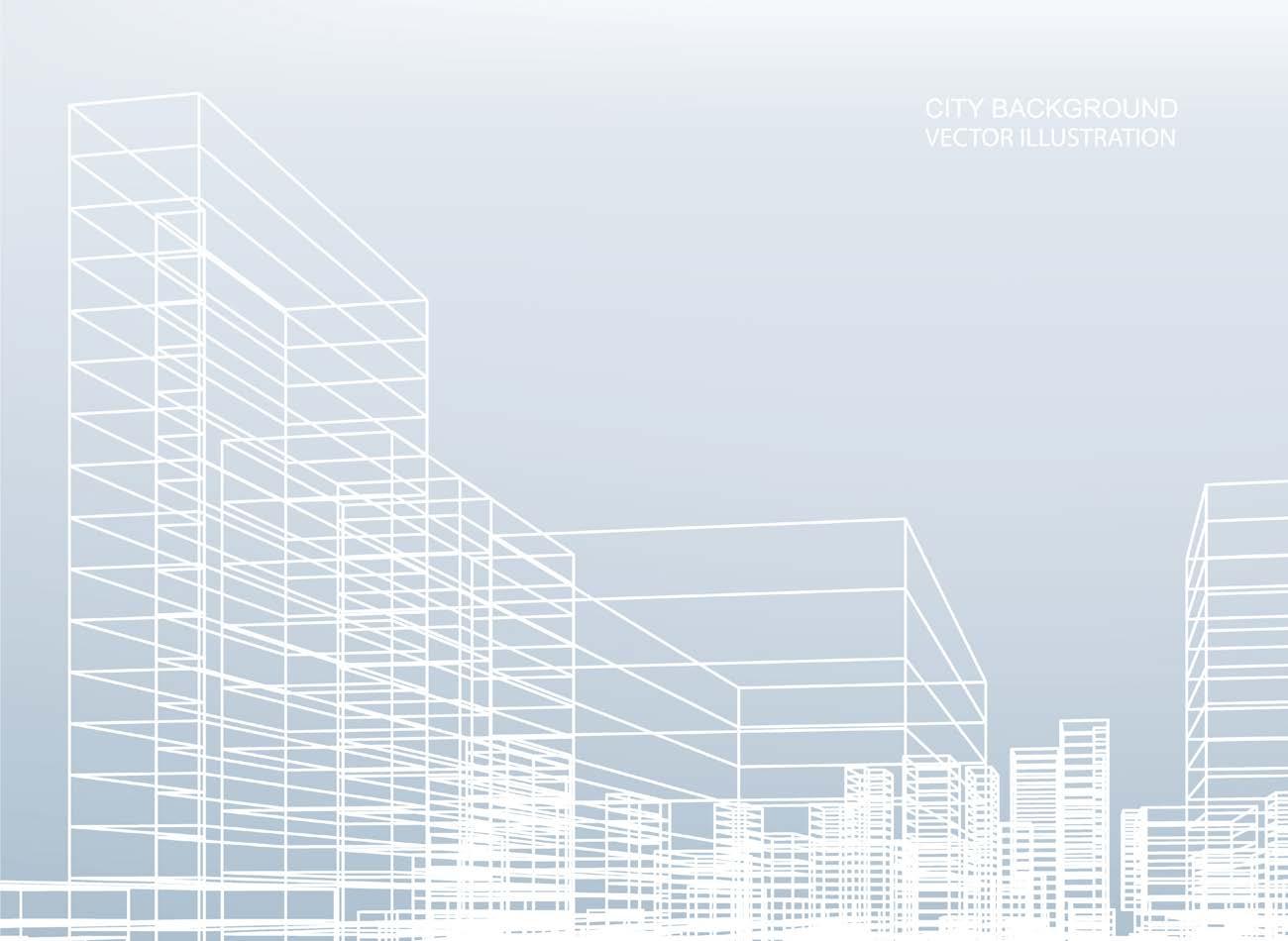
Architects need to understand and design with carbon from day one of the design process. Where are the heavy hitters? Where can we have the most impact? How can we steer on reducing emissions? Carbon needs to become an integral part of the dialogue between clients, consultants and designers in order to transform the way we work and build.
What will the city of tomorrow look like? The club of Rome and the IPCC reports are not lying. We are exhausting our planet’s resources with an increasingly growing population. Time to act is overdue, and we need to start planning our cities in a way that responds to the global climate crisis.
Sanne van der Burgh leads multiple teams within MVRDV, realising projects of various scales, phases and across several continents. Sanne played an integral role in high profile MVRDV projects including the Museum Boijmans Van Beuningen Depot, the refurbishment of the Lyon Part Dieu shopping centre and a visionary project for revitalising New Delhi’s sanitation and infrastructure: Barapullah Springs. Van der Burgh is a versatile architect with demonstrated design achievements. In 2019, Architizer named her as one of 25 young architects to watch. In 2021, she was the winner of the Female Frontier Awards organised by World Architecture News.
Van der Burgh’s strengths lie in integral project narratives with a focus on sustainability and innovation. With her personal fascination for computational workflows and methodologies, she championed MVRDV NEXT, an inhouse R&D group that focuses on the development and implementation of cutting-edge technologies in MVRDV’s projects. Currently, MVRDV NEXT focuses on the development of visionary tools that help cities become more dense, more green and more resilient. A dedicated advocate for environmental awareness in architecture, urbanism and our daily lives, Van der Burgh believes in the capacity of design to inspire and have a positive impact on people and their surroundings.
It is vital we as an industry take carbon seriously for the future of our planet.
We know that urban sprawl causes traffic and emissions, but at the same time density can cause stress and a need for individuality and human scale and space.
MVRDV’s work is based on creating happy and adventurous places with density. Through research, we explore methods and establish principles to accomplish our goals. Our projects are built manifestos for cities that are resilient, dense, happy, social, green, connected, energy producing, adaptive, mixed, healthy and beautiful.
What would you like people to gain from your participation at the 2022 GBCSA Convention? We would like to inspire architects, clients, consultants, policy makers, politicians, investors, developers and students, all parties involved in city making, to embrace the momentum for change. We all co-create the city and we all have a role to play in the ecosystem. But only through collaboration across the entire chain can we achieve our common goal: to act on the global urgencies.
23POSITIVE IMPACT ISSUE 20 GBCSA




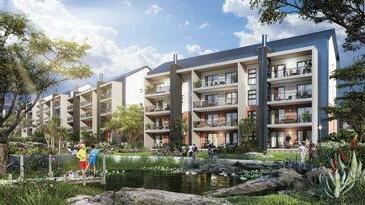



*Terms & Conditions Apply38 International Property Awards Latest Awards 2-6pm | Wed, Sat, Sun & All Public HolidaysOn Show SCAN ME to view the latest Brochure JOHANNESBURG SOUTH | GAUTENG | SOUTH AFRICA GREEN BOND MASSIVE 20 YEAR SAVINGS!* Chrishanda Nunes 082 796 4851 chrishanda@balwin.co.za Klipriver Drive, Johannesburg South www.balwin.co.za 1 BED 1 BATH 2 BED 2 BATH 2 BED 2 BATH PENTHOUSE 3 BED 2 BATH from from from from R909 900* R1 369 900* R1 499 900* R1 819 900* GREEN BONDS 5 STAR AWARDS WON 2022: Five Star for the Best Architecture Multiple Residence South Africa for Thaba Eco Village Five Star for the Best Apartment / Condominium South Africa for Thaba Eco Village
With over 22 years of experience in the position at the company. Steve Brookes is the JSE’s only national largescale developer of turnkey sectional-title apartments and surrounding infrastructure aimed at the mid-to-upper market segment. He is also the chairman of the Balwin Foundation, a non-profit company established in 2016 aimed at making a social difference in the education, training and funding landscape.

Brookes is passionate about environmentally responsible building practices and is the driving force behind Balwin’s approach to minimising its environmental impact by achieving green building ratings at its developments, including 6-Star Green Star ratings from GBCSA for its lifestyle centres and net-zero certification.
Under Brooke’s leadership, Balwin has registered a total of approximately 35 000 apartments as EDGE Advanced since January 2021, achieving on-site energy savings more than 40% compared to conventional building methods.
STEVE
STEVE BROOKES
Founder and Chief Executive of Balwin Properties
How is the conversation about sustainability changing? Sustainability is increasingly becoming the primary talking point rather than something that is added on to other metrics. You can no longer ignore the wider impact of doing business both environmentally and socially, the question is no longer whether you have sustainable practices but rather how good are these and what more can be done.
Please tell us about a project that you are particularly fond of.
Green brand, green bonds and sustainable schools
What are the big questions in your industry? Please share any good examples. How do you provide safe, sustainable and aspirational spaces without them becoming unaffordable?
How can the benefits of building green be passed on to the end-user in a form they understand?
What in your view constitutes the built environment and what should its goals be for ecological performance? The built environment includes buildings both residential and commercial as well as the supporting infrastructure, including utilities, transport and recreational spaces.
The goal should be for connected spaces that are safe, clean and appealing to ensure that the environment will enjoy sustained positive use and development.
How does the built industry need to transform to mitigate the dire consequences of accelerating climate change?
Embrace environmentally sustainable designs. Change our view that building a sustainable building is just including renewable energy rather it must be considered from the start of a new project.
What are some of the challenges that practitioners in your field might face when implementing a living systems approach within the complexity of multidisciplinary design projects?

Perceived costs, though these are more and more being shown to not be a real issue. Additional considerations during the design and construction phase of a project. A lack of local support for certain technologies.
What will the city of tomorrow look like? Smart (communication infrastructure and data availability), green (natural spaces, low energy and water buildings), distributed infrastructure (energy generation and storage, water treatment, etc).
How do we put regenerative development into action? Who are the key players? Look at the space where a development is being done and embrace it. For example, indigenous planting, encouraging bird life as well as architecture which acknowledges local cultures and art. Key players are developers, government/ regulators, certifying bodies, the local communities.
How can we shift from a human-only oriented design to a systems approach in the built industry? Be aware of the environment. Use indigenous landscaping, have a design and implementation team which embraces these ideals.
What would you like people to gain from your participation at the 2022 GBCSA Convention?
Sustainable building is not for the elite but for everyone. The benefits of embracing sustainable buildings should pass to everyone as everyone is impacted if we as an industry do not embrace it. Let’s work together so that we can all save energy, save money and save the planet through simple everyday actions.
25POSITIVE IMPACT ISSUE 20 GBCSA
Sustainable building is not for the elite but for everyone.
DR ANTONY WOOD, RIBA PhD
President of the Council on Tall Buildings and Urban Habitat
CAN SKYSCRAPERS BE SUSTAINABLE?
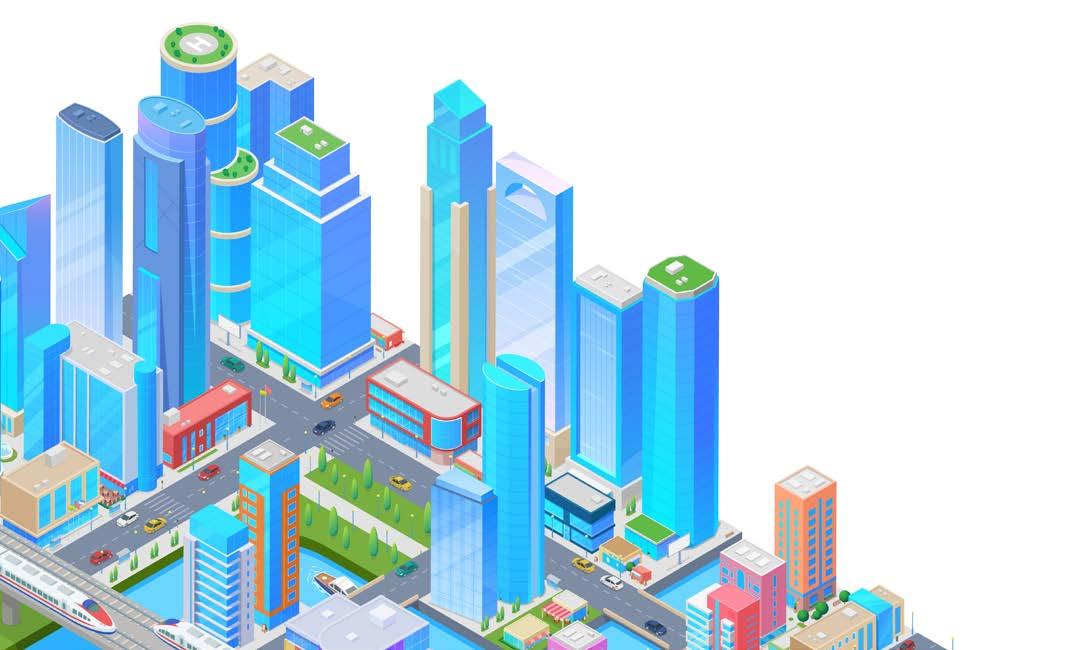
As recently as two decades ago, the concept of a “sustainable high-rise” might have struck many people, even building industry professionals, as somewhat oxymoronic. How could these massive buildings, typically clad from top to bottom in glazing, air-conditioned day and night, and running elevators and escalators continuously – to say nothing of the plug loads of all the electronics we use – be in any way “sustainable”?
Truthfully, if the design of these buildings follows the typical status quo of the profit-driven market, they can’t be. The default method of “copying and pasting” the same generic “international” model of replicated, standardised boxes has had terrible consequences for urban character, cultural identity and environmental integrity.
But there have always been pioneering thinkers, architects, engineers and developers – even the profitdriven kind – who have found the status quo unacceptable and pushed the boundaries of physics, technology and finance to create tall buildings that show the way towards a more sustainable future.
Tall buildings can use their height to do more than efficiently stack people on a limited plot or inspire awe –though these remain aspects of their unique value – they can also collect solar and wind energy and be sculpted to provide shade or sunlight strategically to the ground plane. Natural ventilation, access to daylight, vegetated walls, and increased pedestrian connectivity at multiple levels is not only achievable, but economically beneficial to owner/developers and occupants alike. These benefits can, and must be, extrapolated to the urban scale.
The overriding principle that these pioneers have followed is “design for the context.” That means the social, economic,
Dr Antony Wood is responsible for leading the Council on Tall Buildings and Urban Habitat’s (CTBUH) thought leadership, research and academic initiatives. Prior to this, he was CTBUH CEO from 2006 to 2022. Under his 15-year tenure as CEO, CTBUH increased its outputs and initiatives across all areas of operation globally. Dr Wood is a teaching professor and director of the Masters in Tall Buildings and Vertical Urbanism program in the College of Architecture at the Illinois Institute of Technology, Chicago. He is also a visiting professor of tall buildings at Tongji University in Shanghai. A UK architect by training, his field of specialty is the design, and in particular the sustainable design, of tall buildings.

ANTONY
urban and environmental context, including a degree of flexibility to adapt to changes in each. It also means thinking more broadly about creating a better context – the urban habitat – and less in terms of isolated iconography.
The upheavals of the past few years alone – extreme climate events, financial crises, a global pandemic, social unrest – have shown us that the pace of change is only increasing. Given the speed of urbanisation, and the prospect of the migrations that will be driven by climate change, the future by necessity will need to be dense and vertical, and the urbanisation it supports will need to be carbon-neutral or very near to it, to avoid further cataclysms. This will only be achieved through the concerted effort of a worldwide community of professionals, in partnership with local government, to effectuate policies that encourage lower energy consumption, appropriate use of materials, vegetation and natural ventilation, greater investment in, and proximity to public transport, and reduction or elimination of minimum parking requirements.
This collective needs to further the push to substitute “mineralised” materials that harshen the urban environment and exact a huge cost on the climate, with the biophilic and carbon-sequestering properties of timber structures and planted façades and balconies, wherever possible. Differing political and commercial objectives, and short-term thinking have often stymied these efforts, but a new sense of urgency seems finally to be overtaking the built environment – and not a moment too soon.
Tall buildings can use their height to do more than efficiently stack people on a limited plot or inspire awe.
26 POSITIVE IMPACT ISSUE 20 GBCSA
It’s time to harness renewable energy, g o off gri d , ha r vest

an d u ltim a tely re du
r unn i n g c
sts .
si n
Ou r Green B uilding s Finan c e Programm e p rovi d es up to 100 % property finance ranging from R500 000 to R50 million to established entrepreneurs with a viable business who want to invest in green buildings and achieve green building certification. We finance the purchase, construction, and/or retrofit of buildings if their designs a re cer tifie d und er an eligible green bu ildin g cer tific a tion Visit Businesspartners.co.za to find out more
r a i nwa te r,
ce you r bu
ess ’
o
E x tra b enefit s : Th e co st of green cer tific a tion is covered by a no n-refundab le gran t o f up to R150 000 We of fer a reba te of up to 40 p ercen t o f th e cap ital exp end iture to green yo ur b uildin g
ANDY PAG (IRELAND)
Former BBC journalist
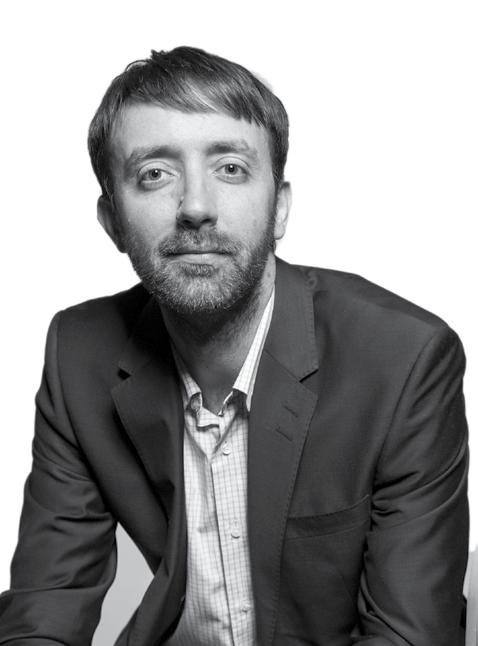
Please tell us about your personal experience. When and how did your passion for sustainability arise? I’ve been running vehicle expeditions since the late 90s. In 2005, I realised that it was hypocritical to discover the world while contributing to making it uninhabitable. So, I started experimenting with ways to travel sustainably. To my surprise, many have worked well, and they’ve given my travels a new purpose.
How is the conversation about sustainability changing?
It’s becoming more mainstream, but I see a lot of organisations still asking the wrong questions. Many of the changes they make are tinkering with the edges. Often the core business model is fundamentally unsustainable. It takes real courage and leadership to address this elephant in the room. But organisations that do are in a much stronger position.
What in your view constitutes the built environment and what should its goals be for ecological performance?

Sustainability isn’t just about carbon footprints. It’s about using all resources in a way that allows them to renew. And it’s about being symbiotic with the natural environment.
For 20 years, Andy Pag has been trying to travel sustainably, from driving a chocolate-powered lorry to Timbuktu to gliding around the sky on thermal currents to circumnavigating the globe in a scrapyard school bus fuelled only with waste cooking oil scavenged from bins along the way. Many of these experimental journeys proved to be quite sustainable, and now, connecting live from the sailboat he currently lives and travels on, he delivers imagination-grabbing talks sharing his experience and honestly critiquing his own attempts to live and travel sustainably.
From these entertaining tales, he draws lessons and conclusions which frame the challenge of acting sustainably for both businesses and individuals. His talks are inspiring and thought-provoking and challenge the audience into new ideas without confrontation.


Sustainability isn’t just about carbon footprints.
How should the built industry transform to mitigate the dire consequences of accelerating climate change?
The question of embedded carbon is a massive challenge. Especially the footprint of concrete. I also think we should be more open-minded to how we organise communities so that life in those communities can be more sustainable.
What will the city of tomorrow look like?
Crowded.
What would you like people to gain from your participation at the 2022 GBCSA Convention?
Sustainability is a multi-faceted challenge, from carbon footprints, to profitability, even to things like managing community goodwill. They can impact the very core functions of a business. Think about how your organisations skills and assets can be reshaped to meet those challenges. It’s a really exciting project.
28 POSITIVE IMPACT ISSUE 20
ANDY
GBCSA
CARBON NEUTRALITY BY 2050 A REALITY FOR SAINT-GOBAIN
Saint-Gobain, the world leader in light and sustainable construction, has affirmed its commitment to become carbon neutral by 2050, with the introduction of additional products and carbon neutral manufacturing plants around the world.

Having recently become the first player in the world to achieve zero carbon production of flat glass, at its glass manufacturing plant in Aniche, northern France, as well as currently developing the world’s first two carbon neutral plasterboard manufacturing plants in both Canada and Norway, the company is putting its money where it matters to help fight global climate change and develop ecologically sustainable solutions.
“Together with and for our customers, we design, manufacture and distribute materials and solutions that have a positive impact on everyone’s life and provide well-being, while caring for the planet,” says Damien Peyrelongue, MD (Gyproc & Isover) from Saint-Gobain Africa. “Our 350 year-old history, collective strength and leadership empower us to pursue our development, by addressing the major challenges facing humanity, namely, climate change, resource protection and inclusion. Our ambition and purpose are to act every day to make the world a more beautiful and sustainable place in which to live.”
A elevated standard of plasterboard
In Africa, Saint-Gobain have eco-innovated their trusted and original RhinoBoard® plasterboard, which is now manufactured using EcoTech™. This allows the board to not only be easier to handle, but also easier to install.
“EcoTech™ is our enhanced engineering technology that provides an exceptional performance-to-weight ratio, achieving a higher calibre of performance and sustainability, while elevating the standard for plasterboard in the market,” explains Anton Marais, Head of Product (Gyproc).
RhinoBoard® plasterboards, now with EcoTech™, are produced with a 10%* reduction in carbon emissions and an 8%* reduction in water use. The boards are also made from recyclable materials. Manufactured with an advanced performance-to-weight ratio, the boards are not only easier to handle, but also allow for the transportation of more square metres per load. The new technology has also allowed for efficient usability as the board is now easier to cut, snap and fix, as well as offering improved handling and installation onsite.
ABOUT SAINT-GOBAIN
Worldwide leader in light and sustainable construction, Saint-Gobain designs, manufactures and distributes materials and services for the construction and industrial markets. Its integrated solutions for the renovation of public and private buildings, light construction and the decarbonization of construction and industry are developed through a continuous innovation process and provide sustainability and performance. The Group’s commitment is guided by its purpose, “MAKING THE WORLD A BETTER HOME”.
Saint-Gobain cares about building better for people and the planet, by offering solutions that deliver sustainability and performance to drive the transformation of construction markets. These initiatives are just the beginning of Saint-Gobain’s journey towards Net-Zero, with ongoing and deliberate efforts to ensure sustainability targets are achieved.
For more information, please visit www.saint-gobainafrica.com | www.saint-gobain.com | www.gyproc.co.za For more information about Saint-Gobain, visit www.saint-gobain.com
ABOUT GYPROC
Our Saint-Gobain Gypsum brands are represented by 5 brands: Gyproc®, Placo®, Rigips®, CertainTeed® and British Gypsum®. Our Saint-Gobain Gypsum brands care about building better for people and the planet. They design, manufacture and market solutions for walls, partitions, ceilings and facades that deliver sustainability and performance. They serve those who build and those who spend time in buildings while addressing a variety of markets in construction and renovation. With over 13 800 employees, our Gypsum brands provide plaster and plasterboard solutions in 39 countries, through 100 sites.
€44.2 billion in sales in 2021
166,000 employees,
locations in 75 countries
• Committed to achieving Carbon Neutrality by 2050
CONSTRUCTION 29POSITIVE IMPACT ISSUE 20
•
•
•
FROM OCEAN TO OFFICE –FREEING OUR OCEANS OF PLASTIC, ONE CHAIR AT A TIME
Humanscale®, a leading international designer and manufacturer of high-performance ergonomic products using recycled ocean plastic waste in the production of their new Smart™ Ocean and Liberty™ Ocean range of office chairs. The nylon from discarded ocean fishing nets is transformed into plastic pellets which are then used to manufacture the first-ever ergonomic chairs made from polluted marine waste.

Discarded fishing nets are widely regarded as the most harmful type of ocean plastic and cause widespread damage to our delicate ecosystems, choking many of our marine animals and organisms off our coastal waters – and in many other parts of the world. Kim Kowalski, Director and CoFounder of Formfunc Studio, the exclusive distributor and dealer-partner for Humanscale® in southern Africa, says that each chair incorporates around 0.9kg of reclaimed fishing net material.


“While this is only a small step in the massive task to rid our oceans of plastic, we believe it encapsulates an earnest approach by Humanscale® to develop solutions that have a net positive impact on our environment,” says Kowalski.
HUMANSCALE® STRIVING FOR NET POSITIVE - FROM MANUFACTURING TO END PRODUCT

Apart from the use of recycled fishing nets, both the Smart Ocean and Liberty Ocean chairs are Living Product Certified. This internationally adopted certification is an overarching commitment towards producing goods in a socially responsible manner and which offer ‘net positive’ benefits for humans and the environment. Kowalski says that Humanscale® has adopted a holistic approach to bettering the environment, this includes addressing the materials and chemicals used in the manufacturing processes - and an overall commitment to the adoption of responsible manufacturing practices.
“Because the preservation and conservation of our earth’s natural resources and heritage is so important,

we are working with Humanscale® to encourage other manufacturers and suppliers in our industry to do the same.”
CREATING A NET POSITIVE IMPACTLEADING BY EXAMPLE
The Living Product Label is a certification of authenticity as to the origin and make-up of the manufacturer’s product. To achieve full product certification under the Living Product Label, manufacturers have to meet specific criteria. This standards framework is organised into seven performance areas, called Petals. Each performance area, or Petal, has additional detailed requirements called Imperatives. When a product meets each Imperative for every Petal, a product can be Living Product Certified
The Living Product Challenge is the first standard based upon the principles of full transparency to incorporate both Life Cycle Analysis and a material health evaluation in order to create products that are Net Positive to the environment across their life cycle.
To find out more about the Living Products Challenge, check out: https://living-future.org/lpc/
Certified by the Living Product Challenge
30 POSITIVE IMPACT ISSUE 20 RENEWABLES
Formfunc Studio is the exclusive distributor and dealer-partner for Humanscale®, a leader in workstation optimisation, ergonomic furniture design and manufacturer. We offer comprehensive workplace and work from home furniture solutions to the southern African residential, corporate and hospitality sectors. For more information, contact us on tel: +27 0861 555 271 or email: info@formfunc.co.za Visit our website: formfunc.co.za
Made with nearly 1kg of recycled fishing nets, and designed to provide effortless functionality and custom comfort.
task chair is better for your employees and the environment.


INTERESTED TO KNOW MORE? info@formfunc.co.za / +27 11 467 1318 / formfunc.co.za
This
MOVEMENT
GBCSA celebrates its 15th anniversary. Its pioneering transformation of the South African property sector has yielded significant results that have driven measurable impact not only in terms of certifications but also in training, accreditation, job creation and climate change mitigation.

POSITIVE IMPACT ISSUE 20
THE GBCSA 15 32 GBCSA The GBCSA Green Star rating system was launched in 2008 and the first certification of Phase Two of Nedbank’s Head Office in Sandton, Johannesburg, was awarded in 2009.
Current CEO of GBCSA, Lisa Reynolds, says that in its time the organisation has reached 905 certifications in Africa. The impact of 905 certifications can be illustrated through the energy and water savings as well as the carbon reductions achieved from the measures required to achieve certification. A total of 91 500 households worth of annual energy and 1220-million litres of potable water will be saved, equating to 1 672 800 people’s daily drinking water needs every year. The 1 590-million kgCO2/annum that will be saved is the same as 395 400 cars off the road each year in terms of kgCO2 equivalent.
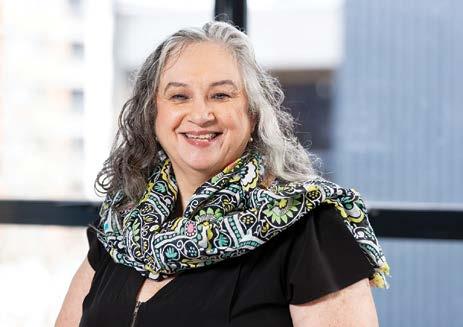
“In the last year alone 165 buildings were certified which reflects the exponential growth in the adoption of more sustainable building practices – the first 50 certifications took over five years, but as the environmental and financial benefits of green building became more apparent, we saw a greater buy-in across the board and the industry has shifted. Our role in education and training is an important part of achieving this shift and supports a just transition to low-carbon green building, ensuring the future and livelihoods of workers by creating new jobs within a green economy.”
GBCSA is one of 70 members of the World Green Building Council (WGBC) and collaborates with Green Building Councils across the globe, enabling access to a community of experts and creating a platform for advocacy, catalysing a number of regulatory changes. GBCSA’s Annual Green Building Convention has become the South African property industry’s premier gathering of experts and leaders in the field of sustainable building.


Through the development of a host of certification tools and the development of professionals in the field of green building, the adoption of environmentally responsible practice in the property sector has become mainstream, and the vision of being a driving force in the mitigation of climate change has become a reality. To date, 2 265 professionals have been accredited through GBCSA’s training and accreditation initiatives with 325 students going through the candidate programme.
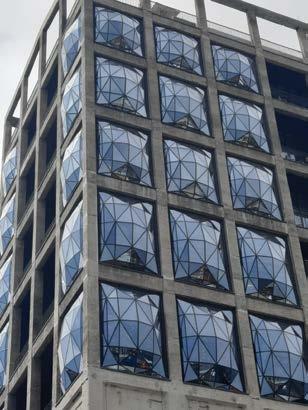
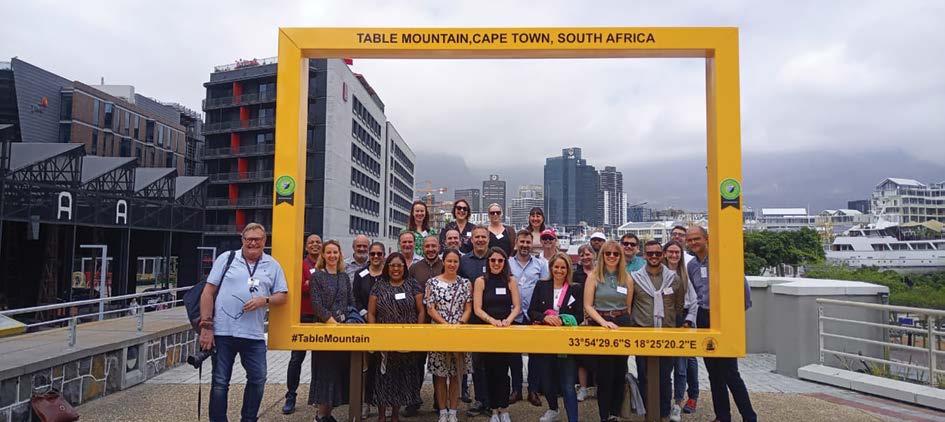
GBCSA 33POSITIVE IMPACT ISSUE 20 15
Guests were invited for a day of celebration with GBCSA CEO, Lisa Reynolds. A guided V&A Waterfront green walk was followed by lunch at the Radisson RED Hotel.
In 2007, when green building was the exception rather than the rule, Bruce Kerswill, managing director of Spire Property Group, saw the need for an industry body to facilitate the growth and adoption of green principles in the property sector in South Africa. He says: “We received much valuable support from the Australian Green Building Council and assistance with the development of South Africa’s own Green Star tool. Neil Gopal from South African Property Owners Association (SAPOA) was instrumental in our initial efforts, and Nicola Douglas as our CEO was a driving force in getting the organisation off the ground.”

The GBCSA rating system was launched in 2008 and the first certification of Phase Two of Nedbank’s Head Office in Sandton, Johannesburg, was awarded in 2009. In 2011, the Energy Water Performance tool (EWP) was




introduced for existing buildings, starting with office buildings. In 2015, GBCSA announced its partnership with the International Finance Corporation, a member of the World Bank Group, to launch the EDGE rating system, a green building certification programme for the residential property market in South Africa. The EDGE Local Licencing Agreement was signed in August 2015. Net-zero certification assists building projects to completely neutralise or positively redress their impacts in carbon, water, waste and ecology. GBCSA released the net zero technical manual in March 2019.




34 POSITIVE IMPACT ISSUE 20 GBCSA
Zoë Rushin, senior facilities manager at Old Mutual and Jenni Lombard, technical manager at GBCSA.
(From left) Cassim Mansoor, Kirwan Daniels and Jenni Lombard from GBCSA.
Above: (Left) Nicola Milne, previous GBCSA CEO and Jaci Harrison, GBCSA HR manager.
Left: Mike Munnik, Agama Energy and Mary Haw, City of Cape Town.
Below: Mokena Makeka, Dalberg, and Lisa Reynolds, GBCSA CEO.
Lisa Reynolds, Georgina Smit and Michelle de Nysschen from GBCSA.
Afterwards, guests were taken on a guided bus trip to highlight some Green Star and net-zero rated Cape Town landmarks along the way and the day ended with a building tour and afternoon drink at the Ridge Building.
This is market transformation.
“Being at the helm of the GBCSA from 2017 to 2020 and prior to that as a non-executive director since 2009, meant that I was able to observe and be in the middle of its fast-paced growth. The level of ambition in transforming the built environment has always meant we were punching above our own weight – at times in the scariest possible ways, but the movement always emerged victorious,” says where the uptake in formal certifications increased exponentially,” says Dorah Modise, former GBCSA CEO. She says that GBCSA is a movement, not an organisation.”

Grahame Cruickshanks, head of sustainability and utilities at Growthpoint Properties, a founding member of the GBCSA that has led the way in implementing green building practices says that the biggest impact of GBCSA is the introduction of green building as an active movement in the local private and public property sectors. “The introduction of third-party verified certification systems to ensure the legitimacy of green building initiatives has provided benchmarks and targets for the South African property sector and achieved continuity for the green building movement.”
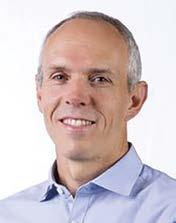
GBCSA’s Annual Green Building Convention has become the South African property industry’s premier gathering of experts and leaders in the field of sustainable building.




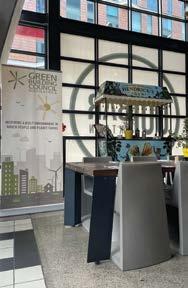


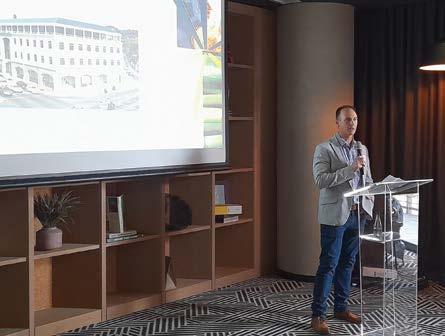
35POSITIVE IMPACT ISSUE 20 GBCSA
(Front left) Kevin James, CEO, GCX, and Bruce Kerswill, Spire Property Group. (Back) Lisa Reynolds, CEO, and Georgina Smit, head of technical, from GBCSA.
(Left) Manti Seleka, Lynleigh Caulfield and (right) Levinia Palmer from GBCSA.
Meanwhile in Johannesburg, GBCSA chair, Brian Unsted, marked the noteworthy achievement by inviting valued partners in the South African green building story for a lunch at Radisson RED Hotel in Rosebank.
(Left) Mischa Tessendorf, GBCSA, and Ingo Hammann, managing director of Stiebel Eltron.
(From left) Zanengcebo Mthembu, Emira Property Fund, Hlologelo Manthose, WSP, and Yvonne Pelser, Inside Out Consulting.
Mthobisi Masinga, GBCSA, and Zanengcebo Mthembu, Emira, the winner of the lucky draw sponsored by Delish Coffee Roasters.
Afterwards, a building tour of the 5-Star Green Star rated Radission RED Hotel Johannesburg Rosebank took place.

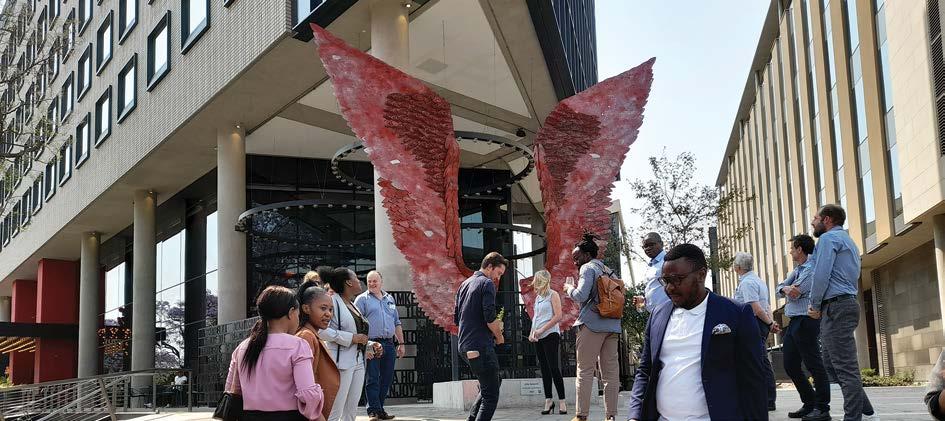
Manfred Braune, director of environmental sustainability at the University of Cape Town , says that to have established a national standard for green buildings that is aligned with international best practice for green buildings, through which almost a thousand buildings have been certified, is incredible, and a fantastic achievement for the first 15 years. “GBCSA has also trained hundreds of people on green buildings, transforming people and equipping them to design, construct and operate green buildings.”
Brian Wilkinson, GBCSA CEO from 2011 to 2017, says: “I was incredibly fortunate to see a huge uptake of green building principles and practices by not only the commercial property industry and professionals in the built environment, but also by corporate South Africa and even ordinary homeowners. The built environment offers an almost unique ability to really do something about climate change in a meaningful way, both in terms of mitigation impact as well as making commercial sense.”

GREEN PROPERTY TRAILBLAZER

Reynolds says that the work of GBCSA has been driven by many partnerships in the public and private sectors and
“GBCSA has been the green property industry’s most significant trailblazer and advocate – indeed, without GBCSA holding and consistently driving the narrative in South Africa and on the continent, we would not be where we are now, where green buildings are not only commonplace but are becoming standard practice,” says Jutta Berns, founder and director at Ecocentric
“We now have a shared vision and a shared language that straddles the interests of the investor, developer, designer, operator and construction community, which is essential in harnessing the opportunities that the green property sector offers in reversing climate change. Another key achievement is that we as green building professionals have managed to create an entirely new industry and are able to bring along others on the path to ensuring that all jobs are climate jobs. This is market transformation.”
collaboration is crucial to its continued success, “Support from government bodies, the private sector role-players and institutions driving sustainability efforts remains one of the cornerstones of our programmes and we look forward to growing these important relationships in order to extend the green building economy.”
A SHARED VISION
Kerswill reflects on the GBCSA legacy: “For me, the Convention is one of the most important and most enjoyable of GBCSA’s activities. It inspires the industry, promotes networking with local and global leaders and shares technical knowledge. The training courses are also inspiring, running through the different categories and the multitude of interventions that can be made to achieve a significant environmental impact. I am extremely proud of GBCSA and what it has achieved – and the fact that it has reached 15 years and is still going stronger than ever. I believe there are few other organisations that have such a direct, practical and extensive impact on climate change and so many aspects of sustainability.”
36 POSITIVE IMPACT ISSUE 20 GBCSA
(From left to right) Mthobisi Masinga, GBCSA, Brian Unsted, Liberty Two Degrees, Anja Thompson, Dash Coville and Mischa Tessendort, all from GBCSA.
SBS PARTNERING TO HELP PREVENT ‘DAY ZERO’ FOR WATER IN SOUTH AFRICA
“As 2022 draws to a close, the municipal and private sector need to work hand-in-hand to ensure that we protect our water resources,” says Chester Foster, General Manager of the SBS Group. “South Africa is a water-scarce country, we don’t have a choice. We must all act to conserve water and manage demand.”
According to the National Infrastructure Plan: 2050, water supplied through municipalmanaged systems to the domestic, industrial and commercial sectors accounts for about 30% of water use.
“While the municipal sector can act by increasing desalination efforts, improving wastewater treatment output and infrastructure and delivering water storage solutions that do not utilise excessive amounts of water in the construction process, the business and private sector can play their part too, through reducing water consumption and their reliance on municipal supply.”

Foster says there are many ways the private sector can do this. These include:





• Harvesting rainwater off building roof structures or accessing and storing groundwater in reliable water storage tanks, such as SBS Tanks;









• Recycling process water from factories and homes for reuse instead of releasing into stormwater drains;




























• Checking for water leaks and repairing quickly;









• Educating employees and family on wise water usage. SBS Tanks has partnered with the public and private sector in South Africa for over 24 years and offers a







Businesses can play their part in reducing water consumption with rainwater harvesting tanks.
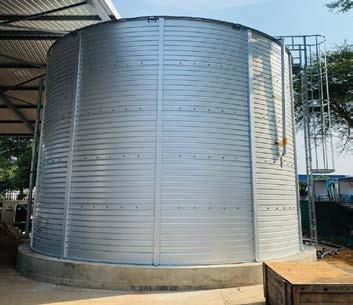

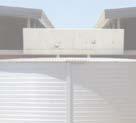









comprehensive range of over 500 tank sizes suitable for the storage of harvested rainwater, recycled water, raw seawater, potable water, groundwater, process water, effluent and wastewater and many other liquids.
























Are you ready to play your part and equip your business or residence with rainwater harvesting and recycled water storage solutions? Call SBS Tanks today: 086 048 2657, email: info@sbstanks.co.za or visit: www.thesbsgroup.com for more information.

JOB 0124 SBS TANK IMPACT HALF PAGE AD copy.pdf 1 2022/09/19 2:29 PM
RENEWABLES




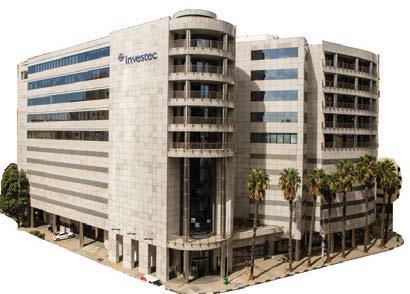


UV-C: CHOOSING HEALTH, GOING GREEN AND SAVING COSTS

As commercial property owners and managers look for every available competitive edge to attract and retain good tenants, great indoor air quality (IAQ) has become more than just a compelling sales point. UV-C disinfection systems are not only delivering cleaner, healthier air, but can reduce energy costs in HVAC system by 25%.


We are all familiar with the harmful effects of sunlight’s UV-A and UV-B radiation which can result in painful sunburns.
But the UV-C wavelength has more than twice their energy and it is easily absorbed by organic substances, rapidly destroying molecular bonds.
This means UV-C can be used to safely eliminate and prevent the build-up of organic material on coils, drain pans, and interior air-handling surfaces. It improves airflow and can maintain and even return heat-transfer levels to ‘as-built’ capacity, delivering solid improvements on HVAC system efficiencies.
Clean systems reduce odours, as well as allergens or pathogens in airstreams. Clean systems also help sustain design temperatures and airflow, ensuring buildings meet all required IAQ codes and standards. The green technology can also eliminate chemical and mechanical (water) cleaning required for the regular cleaning of coils, helping to reduce waste disposal issues.
air-handling units not only save energy, but they also reduce carbon footprints which has a big impact when it comes to accreditation and environmental reporting ,” says Edward Hector, MD of air-conditioning and related maintenance services provider, SFI Group.
QUANTIFIABLE RESULTS INVESTORS WILL LOVE
Green technologies, such as UV-C, have quickly demonstrated their business worth, with a proven clear link between green-certified buildings and investment performance as well as lower vacancy rates, lower operating costs, and higher net operating income.
“When it comes to UV-C’s benefits, one way of measuring the effectiveness of UVC is based on various case studies using what is called the U-value. We use U-values to measure a cooling coil’s thermal performance. The higher the value, the more efficient the operation. In a recent case study of an office block, we saw annual chilled water volume reduced from 28,849 to 18,507 tonnes – a reduction of 35.85 percent. Our client saw an annual savings of R10 000 for a single coil,” Hector shares.
FUTUREPROOFING INVESTMENTS IN AN UNCERTAIN WORLD
More than just the hard cost savings, UV-C also offers compelling health benefits which can greatly add to a building’s competitive offering.
According to the World Health Organization (WHO), approximately 30% of all commercial buildings have significant IAQ problems. In particular, ventilation systems have been implicated in the spread of infections and pollutants. In addition WHO analysis finds zoonotic outbreaks on the African continent have increased by 63% from 2012 to 2022 compared to the previous decade.
“This cleaner environment means less energy is needed to provide the necessary amount of cooling and airflow to maintain system energy efficiency. We have found that UV-C installed, even in older systems, reduces energy use by 10-25 percent on average. What’s more, efficient
“Offering companies the highest grade of protection from highly transmissible influenzas, tuberculosis and other airborne diseases is a winning sales point in an environment where employers are trying to coax workers back to the office. Employers have enormous choice right now and so decisions can turn on features like air quality and other health benefits. We are all more sensitive to what we put in our bodies and the air we breathe has the biggest impact. Disinfectant technologies, like UV-C, deliver great unique selling points as well as real cost savings, making the immediate return on investment genuinely compelling,” Hector advises.
INDOOR AIR QUALITY 39POSITIVE IMPACT ISSUE 20
The PRECINCT with a positive impact

PROJECT 40 POSITIVE IMPACT ISSUE 20

41POSITIVE IMPACT ISSUE 20 The Precinct Unity building is the first development in Mauritius to achieve a 5-Star Green Star office design rating from GBCSA. It’s also the highest-rated green office development in the Indian Ocean Islands region. WORDS Anne Schaeffer PROJECT NUTSHELL Location: Republic of Mauritius Green Star rating: 5-Star Green Star rating Office Design v1.1 Type of building: Office Project dates: Certified June 2022 Project size: 9811.02m² total gross floor area
r c l h e a d o f f i c e | d u r b a n k w a z u l u c r u i s e t e r m i n a l | d u r b a n
r o o i e l s b e a c h h o u s e | r o o i e l s i n v e s t e c h e a d o f f i c e | u m h l a n g a
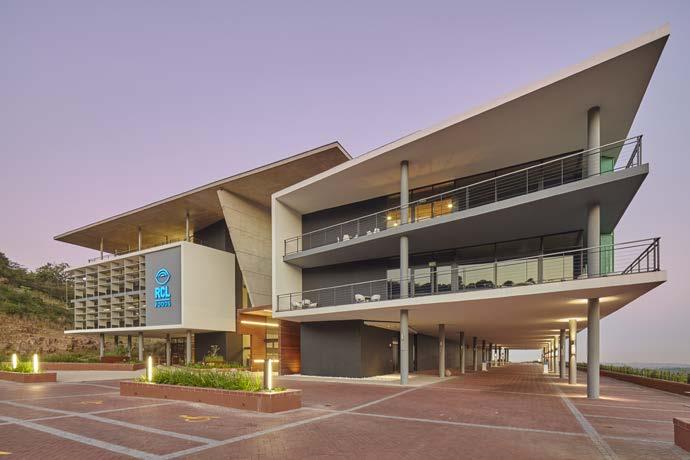

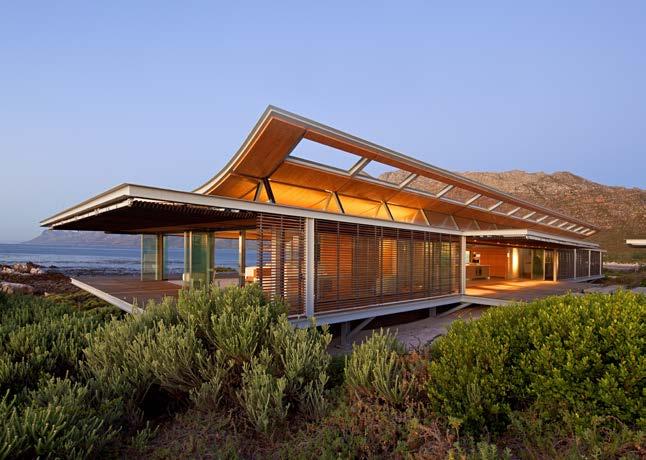
O u r p h i l o s o p h y e m p h a s i z e s a n a p p r o p r i a t e a r c h i t e c t u r e t h a t r e s p o n d s t o c o n t e x t , r e g i o n a n d c l i m a t e W e s t r i v e t o d e s i g n i n t e l l i g e n t s o l u t i o n s w h i c h r i s e t o t h e d i v e r s e s o c i a l a n d e c o n o m i c c h a l l e n g e s a n d m a k e a s i g n i f i c a n t c o n t r i b u t i o n t o t h e i n t e r n a t i o n a l r e a l i t y e p i d e l i v e r s a f l e x i b l e , a g i l e a n d r e s i l i e n t a r c h i t e c t u r a l s e r v i c e t o a w i d e n e t w o r k o f c l i e n t s w i t h a v i s i o n t o c r e a t e q u a l i t y d e s i g n s o l u t i o n s t h a t o f f e r e n d u r i n g a n d a p p r o p r i a t e o u t c o m e s w i t h i n t e n t t o b e r e c o g n i s e d f o r p r o d u c i n g e x c e p t i o n a l a n d d e l i g h t f u l p i e c e s o f a r c h i t e c t u r e , e v e r y p r o j e c t i s c a r e f u l l y i n n o v a t e d t o e n g e n d e r a d d e d v a l u e t o b e a p o s i t i v e a n d r e s p o n s i b l e c o n t r i b u t o r t o s o c i e t y a n d t h e b u i l t e n v i r o n m e n t

T h e s u s t a i n a b i l i t y a g e n d a f r a m e s a g l o b a l i m p e r a t i v e t o c r e a t e e n v i r o n m e n t a l l y f r i e n d l y a n d r e s p o n s i b l e b u i l d i n g s a n d t h i s i s f u l l y e m b r a c e d b y e p i a s a p i v o t a l c o n s i d e r a t i o n i n t h e d e s i g n o f e a c h p r o j e c t . P a s s i v e a n d a c t i v e i n t e r v e n t i o n s a r e s e e n t o b e f u n d a m e n t a l i n d r i v i n g o p t i m i s e d d e s i g n s o l u t i o n s a n d a r e e n g a g e d a t m a n y l e v e l s . e p i i s a c o r p o r a t e m e m b e r o f G B C S A a n d h a s u n d e r t a k e n n u m e r o u s g r e e n s t a r r a t e d b u i l d i n g s , a n d c o n s t a n t l y s t r i v e s t o d e l i v e r p r a c t i c a l a n d e f f e c t i v e s u s t a i n a b i l i t y e n d e v o u r s
e t i o n
g r a n d b a i e s t u d i o | + 2 3 0 5 4 5 5 1 6 8 3 | j p @ e p a r c h m u | d u r b a n s t u d i o | + 2 7 3 1 2 7 5 5 8 0 0 | i n f o @ e p a r c h c o z a i n s t a g r a m w w w i n s t a g r a m c o m / e l p h i c k p r o o m e i n t e r n a t i o n a l / w e b s i t e w w w e p a r c h m u O u r i n t e r n a t i o n a l s t u d i o s o f f e r o u r c l i e n t s t h e f l e x i b i l i t y t o e n g a g e w i t h o u r d e s i g n e r s a n y w h e r e i n s o u t h a f r i c a a n d m a u r i t i u s a n d f u r t h e r t o d e p l o y o u r c o l l e c t i v e r e s o u r c e s f r o m c o n c e p t t o c o m p l
Well-positioned
and easily accessible, The Precinct site is located on the south-eastern corner of the M2 Motorway and Plaine des Papayes Road, near Grand Baie in the Pamplemousses District of the Republic of Mauritius. Retail amenities are 2km away and Port Louis a mere 20km.

The Precinct Unity building is part one of a larger three-part mixed-use complex to be developed in phases. Developed by African real estate development specialist and GR1T subsidiary, Gateway Real Estate Africa (GREA), The Precinct – ultimately to comprise a lettable area of 10 000 square metres, with parking for 500 – is anchored by London and Mauritius-listed GR1T Real Estate Investment Group, Dentons Law, the world’s largest law firm, and Workshop 17, the South African leading co-working space. This first phase, Unity, has a gross floor area of 9 811.02 square metres, and is due for completion in December 2022.
The Precinct – Phase 1 – incorporates many environmentally sustainable initiatives in line with the Green Star Office v1.1 certification tool of GBCSA, with further guidance taken from the 2017 Mauritian Local Context Report.
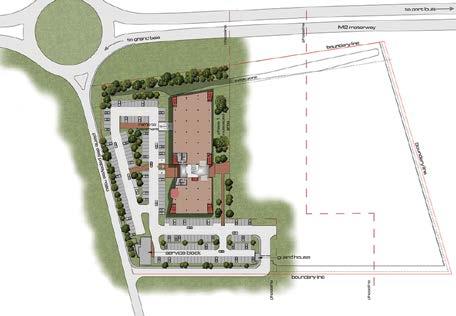
Adrie Fourie, Accredited Professional and sustainable building consultant for Solid Green Consulting, explains how the application for the five-star certification played out: “Initially, we were aiming for a 4-Star Green Star



rating, but because this team, spread from Mauritius to South Africa, pulled out all the stops, we were able to accumulate other credits which led to the 5-Star Green Star Design rating in round two.”
Attaining a 5-Star Green Star rating from the GBCSA is an accolade – and philosophy – to which the developers and all role-players committed themselves to. GREA embarked on a journey to develop a property which considered its environmental impact hand in hand with the wellbeing of its tenants. The process began as a workshop with the building’s design team, the goal being to adjust the original design marginally to reduce demand for natural resources, minimise greenhouse gas emissions associated with operational energy consumption and improve the welfare of occupants. Fourie says, “For instance, we examined ways we could change certain elements of the design, and the structural engineer was able to identify fundamental design changes that used less material than if a typical design approach had been used.”
Formal and informal connectivity between occupants is a way of life at The Precinct.
43POSITIVE IMPACT ISSUE 20 PROJECT
The Precinct capitalises on its corner positioning and ultimately will form one of three built components set in a verdant landscape and will provide occupants with a visual connection to the external environment, making for a more relaxed and inviting workplace.


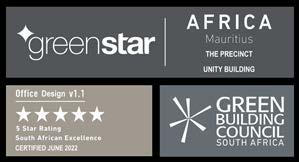
grit.groupgreafrica.group
A project-specific Environmental Management Plan was developed and implemented to minimise the environmental impact associated with construction activities. The design team focused on the operational phase of the development, and by involving the facilities management team the project identified all maintenance-related challenges in the design to ensure effective changes were made where necessary to allow appropriate access. The Precinct will incorporate recycling waste storage space to facilitate recycling of resources used within the building to reduce waste going to disposal.
The Precinct Unity Building will ultimately benefit from a large central landscaped park, diverse recreation options, including a children’s playground and green settings to enhance the ecological value of the building. On the site’s perimeter will be extensive naturally shaded open parking to supplement the underground parking bays. The use of alternative modes of transportation to work is encouraged, so there are parking bays for mopeds, EV charging bays and bicycle racks are an integral part of the parking allocation (for both occupants and visitors).
From an architectural perspective, a few pillars drove design with the promotion of wellness as one of the forerunners. Forward-thinking companies are constantly seeking seamless, effective and comfortable ways to blend work and personal life, and, together with international architects, Elphick Proome, the developers focused on

providing employees with exceptional social and wellness spaces. Formal and informal connectivity between occupants is a way of life at The Precinct.


Avish Bhinkah of GREA endorses that vision: “The building goes way beyond traditional design and construction principles. It offers a futureproof adaptability to ever-changing tenant needs.” He adds, “Its designed with that particular flexibility needed by today’s businesses, combining work, wellness and a social lifestyle in an array of contemporary and considered spaces, for a more holistic, efficient and enjoyable work life.”
From the outside in, and basement upwards, there are innumerable elements which contributed not only to the 5-Star Green Star rating but took it beyond. The goals became a philosophy which every team member embodied. Fourie pinpoints some of the more unusual elements within The Precinct Unity building: “The collaboration between the architect, façade engineer and Solid Green modelling simulations consultant allowed for a building façade solution that resulted in multiple green star points. The innovative clip-on façade can be removed in its entirety should the building need to be repurposed, so less demolition waste. The Unity enjoys street frontage with performance glazing which provides ample daylight for all building users and appropriate daylight glare control is achieved through perforated aluminium screens on the southwest and northeast elevations.
45POSITIVE IMPACT ISSUE 20 PROJECT
The stairs were positioned to be as visible as possible, so there is an instinctive choice over the lift.
At the heart of The Unity is an impressive, light and airy five-volume atrium, with two floor plates of varying size, depth and dimension set adjacent to it.






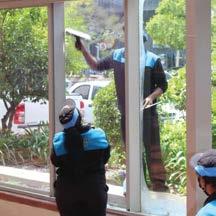













• Bonding Agents • Chemical Anchors • Concrete Bonding • Concrete Crack Repairs • Concrete Release Agents • Concrete Repair Mortars • Curing Compounds • Epoxy Adhesives • Epoxy Grout • Joint Sealants • Non Shrink Grouts • Pre Cast Repairs • Water Proofing WHEN QUALITY MATTERS! • Tel: + 27 11 822 2320 • Fax: + 27 11 822 2354 • e-mail: cindy@ashak.co.za 6690 Ashak Constrctn 1/2pg IMPACT ad GBCSA OCT’22 IMPACT mag Why choose OptimusBio • Global Green Tag certified and complies with Green Star and LEED requirements • Track record of adoption in major malls and corporates spaces • Seamless introduction, including assessments, training and implementation support • Affordable, easy to use and safe to people, animals and environment • Efficient cleaning, odour control, water and waste remediation • Locally manufactured, BBBEE Level 1, indigenous safe microbes 4Email: info@optimusbio.com • Cell: 082 452 4889 / 082 609 4698 Unit14, N1 Industrial Park, 79 Landmarks Avenue, Samrand, Centurion, 0157 www.optimusbio.com Now that your building is GBCSA certified let us help you operate it green OptimusBio’s dream is to maximise our “GREENER TOGETHER” ethos Government users Rural users Corporate users Estates, townhouses, game lodges, hotels Industry believes that and environmental sustainability are everyone’s responsibility. Products are designed to be used by all stakeholders
There’s everything from coffee shops and chill rooms, right up to the sixth floor where the glamorous Grand Baie Sky Bar shares its views right to the sea.

At the heart of the Precint Unity is an impressive, light and airy five-volume atrium, with two floor plates of varying size, depth and dimension set adjacent to it. Essentially, the atrium has vertical connectivity via an open feature staircase and lifts. The office spaces interface with this central space and feature projecting meeting pods, while lightweight bridges crossing the atrium provide space for informal meetings. The office floors themselves offer an array of space planning options and can accommodate both small businesses and large corporate tenants.
Wellness is a constant thread running through the project. A total of 68% of the office area has access to external views, so occupants have a visual connection to the outside environment. That not only provides a break from time spent in front of a computer, but fosters that all-important human-nature connection, health benefits of which are well-documented.
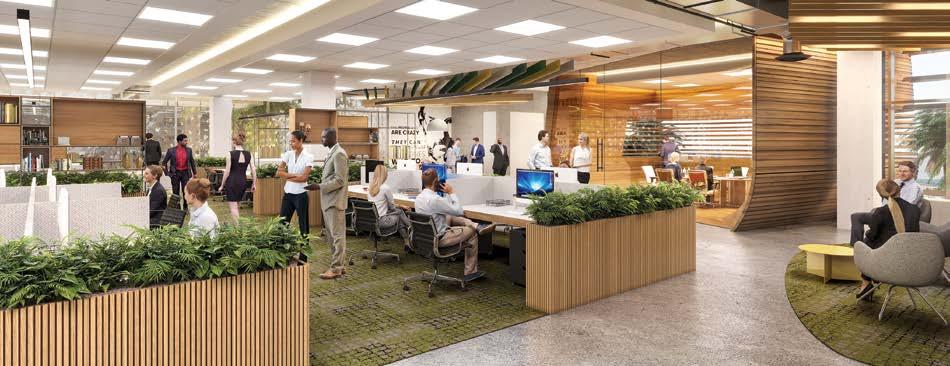
The building’s design incorporated natural light and ventilation – a mechanical ventilation system provides ample outside air (at a rate 33% better than what is required from SANS 10400-O:2011).
The development is designed to reduce the urban heat island effect to minimise the impacts on surrounding micro-climates, human- and wildlife habitats. Evaporative cooling towers or other evaporative cooling systems that creates the risk of legionella disease are eliminated from the design. Air-conditioning will be performed by a variable

refrigerant flow (VRF) system that comprises of several aircooled indoor and outdoor units, connected by a refrigerant piping network. Louvered grills ventilate the basement naturally, an extraction system will be provided for the common toilet area with fans located at roof level. Smoking is prohibited inside the building.
Internally, towering green walls and provision for 10 plant units for every 25m2 of the building improves the indoor environment quality. There’s a cool, green feeling throughout the building.
The Precinct Unity’s landscaping is masterfully designed to contribute to environmental biodiversity, with intelligent irrigation control and moisture sensors saving water. In a three-step process, on-site black water treatment –where grease, odours and large waste is removed from wastewater before bacterial decomposition takes place – allows the chorine-disinfected effluent to be stored in a 32m3 irrigation tank. The treated wastewater and nonpotable water will be used for irrigation.
The focus on wellness extends into leisure and exercise. Fourie explains the lengths they went to: “The stairs were positioned to be as visible as possible, so there is an instinctive choice over the lift. More movement, healthier occupants.” From a leisure perspective, there’s everything from coffee shops and chill rooms, right up to the sixth floor where the vast, glamorous Grand Baie Sky Bar, with its views right to the sea is available for events.
47POSITIVE IMPACT ISSUE 20 PROJECT
Water efficient fittings limit the occupant water usage to 0.55L/day/m2. An energy model of the building was generated and compared it to a notional building model. The building design showed an improvement of over 50% on the South African National Standards (SANS) 10400 notional building, complying with its commitment to minimise greenhouse gas emissions.
All selected gaseous and fire suppression systems and thermal insulants have an ozone depleting potential (ODP) of zero.
Gathering information is key to understanding and managing building systems and assessing opportunities for energy savings. Sub-metering of major energy and water consuming systems are all in place and connected to an effective monitoring system. Occupant awareness and behaviour is considered equally important, and there are visual displays on each floor detailing sustainability factors such as energy and water savings and indoor air quality factors such as air temperature, humidity and carbon dioxide levels.
The bathrooms and common areas are equipped with LED light fittings, operated by occupancy sensors. Parking area lighting makes use of LED luminaires and is equipped with motion sensors. Appropriate lighting zoning and efficient office lighting design with an average maintained illuminance level of no more than 400 Lux will also contribute to the savings. As an example of the detailed thought processes which went into all aspects of the project, Fourie mentioned that all external lights are
A total of 68% of the office area has access to external views.
facing downwards to minimise the effect on migratory birds, prevent disruption on biological rhythms and limit greenhouse gas emissions emitted merely to light the night sky.
Commitment by developers to sustainability goals is echoed by anchor tenant Grit Real Estate Income Group, which has set itself ambitious targets to be achieved by 2026, namely a 25% reduction in the carbon footprint across operations and a 25% increase in building efficiency by reducing water and electricity consumption across the Group.


Shevira Bissessor, COO of Gateway Real Estate Africa sums up: “The whole idea behind The Precinct, was to find innovative, supremely sustainable ways of combining work, wellbeing and a social lifestyle. We drove this Green Star rating from the top, and it’s something we are inordinately proud of. It is very important to us to have a positive impact on the environment and society, and we feel we have achieved both – from playing our role in climate change as part of the real estate sector to ensuring there was a societal compact and authentic job creation component to the project. And we are just completing Phase One –that vision will continue through the next two phases.”

PROJECT 48 POSITIVE IMPACT ISSUE 20
The Precinct enjoys a secure environment with controlled access and will ultimately benefit from a large central landscaped park, diverse recreation options and green settings to enhance the ecological value of the building.
Vision
To be the number one Project
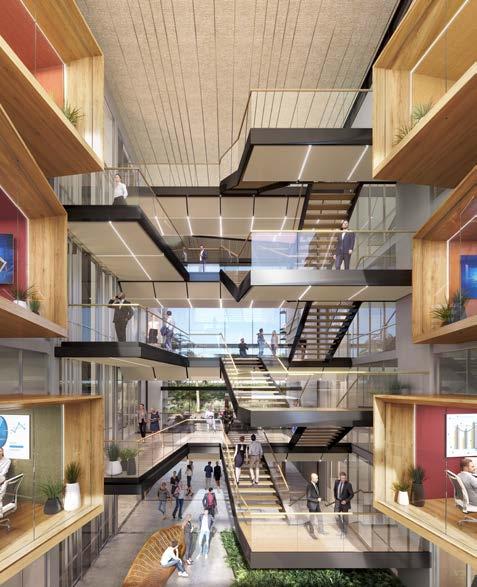
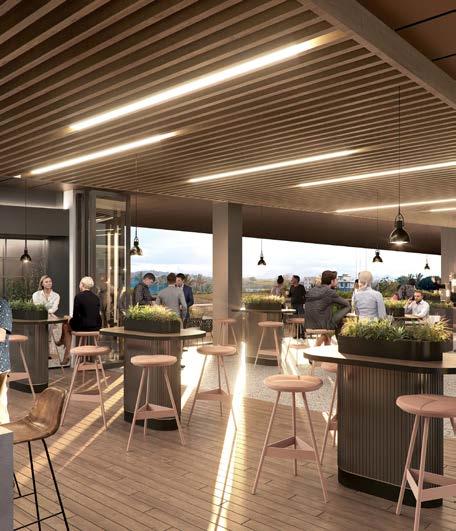
Partner across Africa, delivering innovative solutions to the toughest challenges, getting clients to the ribbon cutting every time!



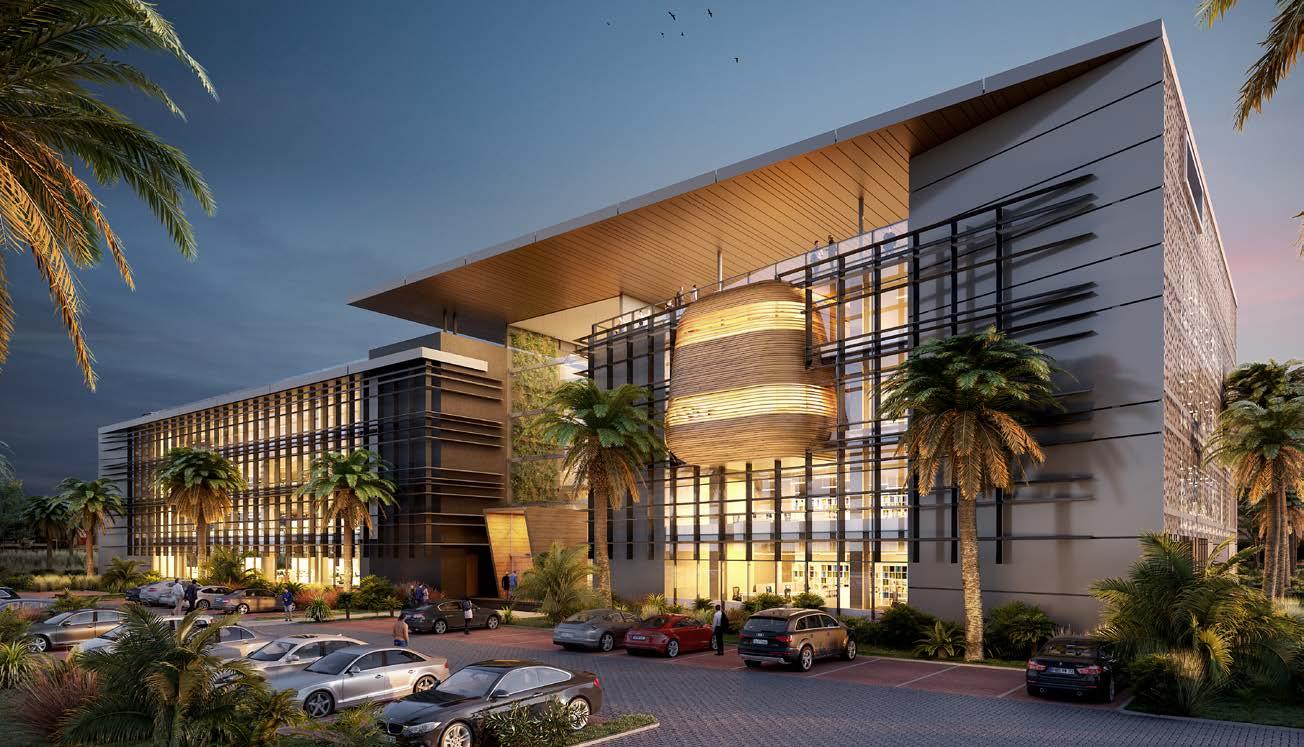
Mission
Consider it done
Management
We are a street wise, kick ass team of project management partners, driven to go above and beyond to solve unexpected problems and deliver complex projects in the most challenging African territories without compromise, because our projects create jobs and improve lives. OUR PRESENCE IN AFRICA Contact Jacques Jacobs Managing Director jacques@hodari.africa | +27 82 334 2148
Delivering solutions in Africa is not a job, it’s who we are!
Strive for Net Zero while saving money at the same time!
Rooftop, solar car-ports, ground mounted solar, and agri-voltaics represent the best value energy available to the energy customer in South Africa.
Blue Sky Energy are experts in the design, procurement and construction of such plants.
Battery energy storage installations provide access to solar energy daily during peak hours when the sun is not shining and enable users to bridge their primary energy needs through grid interruptions.

While the levelised cost of hybrid solar + battery storage installations is significantly greater than solar PV only, appropriately sized solutions can be commercially feasible.
Would you like to know if your property or business can achieve energy security at the same cost or less than what you are paying currently?
Agri-Voltaics and Solar Car Ports
Blue Sky Energy works with leading light steel frame construction suppliers to offer a range of innovative solutions such as agrivoltaics and solar car-ports.
Have you considered putting your spare space to work? Whether you have low value land or large parking spaces, bring them to life through solar PV installations that create energy and high value spaces such as shade for parking or tunnels for agriculture.

Website: www.blue-sky.energy

Email: enquiries@blue-sky.energy
123RF
Did you know that Section 12B of the Tax Act allows for the accelerated depreciation of your power generation capex resulting in a 27.5% saving on your project installation?


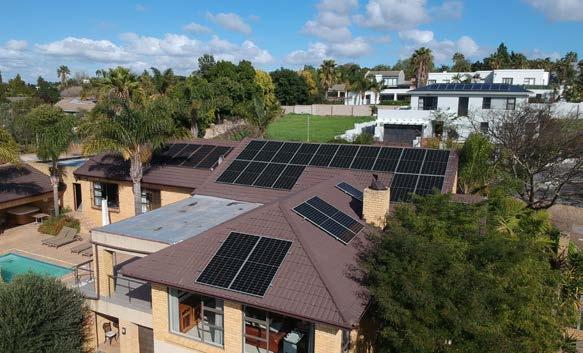
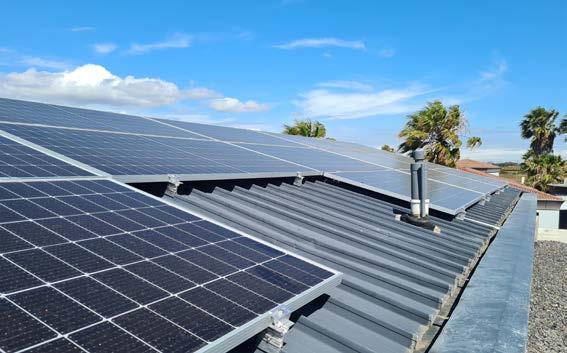

CONTACT THE EXPERTS AT BLUE SKY ENERGY RIGHT NOW!
123RF
A fine-tuned
EXPERIENCE
Located on the highly visible corner of Waterfall and Letaba Drive, Waterfall Corporate Campus adds a 35 000m² secure office park to Gauteng’s burgeoning Waterfall City, developed to be the “ideal place to play, work and stay in the heart of Gauteng”.
 WORDS Nicole Cameron
WORDS Nicole Cameron
52 POSITIVE IMPACT ISSUE 20
NUTSHELL

POSITIVE IMPACT ISSUE 20 PROJECT EXPERIENCE PROJECT
Location: Midrand, Gauteng Project dates: February to October 2019 Green Star rating: 4-Star Green Star ratings, both in Design and As-Built Type of building: Commercial Project size: 35 000msq 53
Apreferred corporate destination, the development consists of seven buildings, each of which received a 4-Star Green Star rating from GBCSA between 2018 and 2022. Dimension Data, Accenture, Isuzu Motors South Africa, Decision Inc., Boehringer Ingelheim, Ericsson, Wood, SASSETA and Continuity SA are some of the clients benefitting from the flexibility which the joint venture between leading REIT Attacq Ltd and Zenprop has created. Corporate tenants are offered the opportunity to customise spaces or subdivide a multi-client building according to individual needs. They also enjoy the added benefit of a central restaurant and two WiFi-enabled 50-seater conference facilities for use by campus clients.
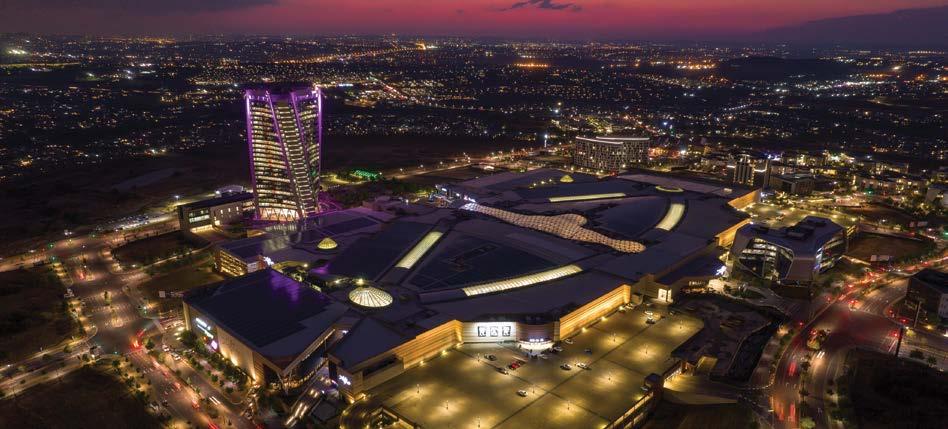

Falling within the sustainable precinct that is Waterfall city, it is no surprise that the buildings forming part of Waterfall Corporate Campus have been built according to green practices. As part of Attacq’s environmental, social and governance (ESG) strategy, sustainability has been a key focus area for the group, with the vision to develop Waterfall City as a safe, sustainable, mixed-use city that provides a vibrant and healthy living environment.
Sustainable building practices apply not only to the design and construction of each building in Corporate Campus – but to the entire life cycle of the development. Attacq believes that buildings should not be considered in isolation from their environments and communities but rather complement and accentuate their surroundings.
“The rigorous focus on material selection, human comfort, air quality and human health features of our buildings rightly prioritises the most important asset of the buildings – people. This development proves that an asset of this size can be maintained and operated sustainably. Furthermore, it confirms that we are getting much right regarding energy, water and waste,” says Attacq.
54 POSITIVE IMPACT ISSUE 20 PROJECT
This development proves that an asset of this size can be maintained and operated sustainably.
The Waterfall Corporate Campus and surrounds.
In line with the commitment to create safe, sustainable spaces for clients and visitors, Waterfall Corporate Campus has been developed with the very best in urban design principles, offering green design elements such as pedestrian walkways and shaded cantered roofs, unique architectural features in each of the buildings, as well as centrally located communal amenities. Miren Naidoo, development manager at Attacq adds, “With elevated market interest in our Waterfall development portfolio, it is imperative that we presented our clients with a comprehensive mixed-use offering that reflects the iconic lifestyle city we have created. Waterfall Corporate Campus showcases the precinct’s ability to house architecturally innovative, and environmentally responsive spaces in which people can connect, unwind and thrive.”
A HOLISTIC APPROACH
Alison Groves, principal sustainability consultant at WSP Africa, and Accredited Professional on the Waterfall Corporate Campus project, says that the standout feature for the development relates to the fact that all seven of the buildings were planned as a whole. “This is not often the case in corporate developments, and here the holistic approach really shines through – from the way the buildings are positioned amidst the landscaped gardens, through to the unifying islands such as the central Maxwell Park Village campus café.” Groves also says that learnings from the first buildings could also
be incorporated into subsequent builds, with project synergies enabling a slick outcome.
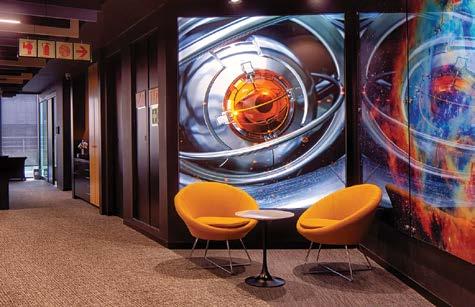

The buildings’ sustainable features can now be considered “stock standard”, given the progression of the green building industry in South Africa. The office spaces in each of the buildings have excellent daylight levels, with daylight glare controlled through interior blinds. In building 1, 60% of the floor plate has direct line of sight to the outdoors, so that employees can benefit from a connection with nature. All of the buildings feature efficient lighting and occupancy sensors, with lights and power separately metered and automatically recorded. Water efficient fittings and fixtures have been installed throughout, with all major water uses sub-metered and recorded through an automated monitoring system. Rainwater harvesting is used for irrigation, complementing smart irrigation systems. Indoor pollutants such as volatile organic compounds (VOCs) from paints, adhesives and sealants, carpets as well as composite timber products are avoided by the use of low VOC and low Formaldehyde products. Air quality is further safeguarded by the introduction of tenant exhaust risers used to extract printer pollutants from usable areas.
This development proves that an asset of this size can be maintained and operated sustainably.

55POSITIVE IMPACT ISSUE 20 PROJECT
Waterfall Campus showcases the precinct’s ability to house environmentally responsive spaces.

All of the Waterfall Corporate Campus buildings are located close to public transport routes, with fuel efficient parking bays for cars and motorbikes having been installed to encourage better choices when it comes to the daily commute. This is further supported by the installation of cycling facilities, which are the ultimate low-carbon commuter choice.



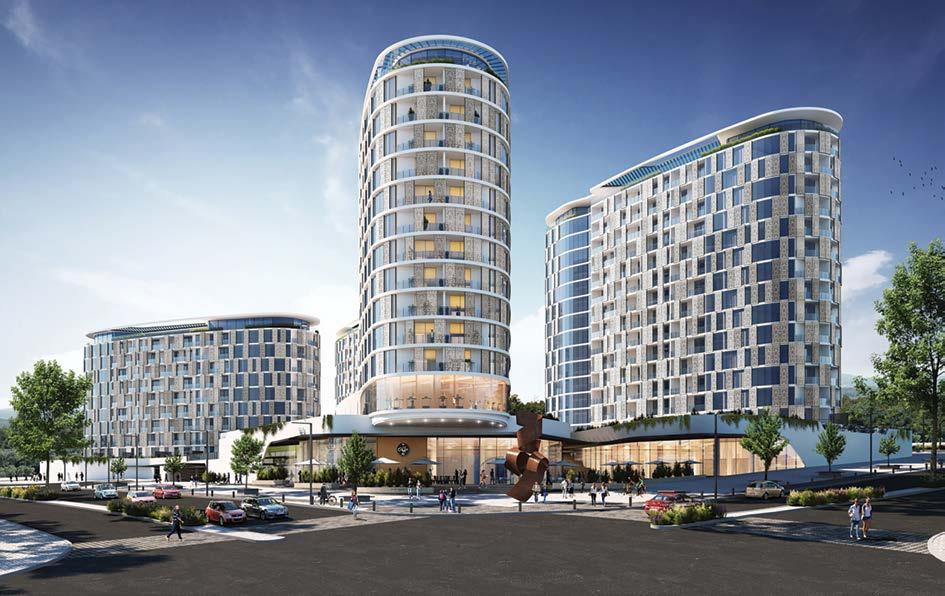
Attaining its 4-star Green Star accreditation in 2021, Building 4 is the fifth building on the campus. With two basements and three floors, it was built with the anticipation of accommodating multiple tenants. The heat recovery model variable refrigerant volume/flow (VRV/F) system makes it possible to achieve simultaneous heating and cooling for indoor units. Outdoor units operate using

inverter or other variable compressor capacity technology to ensure the most efficient operation at all load conditions. Fresh air levels of 12.5 litres per person keep the internal fresh air levels high. The building has very good natural light, and this is complemented by an excellent view of Waterfall Estate. Orientation, selected use of double glazing and the highly efficient VRV heating ventilation and air-conditioning (HVAC) system allows the building to perform 42% more efficiently than the South African National Standards (SANS) notional building.
CONTINUOUS IMPROVEMENT
“A fascinating aspect of this project has been the extent to which we have been able to engage a building tuning process,” says Groves. Building tuning involves monitoring and improving the performance of building services systems during operation, with the goal of “tuning” the building services controls for an improved output. “The fact that the buildings are deeply metered gives incredibly accurate information; a small leak, for example, can be quickly traced and attended to, saving the potential loss of thousands of litres of water. Checking the systems’ occupancy sensors gives good insight into
57POSITIVE IMPACT ISSUE 20 PROJECT
Buildings should not be considered in isolation from their environments and communities but rather complement and accentuate their surroundings.
The rigorous focus on material selection, comfort, air quality and health features of the buildings rightly prioritises the people.
the rhythms of how the building is used, and can give rise to useful information.”
The buildings of Waterfall Corporate Campus are a testament to South Africa’s mature sustainable construction sector. Not only have developers and contractors seen the enormous benefits involved in green investment, but the demand for these buildings by clients demonstrates a commitment and enthusiasm that simply didn’t exist a decade ago. Not only are they keen to acquire a green building for their business, but they are taking ownership over the ongoing maintenance and application of green principles – the ultimate litmus test of success.

A WINDFALL FOR WATERFALL
At the lavish International Property Awards held in Dubai in October 2022, Waterfall Management Company was honoured with the Best Mixed-use Development in South Africa Award for Waterfall City, for the eighth time in nine years. In addition, Waterfall City walked off with two more Best in South Africa 2022-2023 accolades.

Now in their 30th year, the International Property Awards celebrate the very best projects and professionals in the industry worldwide, covering the regions of Asia Pacific, Africa and Arabia, Europe, USA and the Americas, as well as the UK. Judging focuses on design, quality, service, innovation, originality, and commitment to sustainability. Willie Vos, CEO of Waterfall Management Company, says: “Winning the Best Mixed-use Development in South Africa Award again certainly reaffirms Waterfall City’s world-class status. Such recognition is an ongoing achievement we, along with all our partners, are very proud of. It has been an honour to watch this development evolve, and we have entered a new and exciting phase of our evolution as a world-class smart city. We will continue to showcase the excellence of Waterfall City and look forward to what the future holds.”

58 POSITIVE IMPACT ISSUE 20 PROJECT
(Left to right) Guy Steenekamp, MD, LYT Architecture, Steve Brookes, CEO, Balwin Properties, Willie Vos, CEO, Waterfall Management Company.
BUILDING
SAFE HOUSE
No person can erect a building/house without approved building plans prepared by a registered architectural professional.

Any member of the public who erects a building/house without approved building plan prepared by registered architectural professional is considered guilt of an offence.

A member of the public will also suffer losses because the building will be demolished. Furthermore, a person who is not registered with the South African Council for the architectural profession (SACAP) will not be able to advise a member of the public not to build a house on a site which is subject to flooding or does not drain properly.
A building plan prepared by a person who is not registered will be dangerous to
To check if your architectural profession is registered contact SACAP on:

South African Council for the Architectural Profession Tel: 011 479 5000 Email: info@sacapsa.com 51 Wessel Road, Rivonia Sandton,2128
A
BRING THE OUTDOORS INDOORS WITH A GREEN WALL

Green walls are also referred to as eco walls, living walls or vertical gardens. Living green walls are comprised of plants that are situated into a growing medium and then placed on the wall of one’s choice. There are many additional benefits one can experience from jumping on the green wall trend. Vertical gardens have the ability to not only add life and beauty to one’s space but also improve air quality and boost employee morale by providing inspiration and creativity.
Living green walls in corporate offices have been on the lips of forward thinkers for ages, and are currently a hot topic, and will continue to be for some time to come. Green walls are a wonderful addition to any office. In the last several decades, a huge amount of green space has been lost in cities, and this has been accompanied by an increasing level of air pollution. The result is that there has been a rise in respiratory issues like asthma as well as an uptick in allergies. One of the best solutions to this problem is to add green walls to buildings.
Green walls are a perfect option for any company or business that desires the benefits which plants offer, but have floor space restrictions. Vertical gardens add life and colour in a unique and trendy manner that can enhance reception areas, lobbies, hallways, and meeting rooms. Green walls make a powerful visual statement to potential customers and clients, while providing all the known benefits of plants. Having led the way in helping companies across South Africa to green up their office spaces for decades, we’re not only at the forefront of this trending topic, but we’ve also created an art form of it.

BRING YOUR GREEN WALL VISION TO LIFE
Execuflora has the ability and knowledge to bring your green wall vision to life. Our green walls can be custom designed to your requirements. This means that we can help you bring your vision to life while helping you maintain your company’s identity, by adding your logo or elements that you require. Green wall maintenance might pop into your mind as a reason for you to not embark on the
journey of adding a vertical garden to your space, however, Execuflora not only offers the ability to custom create and install your vertical garden, but we also offer the option to assist you in maintaining your living artwork. Execuflora offers a large variety of green wall styles that you can choose from. Our wide range includes fixed green walls, spacedividing green walls and preserved moss walls, suited for any budget or space.
Let Execuflora help you bring the outdoors indoors and transform your environment to add a unique selling point to your company’s space. Jump on the opportunity to give your staff and customers a conversation starter. Contact us today to receive a quote on adding a touch of green and life to your work environment.
Western Cape Branch - 086 111 3247 Unit 1 Carpenters Yard, 384 Voortrekker Rd, Maitland, Cape Town
KwaZulu Natal Branch – 086 111 3339 1st Floor, Trafalgar Building, 141 KE Masinga Rd, Durban
Gauteng Branch - 011 025 9933 Plot 111, Old Pretoria Rd (R114) Nietgedacht, Gauteng
Eastern Cape Branch - 086 111 3247/083 750 1042 www.execuflora.co.za

ECO WALLS 60 POSITIVE IMPACT ISSUE 20


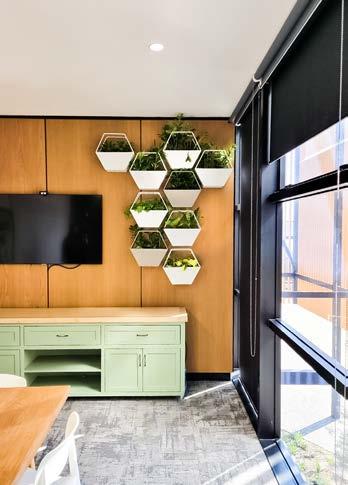




“Bringing The Outdoors Indoors What Execuflora is all about Redefining the possibilities of your space by adding a touch of green to your interior, no matter your budget or space. Get in touch with us Gauteng Western Cape Kwa-Zulu Natal Eastern Cape 011 025 9933 086 111 3247 086 111 3339 086 111 3247 Scan QR Code to visit our website www.execuflora.co.za @bidvestexecuflora Bidvest Execuflora Bidvest Execuflora
is an attractive number

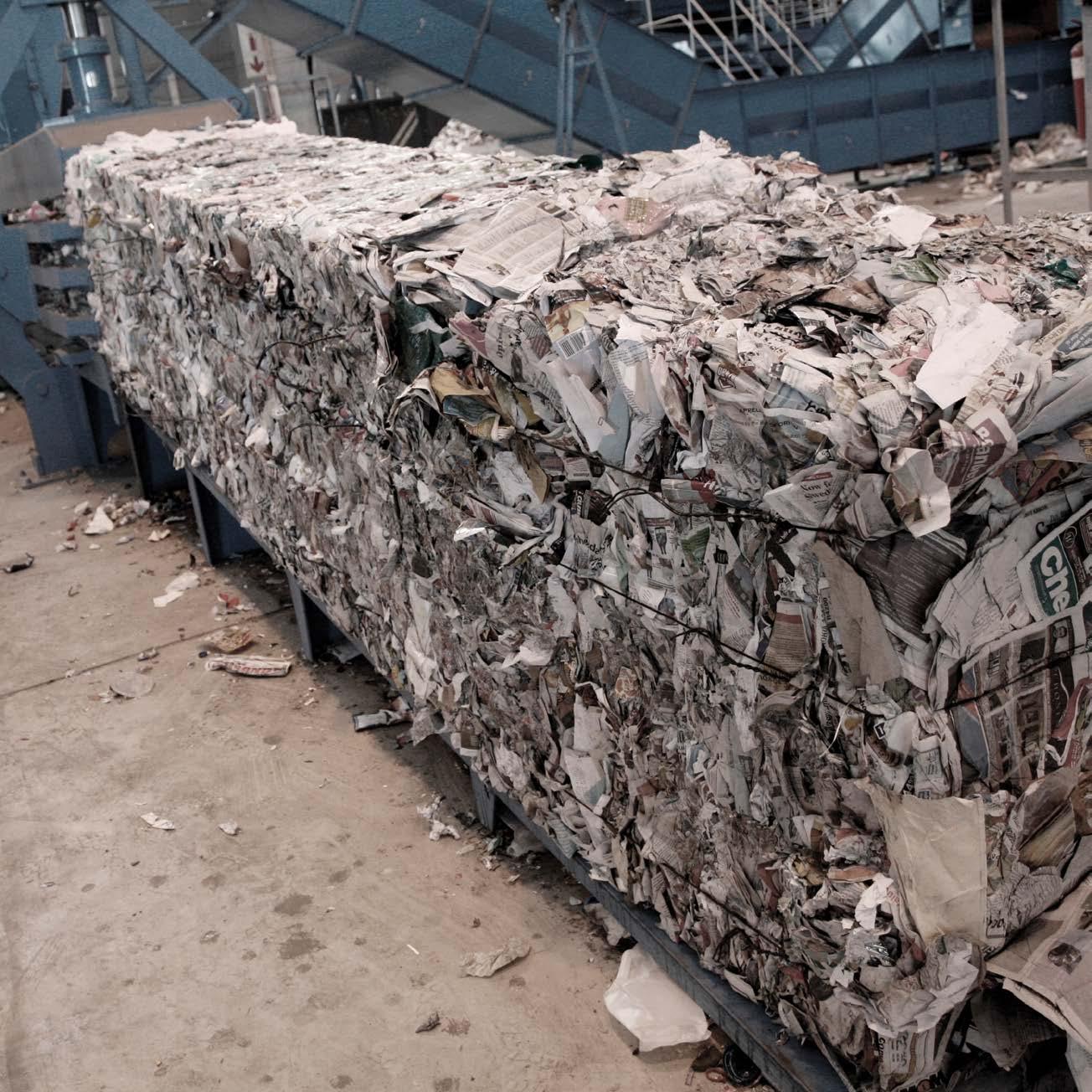

ZERO
The goal of net-zero waste in building operations is to eliminate operational waste and to ensure that all waste is repurposed or recycled. It embodies the concept of circular economies that forms part of our definition of what it is to be sustainable. The question is, what solutions are available to building management that ultimately divert 100% of solid waste away from landfill?

WASTE 63POSITIVE IMPACT ISSUE 20
WORDS Kim Hoepfl
Waste management is one of the main sectors expected to drive South Africa’s green economy. There needs to be a clear strategy, supported by an efficient waste management plan and operations.
The journey to Net Zero Waste, which is the process of reducing, re-using, and recovering waste streams to convert them to valuable resources with zero solid waste sent to landfills, is an aspirational one. Large drivers to support this ambition are recycling and composting processes.
With an aim to achieve Net Zero waste readiness by the end of 2022 to achieve its accreditation in 2023, L2D is doing its part to contribute towards the prevention of climate change.
• L2D’s goals are aligned with the UN SDGs and South Africa’s National Development Plan (NDP): Vision 2030, which is our country’s specific response to integrating the SDGs into our overall socioeconomic development plans.


• Through a clear strategy and changes in waste management operations, L2D has been able to double its waste diversion rates to 84% (by weight) in June 2022.

• Once optimal levels of recycling, composting, and waste diversion from landfill are achieved per site, alternative waste treatment processes will be used on residual waste.
SMART Spaces: We maximise insight obtained from smart data solutions, with opportunities to be delivered alongside traditional experiential strategies.

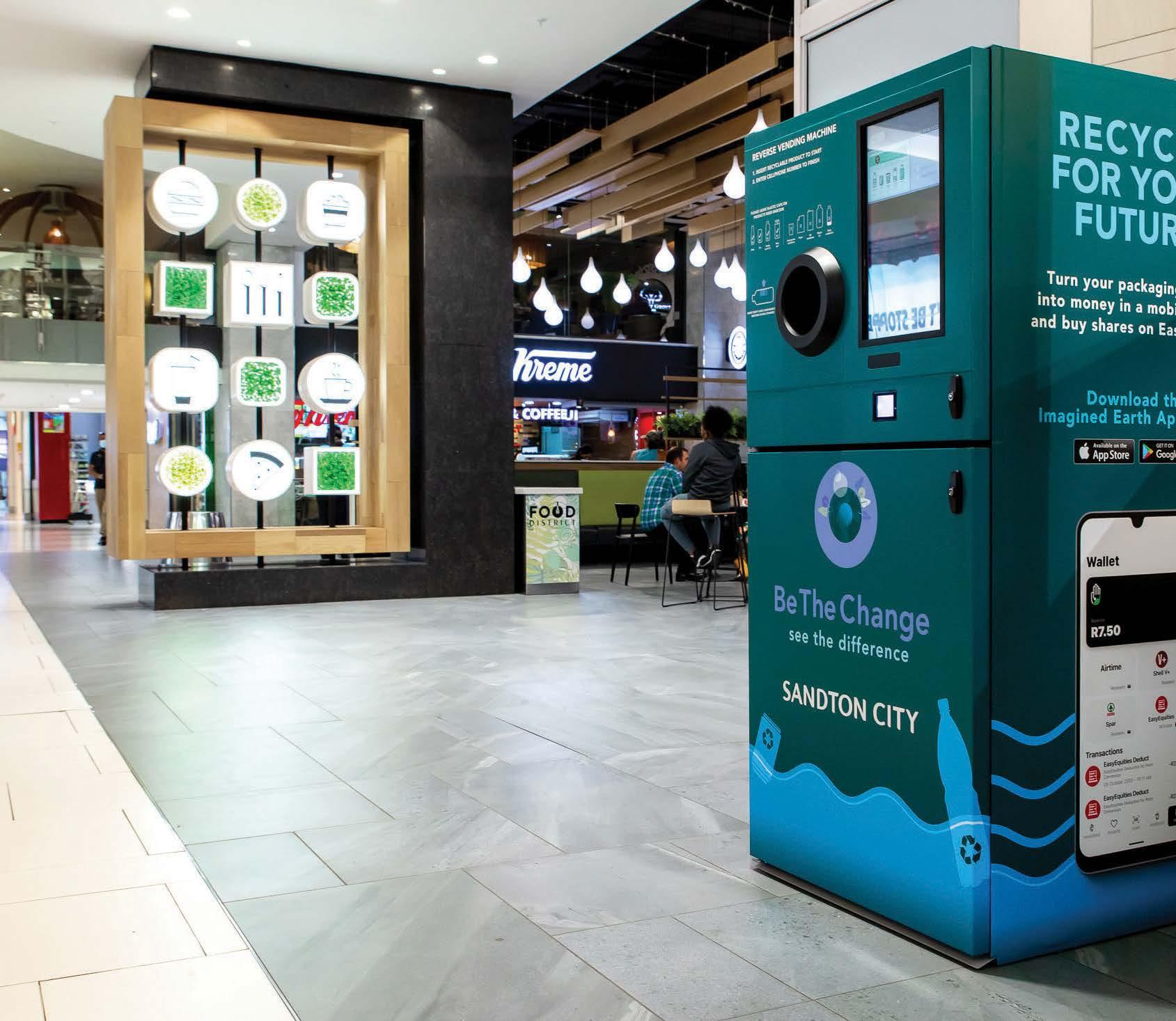
Good Spaces: We create robust assets that will benefit generations, allowing for agile and adaptable environments that align to net-zero goals.
Interactive Spaces: We have a vision to create vibrant and diverse spaces with experience at their heart.
Safe Spaces: We drive a clearly defined mall strategy that ensures the mall environments hold the highest standard of safety and security for tenants and shoppers.
www.liberty2degrees.co.za
L2D set to achieve its Net Zero Waste status through innovative technologies implemented at its properties
According to futurefitbusiness, waste refers to all materials generated as by-products of production and other operational activities, and which require treatment, repurposing or disposal. This includes both hazardous and non-hazardous manufacturing materials.


There are good reasons to pursue zero waste: landfill side-effects and finite resources of materials whose extraction methods are destructive to human and ecological wellbeing. All segue into the prevention of global warming and having the energy, clean water, fresh air and fertile soil to make life possible for a projected world population of 9.7-billion people by 2050. They are what underpin the purpose of the United Nationals Sustainable Development Goals (SDGs).
Demand for virgin materials can be directly mitigated, reducing the need for landfills, if materials are not discarded. This is a practical task. In answer to the “how” question, GBCSA has devised the Net Zero Waste Certification (Certification 18), which can be applied to both new, existing and operational buildings. Level Two, the operational phase, applies to buildings that annually reduce, reuse, recover and repurpose their waste streams, with the eventual outcome of zero solid waste reaching
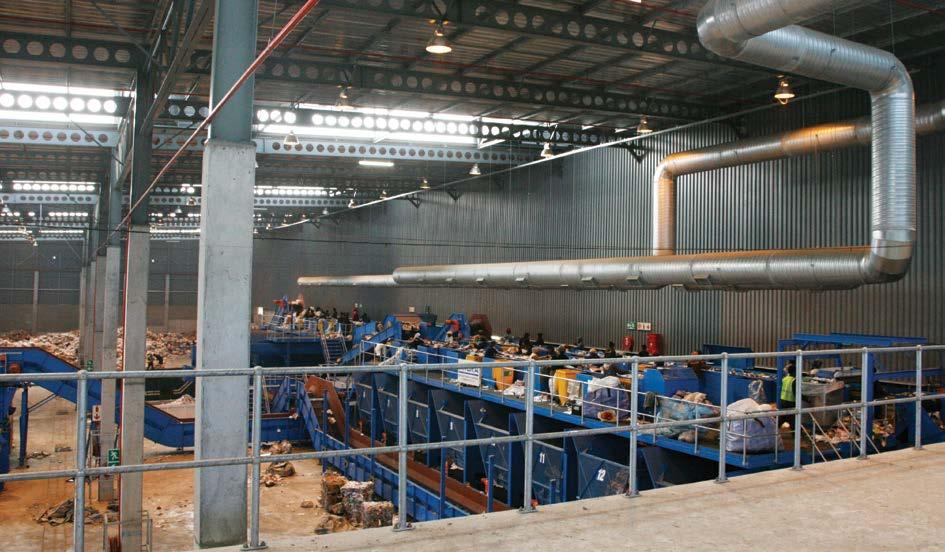
landfills. Additionally, building management can take waste from other sites and incorporate it into their waste stream treatment. This is Net Positive.
Let’s look at why landfills are problematic. Landfills exist for the disposal of organic and inorganic materials no longer considered useful, and that therefore count as waste. Landfills sequester the waste that makes it into our natural environment, keeping communities clean. However, while they are necessary, they are not environmentally benign. Here’s why.
GLOBAL WARMING
Methane, carbon dioxide, nitrous oxide and ozone are gases present in the earth’s atmospheric sheath. They absorb the sun’s heat, but their increasing concentration prevents its escape just like a greenhouse, hence their name, and bring about global warming.
The most pressing landfill concern is the generation of methane gas, which is 24 times more effective at absorbing solar heat than carbon dioxide. South Africa, as a signatory to the Paris Agreement, is committed to transitioning to an economy that will prevent a further global temperature rise beyond 1.5˚C within the next seven years.
65POSITIVE IMPACT ISSUE 20 WASTE









LAND USE
Landfills cover multiple acres and usurp the commensurate amount of natural habitat. The land could be put to more constructive purposes such as housing, agriculture or necessary green space, which has psychological benefits for human wellbeing while also reabsorbing atmospheric carbon.
LEACHATE
Operational materials such as e-waste, batteries, glass, aluminium as well as some varnishes and paints contain elements of uranium, mercury, lead and radon gas. When dumped their decomposition produces leachate, a toxic liquid pollutant.

PLASTIC
Plastic still has a long way to go until it becomes fully biodegradable. Its manufacturing ingredients are derived from fossil fuels, whose processing is greenhouse gas (GHG) emissions intensive. Furthermore, plastic that ends up in our aquatic systems and which is ingested by fish and seabirds results in their harm or death.
FINITE CAPACITY
Raw material supplies are finite and need to be conserved.



The model of circular economy, by contrast, seeks to stop waste from being produced in the first place.

67POSITIVE IMPACT ISSUE 20 WASTE
Keeping materials out of landfills is an obvious solution and requires a redefinition of is considered “waste”. Our current economy extracts virgin materials, makes products with them and eventually throws them away as waste. This is a linear process. The model of circular economy, by contrast, seeks to stop waste from being produced in the first place (Ellen McArthur Foundation). Instead of discarding products, their materials are kept in use as components for something else. This turns waste into something valuable, as Bertie Lourens of WastePlan points out, “Waste is no longer waste. It is an asset that is seeing consistent increase in its value”. A circular economy is what underpins the transition to renewable materials and energy. It has both organic

(biodegradable) and technical cycles (recycling). Brian Unsted of Liberty Two Degrees cites these as being the greatest impact areas for the treatment of operational waste. In its organic cycle, organic materials such as food are composted or anaerobically digested. During its technical cycle, products are shared, leased, re-used, refurbished or recycled.
To date, there are two buildings that have manged to achieve Net Zero Operational Waste (Virgin Active Constantia and Wild Coast Sun) and one that has managed to achieve Net Positive Waste (House Baldwin Ragaven), which shows that while it’s a complex task, it is possible.




68 POSITIVE IMPACT ISSUE 20
WASTE L2D
Liberty Two Degrees’ net-zero roadmap.
HOW TO ACHIEVE NET-ZERO OPERATIONAL WASTE
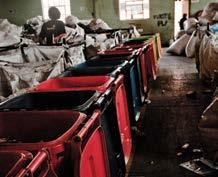
STEP 1
Identify and quantify waste streams




A company’s first step should be an analysis of the types of waste generated. A thorough waste audit – which produces high quality data – will do this for you, by examining what you are disposing of and opportunities for its diversion from landfill. Unsted continues, “We went through a robust process to understand waste management practices that would align with our goals. To ensure cooperation, we needed a model that would reward service for recycling and grant tenants’ rebates for supporting recycling initiatives.”
The GBCSA methodology undertakes actual measurements of operational waste streams, including audits and waste management plans. Pathways 1 & 2 demonstrate waste management practices are in place through ongoing waste measurement and data collection. Here is an example: Waste is collected at source, meticulously sorted and weighed, which is imperative to avoid contamination. Contamination occurs when packaging is marred by traces of food, raw meat, blood or oil, for example, and cannot be recycled. The resulting data is recorded in a report of your waste profile which details all your categories of waste (food, glass, plastic, paper, batteries, etc), their quantities, and indicates how much is recyclable, or is biodegradable. Accurate data reporting is therefore crucial to enable a full view of your business’ environmental impact.

STEP 2
Draw up a waste management plan
A waste management plan determines how waste streams can be appropriately treated and by whom – on site or third parties – targets to be reached and should be in accordance with GBCSA’s Green Star Existing Building Performance tool’s pathways 1 & 2.
That recyclable packaging waste is a valuable manufacturing resource, says Lourens, is because “it is driven by legislation and extended producer responsibility (EPR)”, which states that “packaged items must contain a percentage of recycled content, obligating brand owners eg Shoprite, and packaging manufacturers to incorporate recycled material, thereby elevating its value”.
To ensure that a waste management plan service provider helps you extract this value from your waste, Lourens suggests three points to consider:
Model 1. Waste companies invested in transport
equipment and landfill sites profit from waste reaching landfill, which is counterproductive to achieving zero waste.
Model 2. Places staff on site to sort mixed waste prior to recycling, which is also contrary to achieving zero waste. This is because it is method conducive to contamination. The solution is to separate waste at source, which is its direct point of origin eg a kitchen, to prevent it from being mixed with contaminated waste.
Model 3. Service providers who profit from every kilogram diverted from landfill will ensure uncontaminated separation at source.
STEP 3
Recycling solutions
Recycling solutions determine what then happens to that waste and are boosted by innovative technology. The L2D journey to zero waste in shopping malls, the amount of food waste generated by restaurants and fastfood outlets, including fat trap waste, made composting facilities strategically essential to diversion from landfill. In-vessel onsite composting machines enable this, with current diversion rates approaching 90% by Q4 2022. Lourens also cites biodigesters that take in decomposing methane-emitting organic waste, which capture the methane to power gas electricity generators.
Furthermore, technologies like a pyrolytic energy plant (locally available in 2023) close the loop by keeping residual items that cannot be recycled, such as multilayered plastic laminates like a chip packet, out of landfills. Pyrolysis incinerates items anaerobically, turning solids to gas. A portion of this gas is cyclically extracted from the system and returned to it as fuel. The remainder of the syngas is put through a generator to produce electricity.
STEP 4
Audit performance
The final step of your plan is to regularly audit your performance. An accurate report relies on accurate data collection. Excellent data enables meaningful comparisons and benchmarking to be conducted within portfolios and between contractors. Audit reports provide insight into operational efficiency, and by accurately measuring current performance inform strategic planning targets, to ultimately achieve greater resource recovery. And this is the road to net zero waste.
69POSITIVE IMPACT ISSUE 20 WASTE

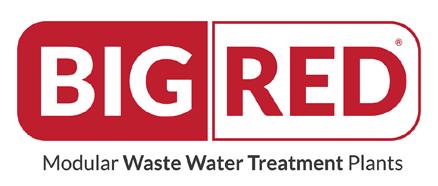

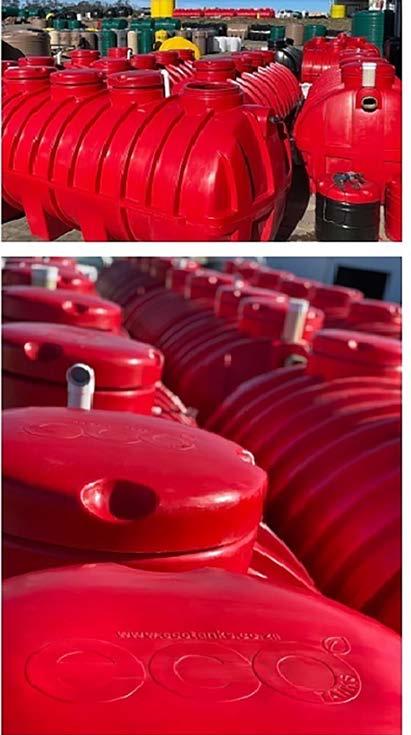

FEATURES & BENEFITS • Completely plug and play, modular Waste Water Treatment Plants • Flow-rates from 1kL/day-400kL/day • Domestic plants from 4 people to 12 people (garden cottages to large homes) • Commercial/industrial custom designed systems up to 2000 people • Manufactured using virgin LLDPE • 100% recyclable • Re-use every drop for irrigation, dust suppression, toilet flushing and many other applications • Treats combined grey and black “whole house” effluent • Eco Tanks is SABS ISO 9001 2017 accredited • Discharge parameter meets and exceed DWS general standards • Below ground, above ground, containerised for export • Biological (AR, MBBR and RAS) process • Ideal for remote estates, rural schools, clinics, hospital and urban developments • No municipal sewer connection available? No problem • Cost-effective and efficient and solar compatible • Access to sanitation is a right, not a luxury BIG RED® SOUTH AFRICA’S NEW KID ON THE BLOCK Brand new, tried and tested modular waste water treatment plants SCAN FOR MORE INFOThe new household name in water tanks
: MODULAR PACKAGE WASTE WATER TREATMENT PLANTS

After many years of treating waste water with a combination of old school underground septic and conservancy tanks, clever plumbing and mechanical know how, the technical team behind the Big Red joint venture is proud to release the latest blend of technologies in waste water management for domestic and industrial use.
BigRed is an all-in-one waste water treatment system, capable of treating a wide range of wastewater conditions, and turning black and grey water into recycled effluent for irrigation purposes. The development of this product was in response to the demand for a packaged solution, and was the result of combining all the parts and processes required in a successful treatment plant, into one ‘plug & play’ unit, which is now available to South Africans off-the-shelf and ready to install.
The design team have created a modular design, which is scalable, making the waste water treatment plants available in a wide range of sizes. By simply connecting one’s domestic sewer pipe to the inlet, the black and grey water enters the custom-designed multi-chambered septic tank. Here, separation and break down of organic solids occur. Partially treated effluent gradually feeds into the bio-reactor, oxygen is introduced, followed by the aerobic digestion process. The treated effluent then enters the disinfection chamber, and goes through an in-line chlorinator, ready to be used as irrigation water.
The durable system is manufactured using pure linear low-density polyethylene and is 100% recyclable. It can be installed below ground, above ground or containerised for export. This makes it ideal for remote estates, rural schools, clinics, hospitals, and urban environments. The product is also cost effective, efficient, and solar compatible, and offers flow rates from 1kl/day to 500kl/day. Domestic plants can cater for between four and 12 people, where commercial or industrial, custom-designed systems can cater for up to 2 000 people.
The systems can effectively treat a combination of grey and black “whole house” effluent.
The Big Red system is South African Bureau of Standardsand Organization for Standardization 9001 2017-accredited, and discharge parameters meet and exceed Department of Water and Sanitation general standards. This means that the treated effluent is discharged lawfully back into the environment.

“We believe that Big Red is the future for modular waste water treatments,” says business director Clinton Havenga. “Every drop of water counts, and should be re-used for irrigation, dust suppression, toilet flushing etc. Access to sanitation is a right, not a luxury, and, as market leaders, we are striving to be creative and stay true to our brand. Join us on our journey,” he says.
Clinton Havenga Cell: +27 82 319 5185 Clinton@aquao2.co.za www.ecotanks.co.za www.Aquao2.co.za

71POSITIVE IMPACT ISSUE 20 WASTE
Big Red HQ
Big Red 75 - Savuti 1
WATCH VIDEO HERE

REPORT 72 POSITIVE IMPACT ISSUE 20 It’s industrial properties’ TIME TO SHINE
Industrious and thriving local economic activities are bound together by the network of buildings near and far. GBCSA’s wildly successful Existing Building Performance rating tool has been customised for industrial buildings, potentially decreasing the cost of doing business and increasing the economic benefits across the sector.

73POSITIVE IMPACT ISSUE 20
WORDS Alan Cameron IMAGES Growthpoint
Regional and national economies are tied together by value chains strengthened by a robust network of industrial buildings. These are the sites of industrious enterprise; they generate work and can massively multiply job opportunities. Enabling these buildings to shelter often-fragile economic activity against the storms of global warming and rising business costs has never been so important.
A significant cost-saving in any business asset helps to make it more adaptive to future pressure, and mitigating the rising costs of energy, water, waste and emissions in industrial complexes follows the proven successes in commercial and residential sectors.
The GBCSA board gave a directive that the standard EBP tool should be specifically customised for existing industrial buildings to become the EBP Custom Industrial Pilot rating tool in December 2020 and is headed up
Industrial buildings play a key role in the smooth running of national and regional economies.
internally by GBCSA technical manager, Jenni Lombard. The tool is a custom version of the established EBP tool credited with greening the commercial sector.
This iteration of the tool holds the same potential for industrial properties, says Grahame Cruickshanks, head of sustainability and utilities at Growthpoint Properties. As a founding member of the GBCSA, and committed advocate for a more sustainable built environment, Growthpoint Properties came on board to sponsor the EBP Custom Industrial tool development.
Situated within the bustling node of Meadowdale, Germiston, Growthpoint Industrial Estate (above and below) provides easy highway access and is close to O.R. Tambo International Airport.


74 POSITIVE IMPACT ISSUE 20 REPORT
EWP AND ESG TIES
With a portfolio of assets in South Africa, spanning all three traditional property sectors (office, industrial and retail), Growthpoint notes that the GBCSA Energy Water Performance (EWP) benchmarking tool, which is integrated into the EBP tool gives property owners a grassroots understanding of the property’s efficiencies and costs, and a tree-top perspective on sustainability and financial products, especially as lenders increasingly invest in programmes characterised by environmental, social and governance (ESG) criteria.
“In the last two to three years investors have begun assessing ESG reports and metrics closely to evaluate the bankability of investments. Long-term returns are being linked to ESG performance, with better ESG metrics making a good investment great,” Cruickshanks notes. “Many tenants have ESG targets linked to their ESG strategies. This applies especially to listed and multi-
WHAT’S DIFFERENT?
The EBP Custom Industrial pilot rating tool follows the same structure as the current Green Star – EBP v1 tool, but with adaptions and benchmarks specific to the industrial sector. The differences property owners can expect to see are:
• Credits that are better aligned with the varied kinds of industrial building typologies. With respect to energy and water, benchmarks have been put forward for specific sub-categories such as distribution centres, warehousing, light manufacturing and workshops. All energy and water usage is included within the benchmarking process, with certain conditions set out for the exclusion of unusually large process loads.
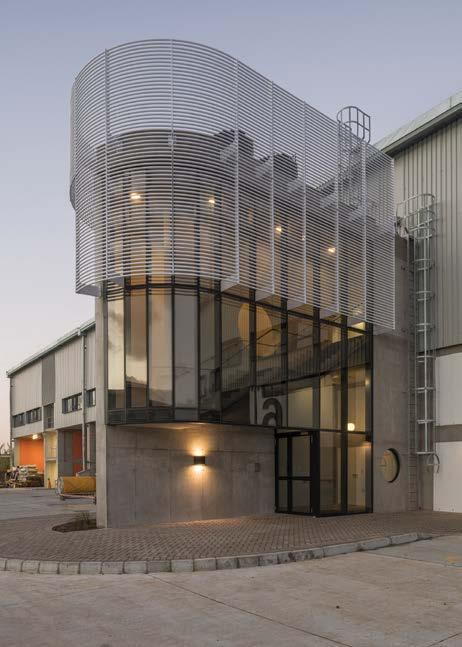
• A new Energy and Water Benchmark Framework that can be used when following benchmarking operational performance for the industrial subcategories. This has been developed from a dataset collected specifically from existing industrial buildings and will perform the function of providing a simplified industry benchmark, but one that has taken some normalising factors into account. Existing operational performance data was contributed by major REITS, analysed by the appointed sustainability consultants and new benchmarking parameters were set to form this framework. “The significance is that it will tangibly support industry by offering a standardised methodology for analysing energy and water performance data both for comparisons (that is, to compare apples with apples) as well as in offering indicative benchmarks based on primary data that has been collected,” adds Smit.
Growthpoint’s Greenfield Industrial Park in Cape Town was awarded South Africa’s first ever Green Star rating for an industrial property. It received a 4-Star Green Star Custom Industrial As-Built certification from GBCSA. Setting new benchmarks for sustainability in the South African industrial sector, Greenfield achieved full scores for energy efficiency for its rating. It will be a key pilot project for net-zero energy buildings in the country, because the base building (excluding tenant loads) produces as much of its own energy as is consumed by it over the course of a year.
• Credits that support property owners and tenants working together at improving assets. As with the EBP v1 tool, property owners can address some credits without necessarily involving tenants. However, for many of the credits relating to building management practices such as waste management, green cleaning and so on, it will be necessary to have the tenant commit to implementing such procedures. “The custom tool incentivises increased engagement with tenants. We believe that this will be critical not only in the success of the tool but also has huge potential knock-on effects into tenant processes,” says Retief.

75POSITIVE IMPACT ISSUE 20 REPORT
The Wadestone Industrial Park in Wadeville, Germiston.
national companies and occupying a Green Star certified building makes a positive contribution to many company ESG strategies and targets.” Cruickshanks is confident that the industrial construction sector will take the opportunity to improve their assets through certification.
“One of the key successes of the Green Star EBP rating tool in the commercial office sector is the inclusion of green building rating as an enhancement to total return on investment as well as property values. Green-rated property portfolios also comply with many investor ESG requirements adding further value in the form of investor attractiveness. The widespread application of the Green Star EBP rating tool to P and A-Grade commercial office buildings has supported the adoption of green building in the majority of listed and many unlisted property portfolios as a must-have,” Cruickshanks says.
JUSTIFYING INVESTMENTS
The demand for an industrial version of the tool reached a tipping point in December 2020, despite the thenpresent reality of the Covid-19 pandemic. The validation of Growthpoint’s investment was quickly achieved as the industrial sector outperformed other property classes during, and in many cases after, the pandemic. It grew with the increased use of warehousing and distribution services used by on-demand logistics companies and was also flexible enough to accommodate tenants down-sizing. The non-speculative nature of industrial tenancies and developments also helped the sector to deliver to investors, the Rode Report on SA Property Market 2022:2 notes.
The GBCSA’s existing Green Star – EBP tool is aimed at rewarding buildings that are managed sustainably well, can demonstrate good operational performance over a measured period and that contribute towards better quality spaces for tenants. “When the original EBP tool was developed, it endeavoured to take as many building typologies as possible into account, but there were nonetheless limitations, and, in reality, it has largely been applied to the commercial office segment of the market,” explains GBCSA head of technical, Georgina Smit.
The customisation process was adopted to ensure that GBCSA can offer market standardised guidelines

for energy and water benchmarking of industrial buildings, as this did not exist in the South African property market. Furthermore, nuances around industrial building ownership needed to be slightly reconsidered within the tool to better serve the market. For example, many single tenancies operate on triple net leases which places a lot of the operational decision-making with the tenant and not the landlord.
The industrial typology is an interesting one because the sector itself is quite varied, with sub-categories including distribution centres, warehousing, light-manufacturing, workshops and more, comments Francois Retief from Sow and Reap who along with Imbue Sustainability assisted with the tool customisation. Also, because the leasing structures place more responsibility on the tenant than the property owner, issues of sustainability in the building are often neglected as they are seen as secondary to the industrial activities themselves, or responsibility is unclear between owners and occupiers. “As such, it is important to create a framework which allows for landlords and tenants to work together at improving the assets,” adds Retief.
Better-managed and better-performing green industrial buildings have great potential to decrease energy and water consumption, as well as reduce waste-to-landfill production. Furthermore, warehousing and distribution centre types of buildings have the capacity to generate more energy than the building demands, enabling them to be exporters of energy.
Plenty of roof space and large hard surfaces make industrial properties well suited to achieving efficiencies in power and water. Beyond stacking solar PV on these large roofs, the electrical load is low for warehousing, logistics and distribution centres as it is mostly required for lighting. And this draw is dialled right down in those properties that have their natural lighting design done correctly, says Retief. Examples can be seen when natural
A significant cost-saving in any business asset helps to make it more adaptive to future pressure.
The Wadestone Industrial Park in Wadeville, Germiston.
76 POSITIVE IMPACT ISSUE 20 REPORT
lighting is allowed through vertical façade elements and vertical roof light. By starting the sustainability journey on the architects’ drawing board not only does the building take full advantage of natural lighting but it also requires minimal additional lighting. And besides being extremely efficient, motion sensors can dim and switch off lights automatically when there is no activity.
To the question of the benefits of the added complexity of quashing artificial lighting requirements through passive design, and if it is worth it when lighting is a seemingly low expense. Consider then the frequent double-digit annualised increase that power costs present each year for the lifetime of the building, as well as the present unreliability of state electricity supply. Beyond the impact on the environment, the business security that uninterrupted, convenient use of a facility designed for optimal use increases the attractiveness of the premises for its users, who before signing the lease will consider in minute detail how the premises aligns with their business needs.
Reducing the need for other municipal services such as potable water use and solid waste collection dovetails into this too. Harvesting grey and waste-water runoff is often a simpler matter at industrial properties with the long straight lines typical of rectilinear properties. Reticulating this water for toilet flushing, landscape irrigation or even washing of vehicles contributes to mitigating an ongoing cost. Effective on-site waste separation and recycling outsourced to a wastemanagement contractor with the ability to collect and account for it, further contributes to the growing ESG metrics for owners and tenants.
“Industrial buildings, such as warehouses, manufacturing plants and logistics facilities play a key role in the smooth
running of national and regional economies. It’s vital that these assets are future-proofed for the impacts of a changing climate and the rising costs of energy, water, waste and emissions, as well as delivering other benefits for their tenants,” explains Errol Taylor, head of asset management: industrial at Growthpoint.
THE ROUTE TO CERTIFICATION
“Smaller property owners could leverage opportunities where the inherent building design lends itself to an EBP rating. Many of these features are already included in a building specification and if the building is well operated it means less of a leap to certification,” notes Cruickshanks.
The route to certification will include an accredited Green Star consultant evaluating energy and water performance through 12 months of utility accounts, assessing the site and engaging with occupants. Discussing how building occupants can utilise efficient design and proactive behaviour to take advantage of environmental and social stewardship opportunities enables the certification to water the seed germinated through certification to establish a thriving legacy.
Taylor anticipates that over time the new tool will demonstrate that Green Star – EBP Custom Industrial certified buildings outperform non-certified industrial buildings against ESG criteria and financial returns on investment. Smit concludes: “GBCSA hopes to support the market transformation of the industrial sector, in the same way it supported the journey of the commercial office space, with this tool. We are also hoping to embark on a journey of continuous energy and water data collection to refine benchmarks for future iterations of the EBP tool.”
Energy efficiency is at the core of the Mount Edgecombe Business Park. Motionsensing warehouse lights can be set to 50% or 100% and change with the quality of outdoor light which streams into the bright, airy buildings through the clever use of translucent polycarbonate sheeting.

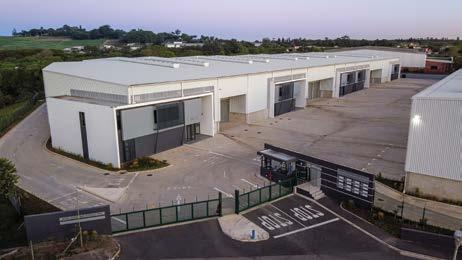

77POSITIVE IMPACT ISSUE 20 REPORT
Peikko are Forerunners.
What does that mean?
• A rich heritage: Peikko was originally founded under the name of Teräspeikko by Jalo Paananen. Now Peikko is owned by the second and third generations of the family – continuing the work.
• Independence: Manufacturing operations in 12 countries, we can guarantee safe, standardised and quality production.


• Innovations: Our products have shaped the construction industry and some of Peikko’s innovations still hold their ground as industry standards to this day.
• Being an inspiration to others: Thanks to our constant innovation, our products get copied a lot, but we take it as a compliment.
• Shaping the future: We constantly keep up-to-date with the latest trends in the industry and take part in standardisation work globally to make the construction industry faster, safer and more efficient.


Peikko South Africa (Pty) Ltd
values
Director:
Engineer:
As a family-owned company, our roots are in customer-orient ed innovations. We have a strong set of values that guide the way we work and interact with others.
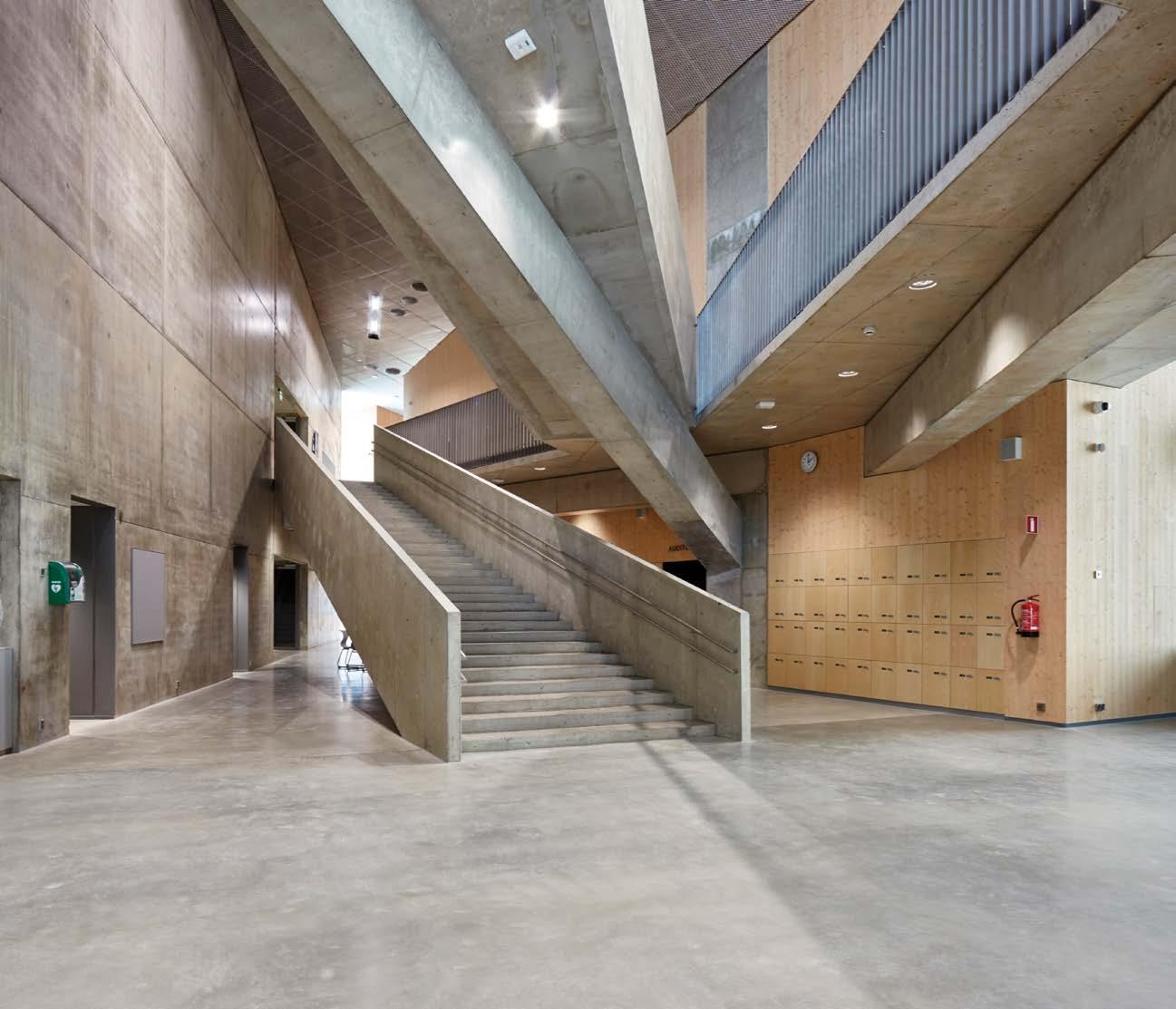
www.peikko.co.za Managing
Daniel.Petrov@Peikko.com Project
Winston.Visser@Peikko.com For Additional Information:
#WE ARE WATER But will this way of thinking last?


80 POSITIVE IMPACT ISSUE 20
Thataside, it’s important that we not only have sufficient water but that it is also of a quality that is fit for purpose. To say that a water problem is looming is almost historical in statement as the problem is here and with us now. As the world population continues to grow so do we require more and more from the environment around us and at the same time our activities in all their spheres have an ever-increasing impact on the earth, our continent, our country, including our own neighbourhoods.
The impacts of our actions and those around the world, are already with us in the form of climate change, increasing sea levels, melting poles, erratic weather conditions and even water conflicts. Closer to home, in South Africa, these impacts have been felt in the form of severe droughts, extreme rainfall events and excessive demand. Added to this, the challenge of non-revenue water is sitting at an extremely high level of approximately 42%.
Each of these threats has so many varied knock-on effects to our society, economy and natural areas. The various risk models produced from a range of sources all point to most areas in South Africa having a long-term negative water situation, whether it be from a quality or a quantity perspective. NEPAD (New Partnership for Africa’s Development) has stated that under current efficiency levels, by 2030, South Africa will face a supply-demand deficit of around 17%.
Action is required immediately to address this crisis. To do so will require time and resources, many of which are in short supply. Bold determination is required to address this situation. This is also where all role-players should make both conscious and action-based decisions that will change our mindset towards the use, reuse and recycling of water.


We are integrally linked to water in everything that we do, whether it be in our personal lives, for business purposes, essential services, agriculture or the natural environment. This highlights clearly that we rely extensively on water to cater for all our needs, let alone our survival.
WORDS Dr Leslie Hoy, Rand Water
We cannot change what has already happened, but we can influence and affect change in all areas of our future.
81POSITIVE IMPACT ISSUE 20 THOUGHT LEADERSHIP
Besides infrastructure management issues, initiatives for water use reduction and behaviour change with regards water management, there are other alternative options (solutions) that should be considered in an all-inclusive approach to this challenge that we as society already face.
NATURE-BASED SOLUTIONS
The challenges such as water security, climate change, biodiversity and human wellbeing can all be addressed through nature-based solution by means of protecting, sustainably managing and/or restoring natural ecosystems.
Through our daily actions or inaction, be it work, pleasure or survival, each one of us has an impact on the natural environment. This happens whether we are aware of it or not. The World Bank indicates that “estimates suggest that nature-based solutions can provide 37% of the mitigation needed until 2030 to achieve the targets of the Paris Agreement”.
There are many possibilities to address nature-based solutions. One of these being ecological restoration where an offset of such a project could be that water quality and predictability in a watershed are improved. These are long-term projects, but the anticipated benefits can be very rewarding not only for the immediate surrounding community and ecosystem but also to those further afield. Some of these benefits come in the form of arable land restoration, reduced water runoff, minimised erosion, improved nature-based recreation, less greenhouse gas emissions, flood protection, improved water purification potential and many more.
GREEN ECONOMY
Department of Forestry, Fisheries and Environment (DFFE) considers the green economy to consist of two interlinked development outcomes namely growing economic activity (which leads to investment, jobs and competitiveness) in the green industry sector and a shift in the economy, as a whole, towards cleaner industries and sectors.
According to DFFE, “South Africa views the green economy as a sustainable development path based on addressing the interdependence between economic growth, social protection and natural ecosystem”. It is important that we move beyond just talk to ensure that green economy programs are supported by practical and implementable action plans.
In the green building context, a green economy would influence infrastructure and assets that would down the line
cater for enhanced energy and resource efficiency, reduced carbon emissions and pollution as well as prevention of the loss of biodiversity and ecosystem services. All of these are currently in the focus of green buildings; however, as with so many initiatives these can be enhanced and improved upon. This would obviously be more evident in larger infrastructure projects than in individual residential units.
MEASURING AND MONITORING
One can only manage and work at improving goals and deadlines if there is tangible data available. The fact that people may opt for shorter showers or that facilities are retrofitted with low-flow fittings does in no way mean that water will be saved. As an example, a shorter shower using a non-low-flow shower head or longer shower using lowflow shower head, in both instances may not actually save water. Hence the need to essentially measure and monitor water use on a regular basis. Anecdotal evidence indicates that most homeowners have no idea of how much water they use and are unaware of most leaks until they receive a large water bill.
As part of the need to reduce water use in all properties, is the need to measure and monitor this water use in such a manner that creates change and is proactive should there be excessive use, for whatever reason.

We cannot change what has already happened, but we can influence and affect change in all areas of our future when we take the bold step to reduce out footprint/ use, reuse or recycle used goods/products, recycle and recover what we can. Through implementing these environmentally responsible aspects together with the next generation we will be able in the future to continue to say #Wearewater.

POSITIVE IMPACT ISSUE 20
By 2030, South Africa will face a supply-demand deficit of around 17%.
THOUGHT LEADERSHIP 82
Water Wise ConstruC ted Wetlands
More than 50% of South Africa’s wetlands have already been destroyed. These are vital habitats for many plants and birds, and other smaller creatures. A wetland is an area of waterlogged soil where only watertolerant plants can grow. The rich diversity of waterbirds in southern Africa (totalling 130 species) is the result of the many wetlands spread across the subcontinent. A constructed wetland is a man-made system that mimics the natural functions and processes of a wetland. It can be constructed as a horizontal or vertical system, and uses indigeous plants and filtering materials such as gravel and stones to treat and clean greywater.
Constructed wetlands can be used to treat greywater to a standard suitable for use in landscape irrigation. They will also encourage biodiversity into the landscape and reduce the demand for municipal water for irrigation. Indigenous plants that are suitable for use include Juncus oxycarpa, Crinum bulbispermum, and Zantedeschia aethiopica.

These wetlands fall within Sustainable Drainage Systems (SuDS), a concept that uses natural approaches to managing urban drainage, slowing and retaining water to prevent flooding, and simultaneously removing pollutants.
Water Wise has developed a simple, cost-effective, DIY constructed wetland that can be implemented in gardens and landscapes to treat greywater for use in irrigation. Go to the Rand Water website and click on the Water Wise logo for a free, comprehensive guideline on how to build your own wetland.

The wetland can be modified to suit a home garden, school yard, or office landscape, as well as the volume of greywater produced. Tests on the quality of treated water have shown that the wetlands produce water that is suitable for use in landscape irrigation. In fact, coliform bacteria levels were significantly reduced after treatment with the wetlands. As always, take care when working with greywater.

www.randwater.co.za and click on the Water Wise logo FOR FURTHER INFORMATION ON WATER WISE, PLEASE CONTACT US ON: 0860 10 10 60
#wearewater #waterefficiencyineverydrop
Framing the NEIGHBO
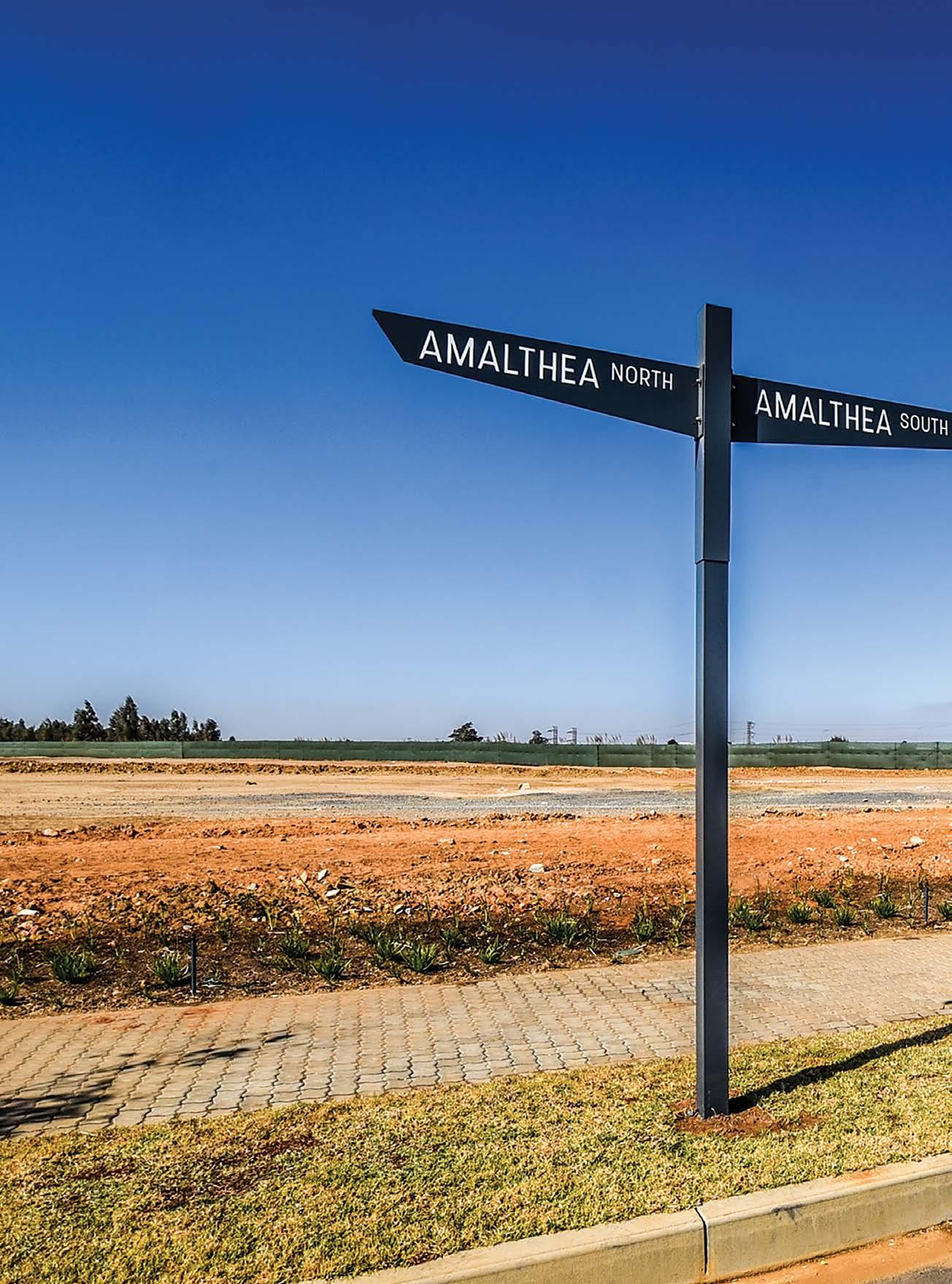
PROJECT
84 POSITIVE IMPACT ISSUE 20

It’s a South African first for the continent. Unpacking the innovative ecodistricts concept that is developing collective, sustainable planning on a neighbourhood scale.
WORDS Kim Maxwell
85POSITIVE IMPACT ISSUE 20 URHOOD Redefine
TheEcoDistricts Protocol (EP) promotes a new model of urban development to empower just, sustainable and resilient neighbourhoods. Projects that demonstrate a commitment to equity, resilience and climate protection, through the formation of collaborative governance to oversee planning and implementation of a roadmap to move to carbon neutrality. It’s an approach regarded internationally as a new public-private partnership model, emphasising innovation and deployment of district-scale best practices to create future neighbourhoods that are vibrant and resource-efficient.
The S&J Industrial Estate in Germiston is the first project outside North America to secure EcoDistricts™ certification. Redefine Properties and Abland Property Developers joined forces last year on the project, with project guidance provided by Solid Green.
At 160 hectares, (first phase of EcoDistricts certified endorsement) within a 210-hectare property located between the Geldenhuys and Elandsfontein interchanges on the N3 highway, S&J forms part of Ekurhuleni Metropolitan Municipality.
“To be part of the team that has taken land that forms part of the undeveloped mining belt in Johannesburg and convert this to an industrial estate, now recognised as an EP initiative, is extremely exciting and a great achievement to all involved,” says Chris Roberg, Abland’s director responsible for S&J Industrial development. He says it aligns with Abland’s drive toward sustainability, evidenced by various commercial projects that have international green-star ratings. But what do those principles really mean, for those in the sustainable industry? A core distinction: EP is a tool to transform a neighbourhood. You’re not working for one business or one construction company. You’re working with a whole neighbourhood – say, all of Sandton – to get to carbon neutrality, using this framework.
The EP was inspired by the concept of collective impact, a “collaboration framework to achieve large-scale social change” that requires a range of interested, affected stakeholders and role-players to “collaborate in defining the interventions required to achieve significant improvement in equity, resilience and climate protection”.
The EP is structured like a doughnut. “First are three imperatives: equity, resilience and climate protection,” explains Adrie Fourie, head of Solid Green’s department of sustainable cities and research. “Next up: six priorities that enable projects to define their sustainable strategy, in response to the 20 objectives categories.” The outer ring includes three implementation phases: formation, development of a roadmap and reporting on performance every two years.
THREE IMPLEMENTATION PHASES
FORMATION
Build the necessary leadership, collaboration and decision-making conditions to support effective action.
ROADMAP
Assemble a comprehensive action plan of performance targets, feasible strategies for achieving the targets, and a schedule and resources for implementation.

PERFORMANCE
Implement the roadmap, report progress towards targets and use results to strengthen performance and transfer lessons learned.
As teams work through the EP and how it relates to their specific project and context, they identify challenges and opportunities to address through projectspecific interventions. Says Fourie: “This work is supported by the guidance provided by the priorities and associated objectives categories that projects use to identify their specific roadmap to carbon neutrality.”
CITY OF JOHANNESBURG PILOT
Solid Green laid the groundwork locally when the company was appointed by the City of Johannesburg (CoJ) to test the EP methodology in 2020. “For CoJ, the focus was to test the methodology on a pilot neighbourhood. To determine the useability of the protocol as an approach to facilitate mainstreaming of the commitment to carbon neutrality. Through it, we created a tool to calculate energy-use intensity and its associated carbon emissions profile that projects address to reach carbon neutrality. The City will reference these findings in various policies moving forward, to strengthen their approach to a low-carbon future,” explains Fourie.
Our purpose is to create and manage spaces in a way that changes lives.
86 POSITIVE IMPACT ISSUE 20 PROJECT
ecodistricts.org
Liana Strydom, assistant-director: regional planning, city transformation and spatial planning for City of Johannesburg, describes its EP work with Solid Green as in “the realm of conceptualising a carbon emissions model,” based on Orange Grove, a real neighbourhood. “We started in 2020 and aim to complete our work this year. We’ve developed an understanding of what the current (baseline) energy-use profile and carbon-emissions profile of the neighbourhood looks like, and what interventions would be most appropriate (and affordable) to reduce carbon emissions, also for the ‘projected growth/potential future redevelopment’ of the area,” says Strydom.
“Given that energy use is a major contributor to emissions, interventions focus on this aspect. Because the City recently approved its first Green Building Policy for New Buildings, we used achieving net-zero buildings for new development as our target. This aspirational
target highlights not only significant changes required for our building industry but emphasises that solutions present themselves on a precinct/district level that require innovation and systems approaches.”


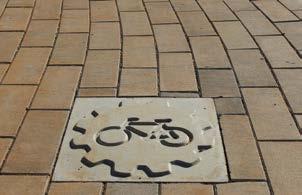
VALUE-ADD


This testing showed that an EP could be applied successfully in South Africa. “Our CoJ perspective is definitely not to force any development to become certified as an EP –but the protocol provides helpful process guidance to ensure more inclusive and climate-oriented planning at a neighbourhood scale. It also strongly emphasises collaborative actions and responsibilities – not any one party being responsible for everything,” says Strydom. “Our value-add is creating a practical model for the emissions
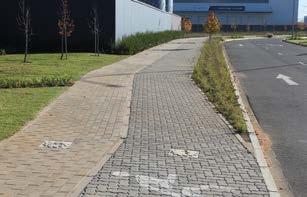

87POSITIVE IMPACT ISSUE 20 PROJECT
Redefine
The EcoDistricts Protocol is a framework for urban development and regeneration, rather than something linked specifically to the construction industry.
modelling for different scales of development, developed for our local context.”
Fourie says that while the CoJ project didn’t intend on pursuing EP certification, crucially, it provided the opportunity to test an international certification framework in a South African context, and to identify “robust response to pressures” that local neighbourhoods or precincts experience.
OPENING THE DOOR
In 2021, Redefine and Abland had Solid Green steer them through the relevant EP processes for the certification of S&J Industrial Estate. These included identifying the steering committee for the certification process and facilitating the development of all supporting documentation to collectively create “the initial framework to progress towards a model rooted in community sustainability, ecological awareness and conservation”.
“Our purpose is to create and manage spaces in a way that changes lives, and therefore we are entrenching ESG into everything we do. This requires an integrated approach to making strategic choices that will sustain value creation for all stakeholders through focusing on what matters most,” says Anelisa Keke, Redefine’s chief sustainability officer. “The EP success is a crucial steppingstone, and endorsement of the progress we’re making to ensure a better future for all South Africans.”
URBAN FRAMEWORK
Fourie stresses that EP is a framework for urban development and regeneration, rather than something linked specifically to the construction industry. “Yes, it links to construction, but only in this instance, where S&J Industrial Estate is new. So, it’s about the design phase, but will carry on beyond that.”

Unlike other tools, the EP requires long-term commitment and performance reporting to retain certification, and that is where significant value is captured. “Projects keep track of their progress to the end goal of carbon neutrality by tracking indicators linked to each strategy, project and programme identified, in response to the six priorities and 20 objectives categories,” says Fourie. “They will need to course-correct when the planning does not deliver expected
results, and teams constantly review their achievements, assess changing market conditions and incorporate more stringent environmental or sustainability targets that government might set.”
“EP is being described as a new urban development framework, according to what you’ll do with it. This is not as-built and designed; this is committing to a process. With reporting back every two years, on your process. Is it still financially viable, will you measure anything differently?”
There’s no clear, “Oh, this is what you do to become carbon neutral” criteria. That makes the process different. “The EP enables project teams to identify interventions that address their specific challenges.” It’s a framework that gets a commitment as a collective impact as a group of stakeholders, as people that work together. “Every project will have a different energy-use intensity profile, and tailored efforts to reduce that profile. Some interventions might be universal, but projects have the flexibility to identify which are appropriate in that context.”
Projects are inherently distinct too. “We know from work with CoJ that in housing, hot water is the biggest electricity user. So, the interventions will be focused on that,” says Fourie. In offices, it could be lights or perhaps HVAC. Interventions identified in response to detailed assessments conducted around energy use.
The EP philosophy is that cities where the most vulnerable groups are integrated into the planning and implementation process, given a voice and involved in the decision-making will respond better and with longerlasting growth.
“EP is not about responding to a predetermined set of credit criteria. It’s about each project collective using the protocol to develop a project-specific action plan. It’s really about the commitment to the process of reaching carbon neutrality and the long-term performance reporting process that is being certified, and not the specific actions that projects will take, to do so.”
88 POSITIVE IMPACT ISSUE 20 PROJECT
The EcoDistricts Protocol enables project teams to identify interventions that address their specific challenges.
Redefine
The EcoDistricts Protocol is described as a new urban development framework. It is about committing to a process.
S&J Industrial Estate strikes the perfect balance between prime industrial features and sustainable solutions. This commitment to creating a superior space that allows businesses and the environment to coexist has been rewarded with the first EcoDistrict TM certification on the African continent.

First on the African continent
Proudly developed by









CONTACT US FOR PRIME INDUSTRIAL SPACE TO LET | FOR SALE | TURNKEY DEVELOPMENT
Chantelle Mathomes 010 040 7571 | info@snj.co.za
CEMENT AND CONCRETE SA (CCSA) ANNOUNCE NET ZERO CARBON VISION BY 2050 FOR PARTNER MEMBERS
“In order to comply with CCSA climate change commitments in line with the national NDC and Paris agreement, CCSA Partner member companies aspire to net zero emission by 2050 with milestones informed by decarbonisation along a 1.5-degree trajectory. The key initial milestone will be set at 2030,” says Dr Dhiraj Rama, CCSA Industry Executive.
“Thenet zero target boundary is based on the Greenhouse Gas (GHG) inventory target as per RSA GHG Technical Reporting
Guidelines for the cement sector in line with the Intergovernmental Panel on Climate Change (IPCC) reporting framework,” Dr Rama stated.
Dr Rama will provide adequate support, direction and leadership to members and will also monitor progress at sector level. He says key matters to note include:
• The net zero target monitoring covers both Scope 1 and Scope 2 emissions of the company.
• With supported technology interventions, as well as improved overall nationally-developed Scope 3 emission monitoring programs implemented by stakeholders, the GHG invent1ory would be expanded accordingly.
• The trajectory is based on the understanding that the cement sector is a hard-to-abate sector and would be supported by:
Technical, technological and fiscal support as per the CCSA overall national NDC commitment to UNFCCC proviso.
Appropriate policy implementation and support to secure both green energy and alternate fuels and resources.
Optimising operation of current production plants as practically feasible until the end of the plant’s life cycle.
All future plants will ensure emission-efficient technologies.
Access to carbon offsets.
• The climate response action will be underpinned by “just transition”.
• The overall consolidated CCSA sector performance of the GHG emission profile will be transparent by reporting performance on a regular basis. CCSA will ensure sectoral support to its members to comply with regulatory requirements. Key requirements include compliance to:
• Draft methodological guidelines for quantification of greenhouse gas emissions. The Draft Methodological Guidelines can be downloaded by members of the public at the website link: https://www.environment.gov.za/ legislation/gazetted_notices. (Government Notice 135 dated 19 February 2021.)
• Technical Guidelines for the Validation and Verification of Greenhouse Gas Emissions as per “Technical guidelines for monitoring, reporting and verification of greenhouse gas emissions by industry: A companion to the South African National GHG Emission Reporting Regulations Version No: TG-2016.1 June 2016.” (Government Notice 1496 dated 12 November 2021.)
Cement and Concrete SA is the united platform for cement and concrete in South Africa. CCSA’S portfolio of services and events creates value for all its members through tailored categories of benefits aligned with different member profiles. Membership of this professional body confirms a commitment to ensuring an environmentally responsible and dynamic industry.
The partner members of CCSA are: AfriSam, Lafarge. PPC and Sephaku.
Individual and retired members accept membership in their personal capacity, while corporate members are companies that may join at various levels of benefits and costs. These companies benefit from affordable and targeted marketing to broaden their reach, create brand awareness, and remain competitive and relevant in the market.
A range of technical publications are available from the Information Centre, while professional online and classroom-based education offered by the School of Concrete Technology will accelerate a career in concrete technology. Contact the SCT to discuss the best concrete technology educational path through a range of internationally recognised courses for anyone interested in mastering concrete.
More information can be found on the CCSA website. For further information: contact Dr Dhiraj Rama on email dhiraj.rama@cemcon-sa.org.za. www.cemcon-sa.org.za
Cement & Concrete SA Tel: 011 315 0300 or 011 592 3910 www.cemcon-sa.org.za

90 POSITIVE IMPACT ISSUE 20
CEMENT AND CONCRETE INDUSTRY





Clear vision is essential for success Become a member – be part of the future
www.cemcon-sa.org.za
Delivering sustainable development finance to the right business at the right time creates a positive change.
A better PLANET
Over the past decade “sustainability” has become a global buzzword. But the imperative behind the word is more than a tick-box exercise. Adopting ESG criteria should become part of a company’s business ethos rather than be used as just a marketing tool.
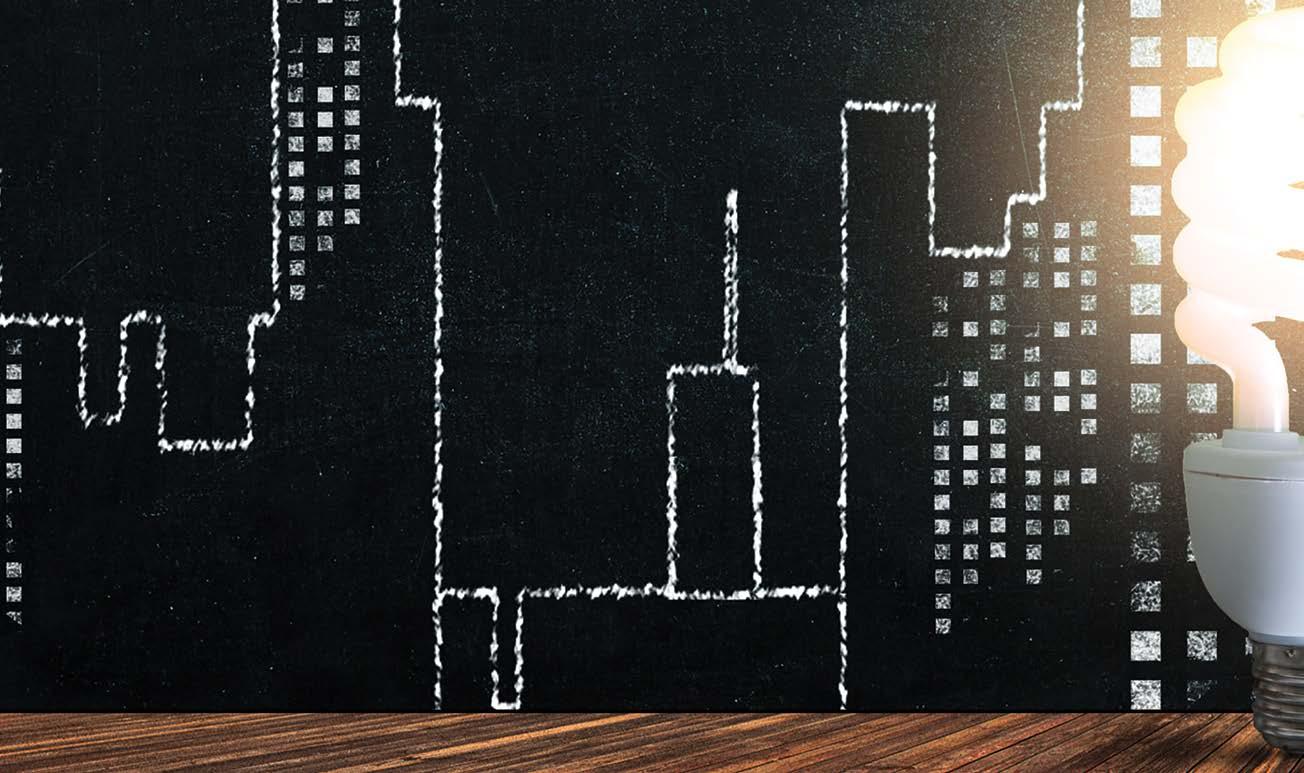
WORDS Mark Boshoff, Nedbank

THOUGHT LEADERSHIP 92 POSITIVE IMPACT ISSUE 20
While its impact is broader, franchising in South Africa is already embracing ESG criteria to ensure the industry becomes a better steward of the planet. South Africa’s franchise sectors such as food, fuel, retail and automotive rank among the world’s top five for economic output as a percentage of GDP.
According to the Franchise Association of South Africa, the country’s franchise industry contributes around 15% (R721-billion) to GDP, putting it on par with the likes of France, Australia, New Zealand and the Netherlands. What’s more, on average the franchising industry contributes 2.7% to the national GDP of nations in which members of the World Franchise Council operate.
Therefore, it makes business sense for investors, shareholders, employees, consumers and society to adopt responsible consumption and business practices collectively. The key climate change principles that franchises should focus on involve identifying and quantifying the risk, as well as resilient strategies that would allow for portfolio tilt, ie moving away from sunset sectors towards new sectors emerging from the climate change movement. Transitioning away from fossil fuels to renewables would be a first step. Another step is to reduce the business’ carbon footprint by lowering transport costs.
These changes would send a clear message that the company is seriously relooking its own operations and activities in line with its sustainability commitments, to ensure perceptions change and that they are seen as a caring rather than an exploitative enterprise. This not only makes business sense, but it would also make an employer attractive to like-minded workers: businesses would be better able to retain employees who are aligned with sustainable business practices, having hired them in line with recruitment policies aimed at identifying applicants who would ultimately foster the company ethos and training them
to practise responsible ethics in business and operations.
One of the main legacies of the Covid-19 pandemic is remote working, which forced businesses into changing the way they operate while also showing resilience to overcome unprecedented challenges. This has made the need for sustainability on all fronts clear.
Many fuel and retail franchises have shifted their focus to embracing renewable energy. Solar technology has come a long way and grid-tied solar plants offer cost-effective solutions to forecourts by drawing on renewable energy.
In 2015, the United Nations adopted the Sustainable Development Goals, also known as the Global Goals, as a universal call to action to end poverty, protect the planet, and ensure that by 2030 all people enjoy peace and prosperity. However, according to Euromonitor International, a London-based market research company, there are five key trends affecting the global sustainability agenda one must be wary of. They include climate action, circular economy, commodity price volatility, resource security and environmental pollution.
Keeping abreast of these trends as they evolve beyond the pandemic and understanding the link between them, and business performance will help companies identify risks and new opportunities related to sustainability.
As part of the launch of its Commercial Banking climate resilience digital campaign, Nedbank is playing a key role in supporting sustainable business practices for the future, with the emphasis on funding solutions in respect of renewable energy, clean water and sanitation as well as waste management.
Delivering sustainable development finance to the right business at the right time creates a positive change to ensure that not only businesses prosper, but also the people and planet too, and that further harm to our environment is halted and reversed. The franchising sector is primed to play a key role in this regard.

THOUGHT LEADERSHIP 93POSITIVE IMPACT ISSUE 20
Off the GRID


The economic challenges in South Africa are daunting. When coupled with the impact of loadshedding, there are compelling reasons why SMEs seek out alternatives to the current reliance on a power grid that is not stable.
WORDS Alan Shannon, Nedbank
94 POSITIVE IMPACT ISSUE 20 THOUGHT LEADERSHIP
South Africa will undoubtedly benefit from a move towards greener technologies and so will the planet.
Right now, a wait-and-see approach is less appealing as many businesses seek to avoid the losses incurred during power outages, coupled with tariff hikes and the additional measures designed to work around these issues. The urgency to act is there and each stage of loadshedding costs the country hundreds of millions of rands, according to the Council for Scientific and Industrial Research. With that in mind, should SMEs make the switch to sustainable options such as solar?
There is no doubt that South Africa, with its burgeoning population, represents one of the most attractive off-grid opportunities in the world for mini grids and solar technologies. The country also benefits from some of the most sustained sunlight in the world and many have pointed to renewables as the answer to the country’s electricity woes.

South Africa will undoubtedly benefit from a move towards greener technologies and so will the planet. It is, however, a business strategy that must be carefully considered, as the costs and implementation of going off the grid is not a one-size-fits-all approach. Clients are encouraged to assess the options with the same diligence as any other business investment.
Going off the grid will undeniably reduce your monthly bill and attract a growing number of environmentally conscious consumers, but the initial investment must be considered. Currently the costs do not deter many businesses from their initial enthusiasm. Factors such as storage or space required for the technology as well as possible downtime for installation must also be considered. Will those incredible solar-powered solutions affect your business insurance cover and costs? This must be explored as well. The result of sustainable solutions must include business sustainability. For large-scale manufacturing plants, there are already a host of success cases, but the same cannot be said for the SME sector.
With the costs of going off-grid likely to be more than most SMEs can afford, scalable, quality solar PV hybrid solutions still represent great value. They take care of a business’ immediate backup power needs during loadshedding and power failures, while opening the door to scale up in future to solar panels and additional batteries. From a hybrid solution that is more budget friendly, the switch to self-generating power, as costs go down, is largely a better approach for most SMEs already battling other market-related challenges.
A forward-thinking strategy that addresses both the current need and a future aim places a business in a stronger position to provide backup power and build a platform for saving a fortune in electricity costs in the future. It may not be time to go off-grid just yet, but there is every reason to start laying the foundation to reap the benefits.
95POSITIVE IMPACT ISSUE 20 THOUGHT LEADERSHIP
A MISSION IN ACTION
Built in 1893 at the height of Pittsburgh’s industrial revolution, Phipps Conservatory – a gift to the city from philanthropist Henry W Phipps – was brought into existence as a sanctuary, a verdant space where smog-weary citizens could find relief from the disreputable steel mills and smokestacks that relentlessly polluted their metropolis.
Today,

Phipps Conservatory and Botanical Gardens has evolved far beyond its own founding mission by reimagining and reinventing its campus, and establishing itself as an international leader in sustainable architecture
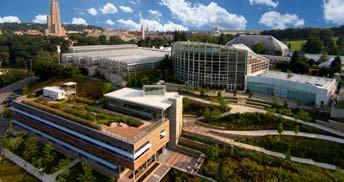



Phipps encompasses 15 acres including a 14-room glasshouse and 23 distinct gardens, industry-leading sustainable architecture and green practices, stunning



seasonal flower shows, exclusive commissioned exhibits, renowned orchid and bonsai collections.
The Phipps research centre, among the most energyefficient buildings globally, creates its own energy and captures all water and treats it on site. It is the first building in the world that has managed to reach all the types of certifications Four-Stars Sustainable SITES, Living Building Challenge, and WELL Building Platinum.”

GREEN GLOBE 96 POSITIVE IMPACT ISSUE 20
Paul g.
Wiegman
Harnessed from the Air. Used for hot water




304 ZA




WWK
Compact series specially developed for outdoor installation Also suitable for indoor installation (recirculation air mode) High available mixed water volume and hygienic DHW temperatures > 61 °C in heat pump mode Categorised in the highest possible energy efficiency class for water heaters Permanently high efficiency and safety across the entire service life of the appliance, due to spring-loaded roll-bond heat exchanger Reduced operating costs via intelligent interface to increase consumption of on-site photovoltaic energy Display of the currently available mixed water volume via the LCD Highly reliable and cost effective due to the impressed current anode integrated as standard Very quiet operation due to sound-insulated compressor and positioning away from the air flow Includes temperature and pressure safety valve (T&P valve) www.stiebel-eltron.co.za
Comfort
through Technology
THAT’S SUSTAINABILITY, FIRST.
Not only were we the first to measure kiln emissions in Southern Africa, we were the first to install bag-house filter technology to reduce kiln emissions, setting a benchmark for the industry by not only identifying a production problem but providing a productive solution. We were also the first to achieve a 90% reduction in particulate emissions and a 33% reduction in CO2 emissions because, as the leaders in sustainability, putting sustainability first has been, and always will be, second nature to us.
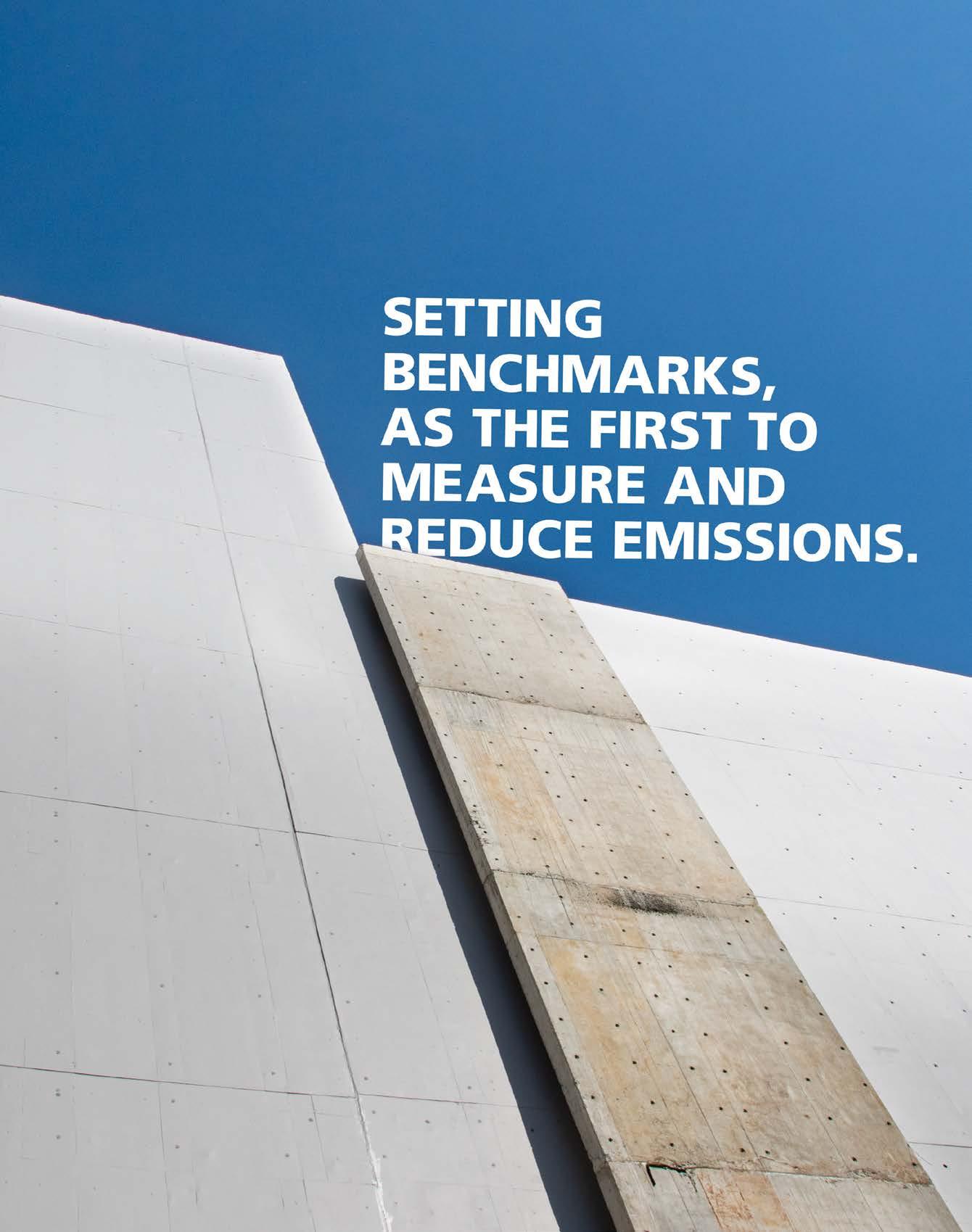
www.afrisam.com Creating Concrete Possibilities
1012337

 Official publication of Green Building Council South Africa
Official publication of Green Building Council South Africa





















 Alexis Knipe Editor
Alexis Knipe Editor

















































































































































































































































































 WORDS Nicole Cameron
WORDS Nicole Cameron






















































































































































